Given the current situation on the bird site, I thought it would be a good idea to backup the content I posted there. Along the years I posted in particular a lot of pictures of microfossils. From 2009 to 2014 the pictures were uploaded on a separate server so it will be a bit more difficult to access them in batch, so here are at least the ones from 2014 to 2022 (when I stopped posting content on twitter).
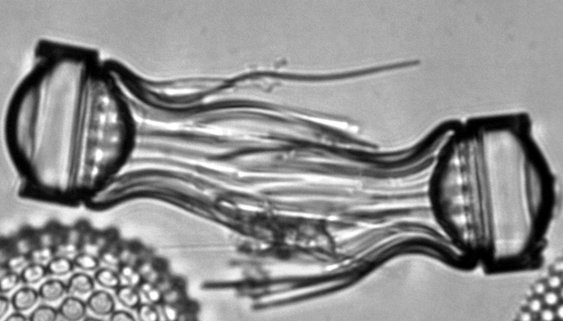
A couple of Corethron penicillum (Grunow) J.Fenner i found yesterday in the Paleocene of the South Pacific. #FossilFriday
2016-11-25 10:06:11
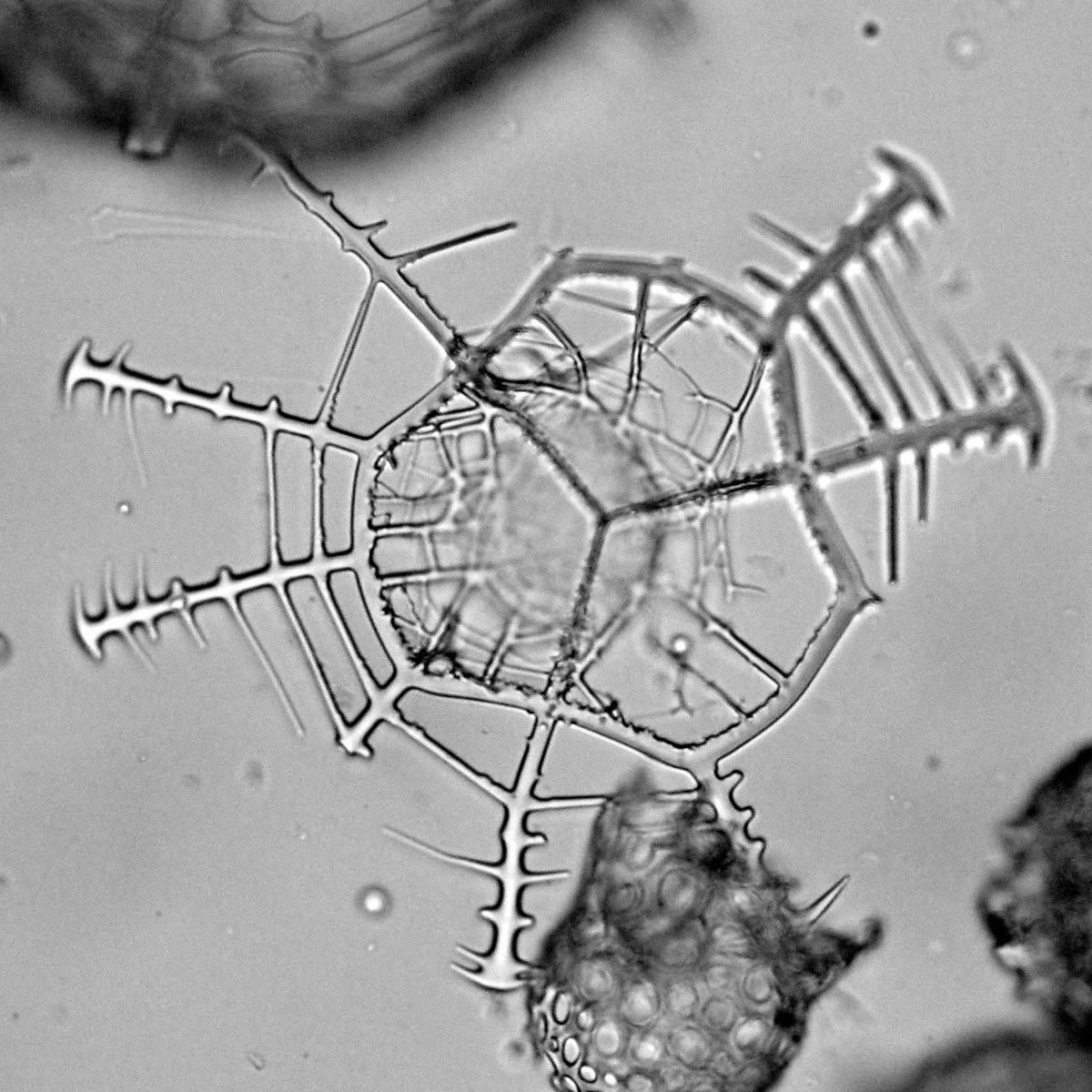
A classic: Enneaphormis rotula Haeckel 1881 (here from the Early Miocene of the Kerguelen Plateau) #FossilFriday
2017-02-17 15:08:13
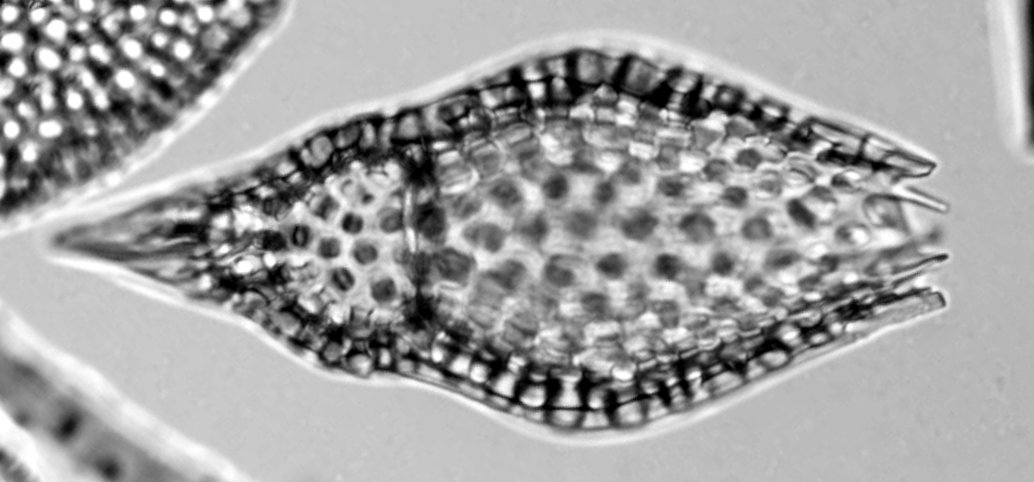
Phormocyrtis striata exquisita (Kozlova) Foreman 1973 (Late Paleocene, North Atlantic) #FossilFriday
2017-02-24 09:58:57
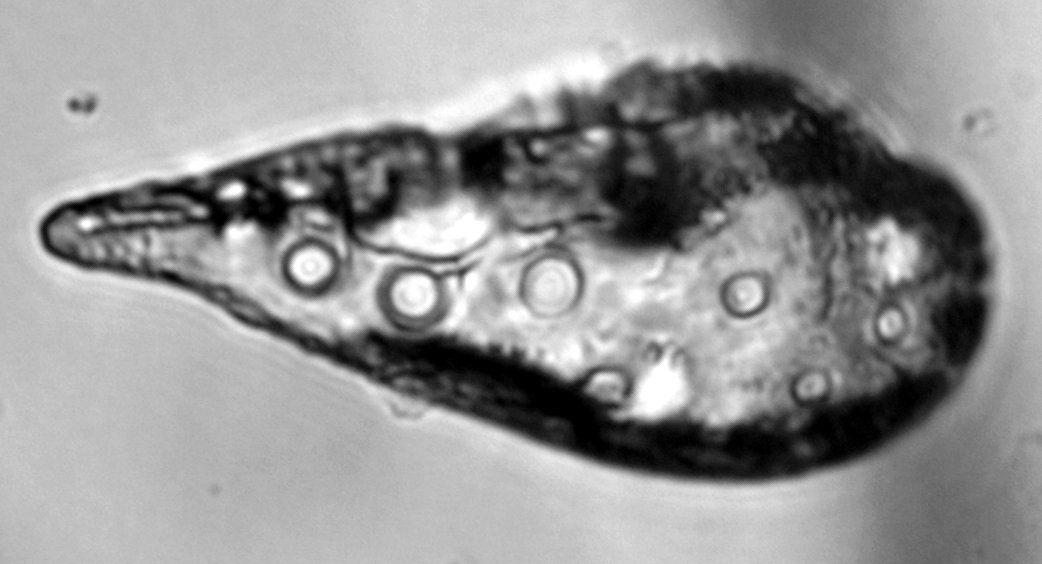
My first encounter with Micromarsupium anceps Deflandre 1934 (Ebridian) in the late Eocene of the Kerguelen Plateau #FossilFriday
2017-03-10 17:13:38
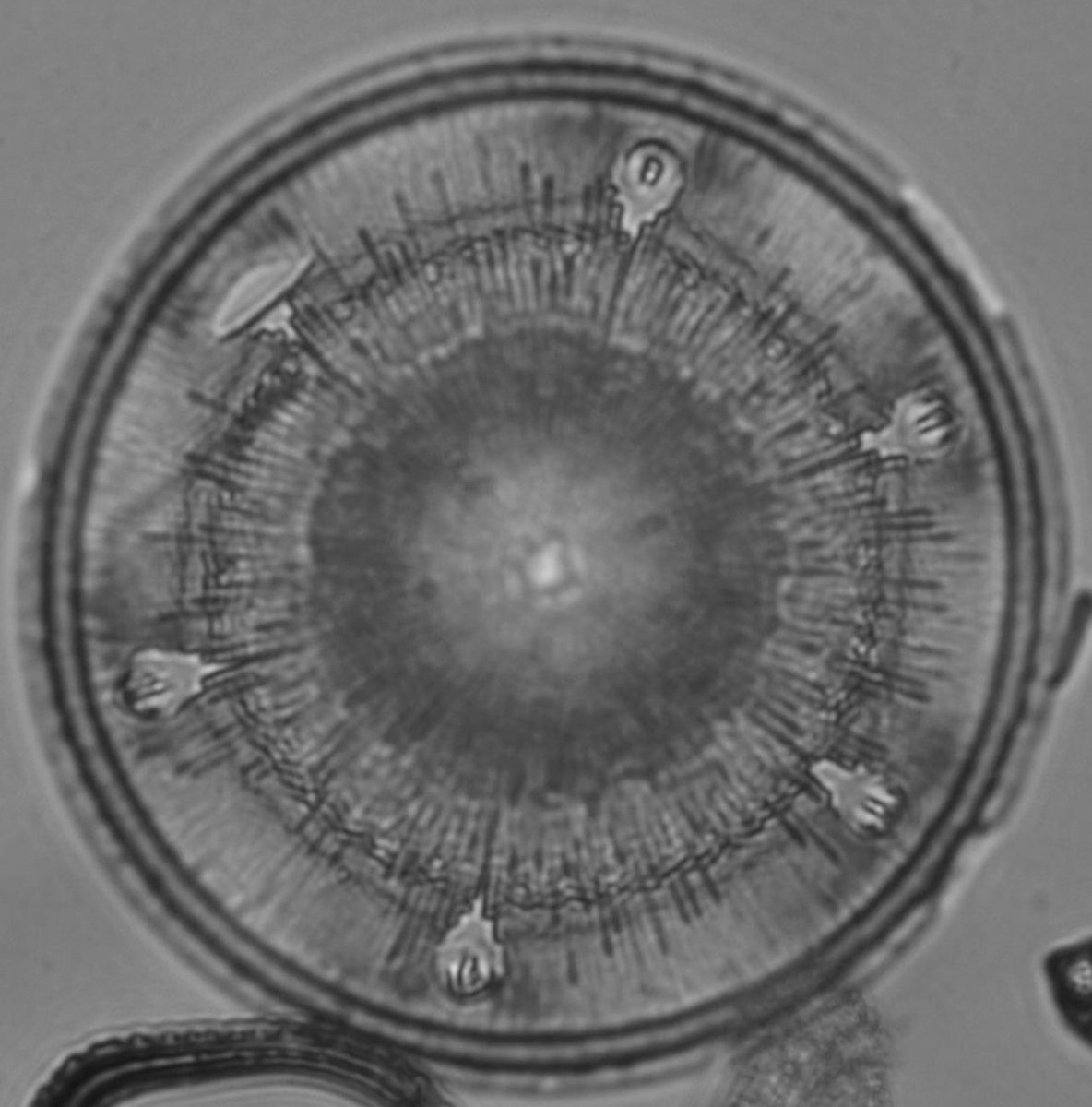
Yet-to-be-identified (Aulacodiscus?) diatom I saw yesterday in the Paleocene of the South Pacific #FossilFriday
2017-03-24 11:46:29
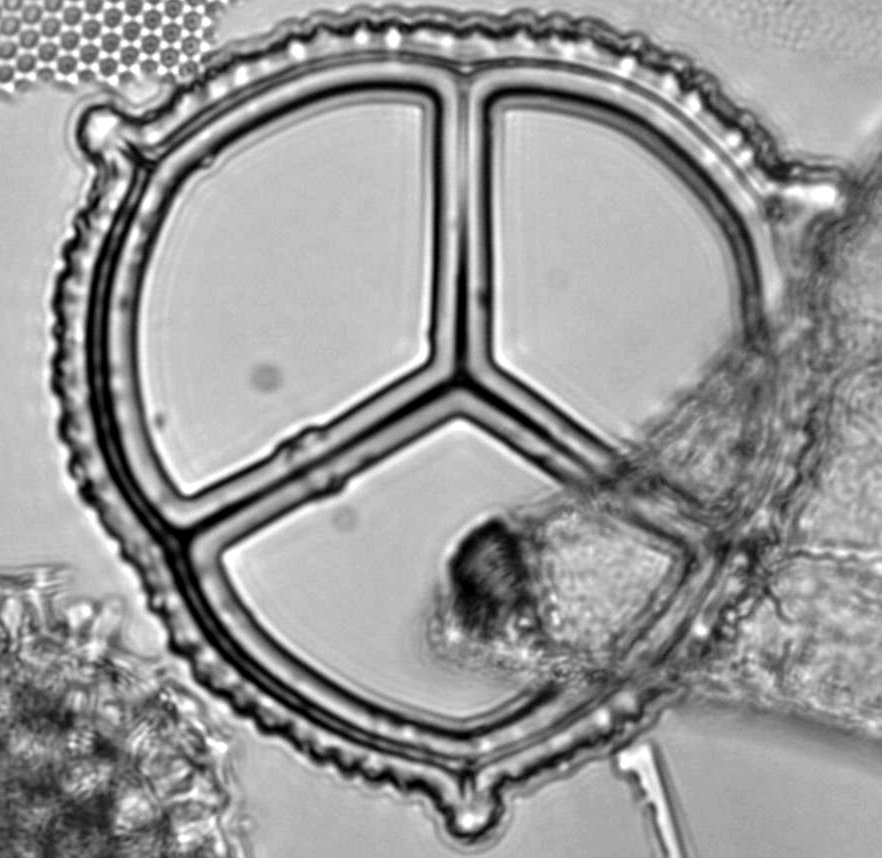
Paleocene silicoflagellate (from genus Corbisema, I would assume) from the same sample as last week's diatom. #FossilFriday
2017-03-31 13:07:01

Been taking pics on stereomicroscope lately: here is Eusyringium fistuligerum (Ehrenberg 1873) (Radiolaria, middle Eocene) #FossilFriday
2017-04-07 09:50:23
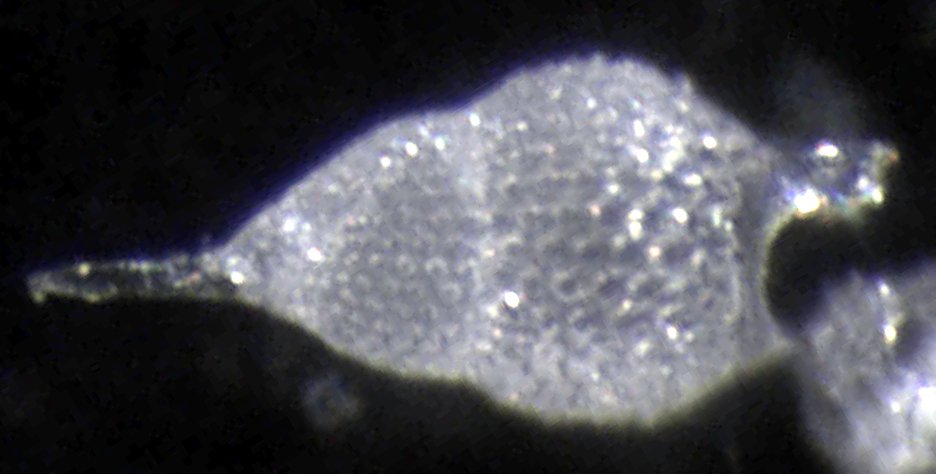
Thyrsocyrtis rhizodon Ehrenberg 1873 on the stereomicroscope (same species on transmitted light: https://t.co/gnNFtloqhB ) #FossilFriday
2017-04-14 13:43:38
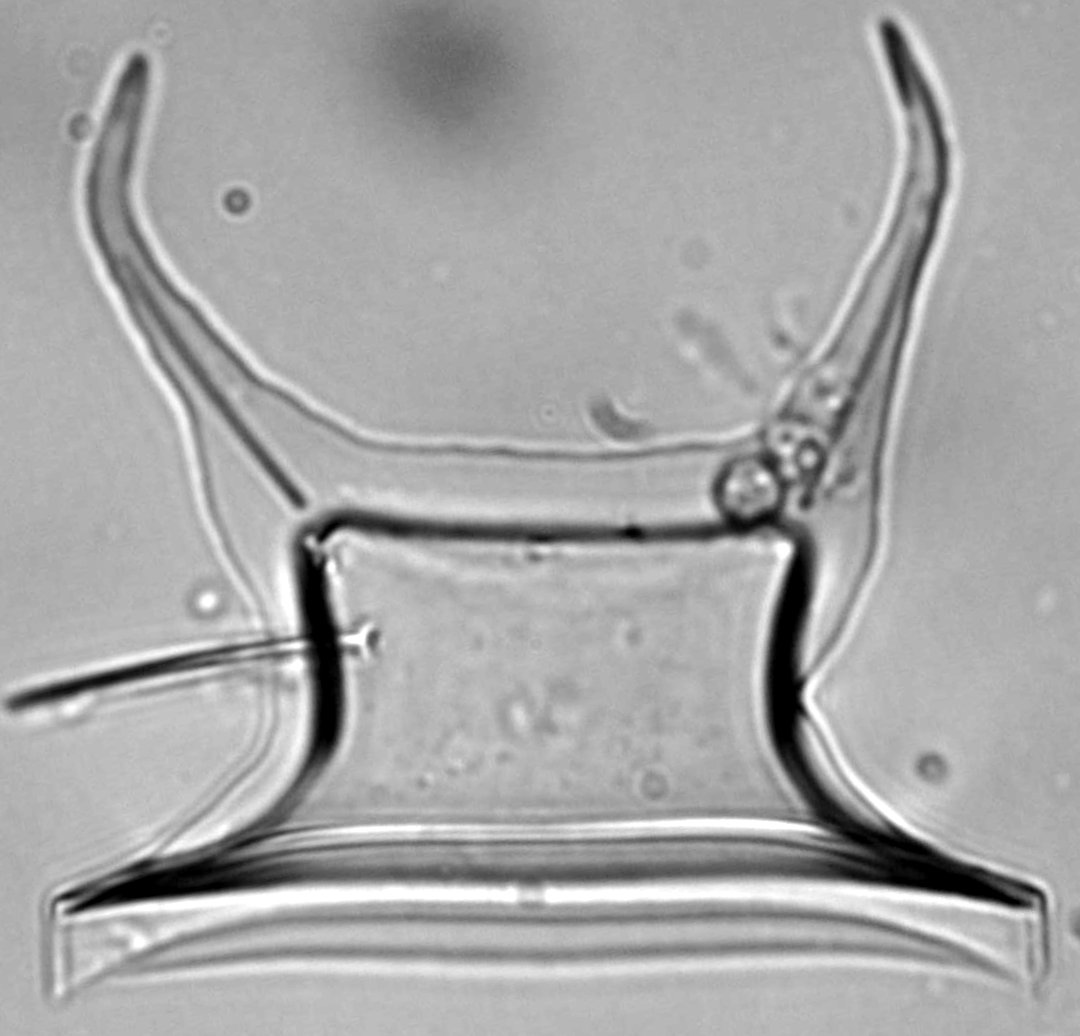
The Paleocene Odontotropis klavsenii Debes ex Hustedt 1930, here from the South Atlantic #FossilFriday
2017-04-21 10:12:18
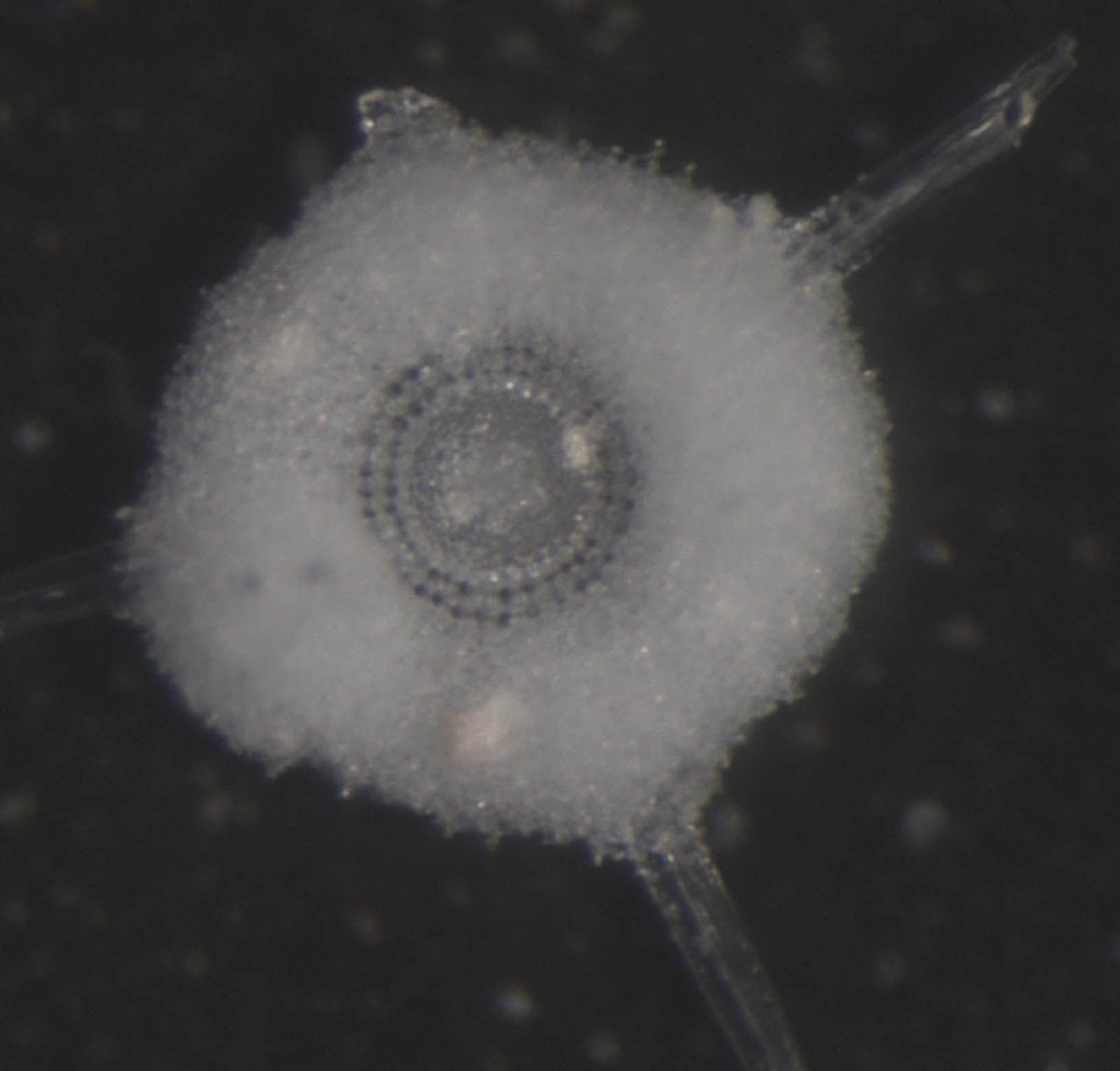
Lithocyclia ocellus Ehrenberg, 1854 from the late Eocene equatorial Pacific in stereomicroscopy. #FossilFriday
2017-04-28 10:26:04
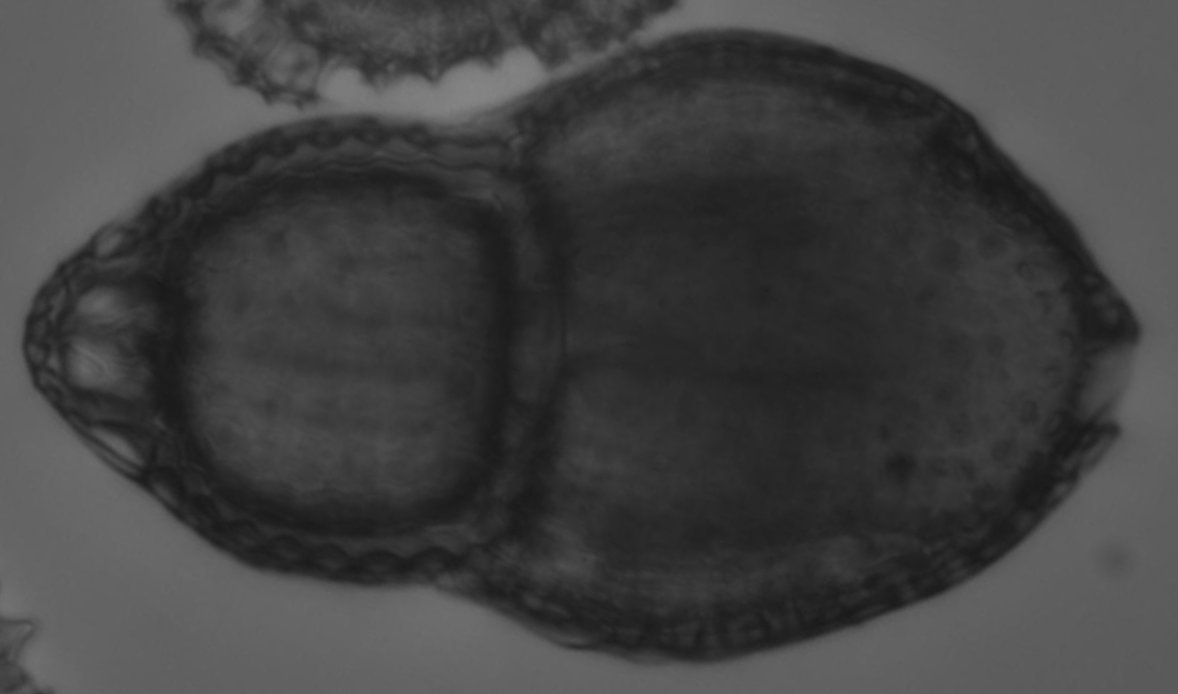
Myllocercion acineton Foreman 1968 from the Campanian(?) of the eastern Indian Ocean (ODP site 758A) #FossilFriday
2017-06-23 11:51:56
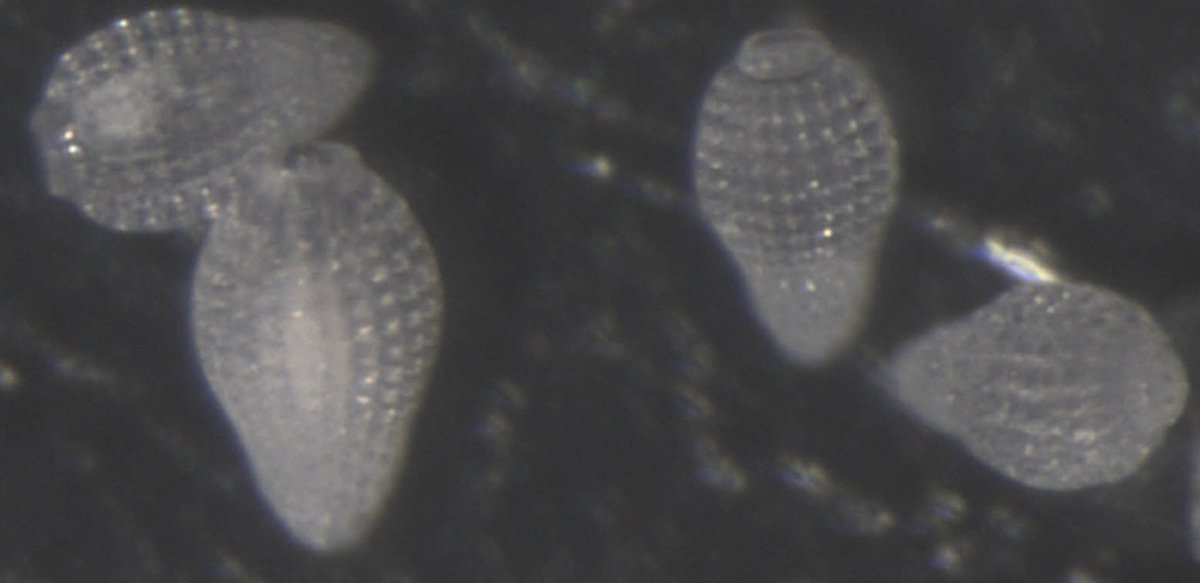
A bunch of Dictyoprora mongolfieri (Ehrenberg 1854) seen under a stereomicroscope. #FossilFriday
2017-06-30 17:17:56
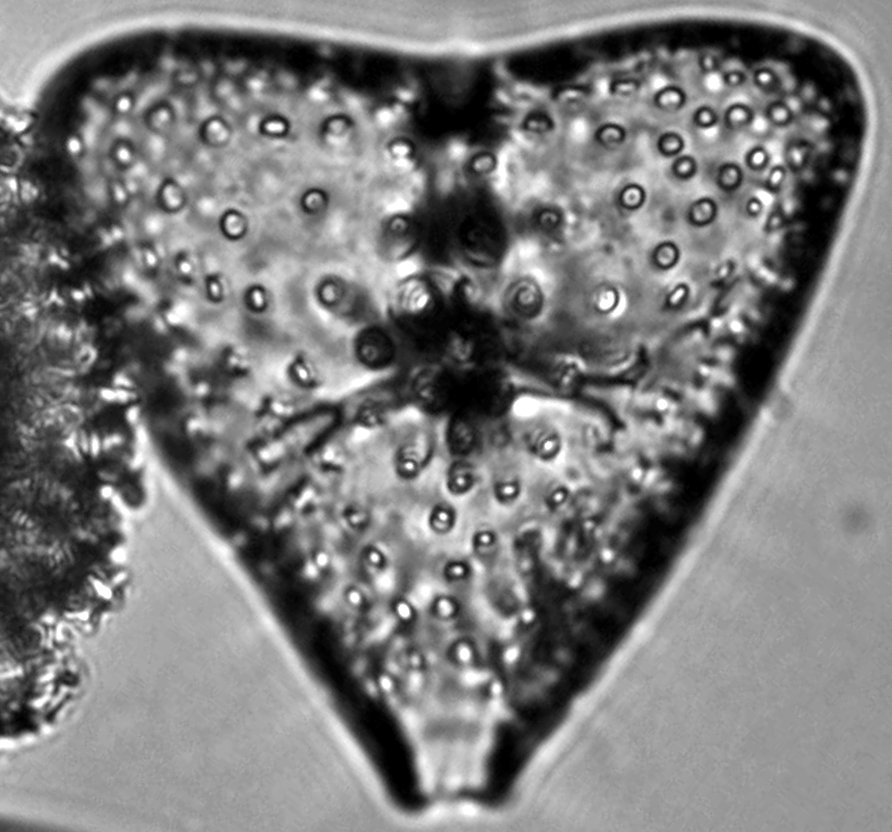
A Giraffospyris lata Goll 1969 (Radiolaria, Trissocyclidae) I saw yesterday in the Eocene of the Gulf of Mexico (DSDP Site 96) #FossilFriday
2017-07-07 10:32:47
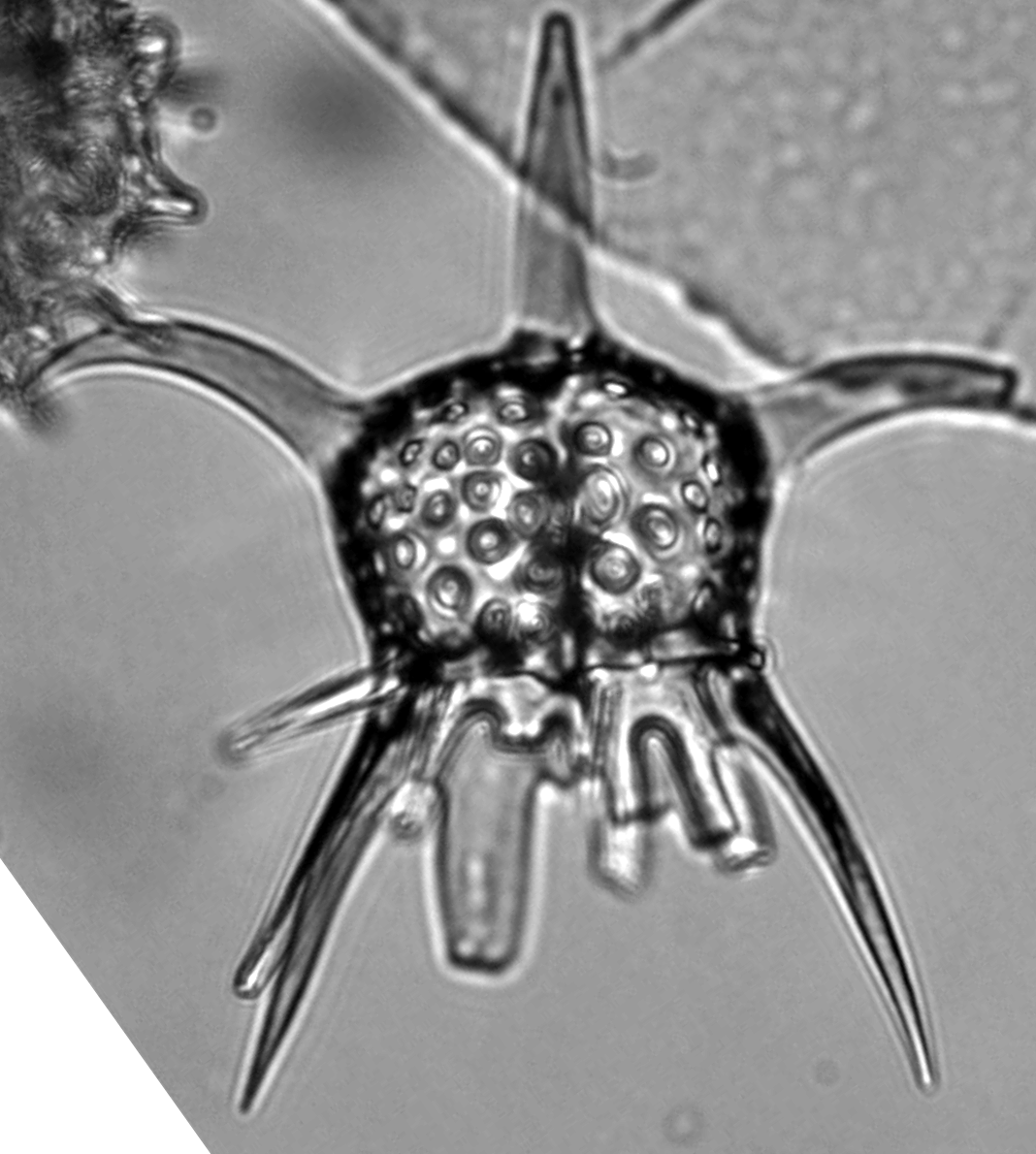
Another fun Trissocyclidae from the Late Eocene of the Gulf of Mexico (DSDP Site 95): Petalospyris diaboliscus Ehrenberg 1854 #FossilFriday
2017-07-14 10:57:45
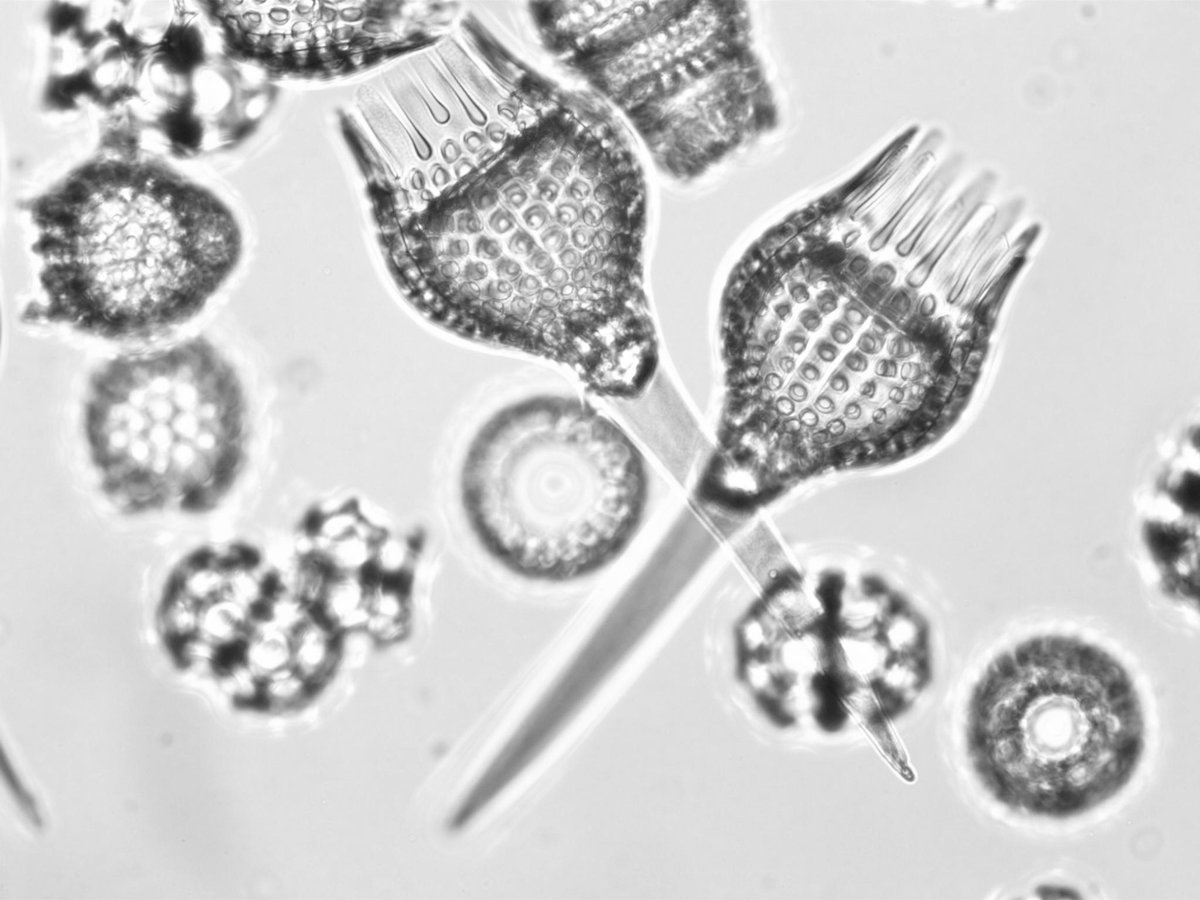
Here are two Calocycletta costata Riedel 1959 from the early Miocene of the Equatorial Pacific (DSDP Site 78). #FossilFriday
2017-07-28 10:42:04
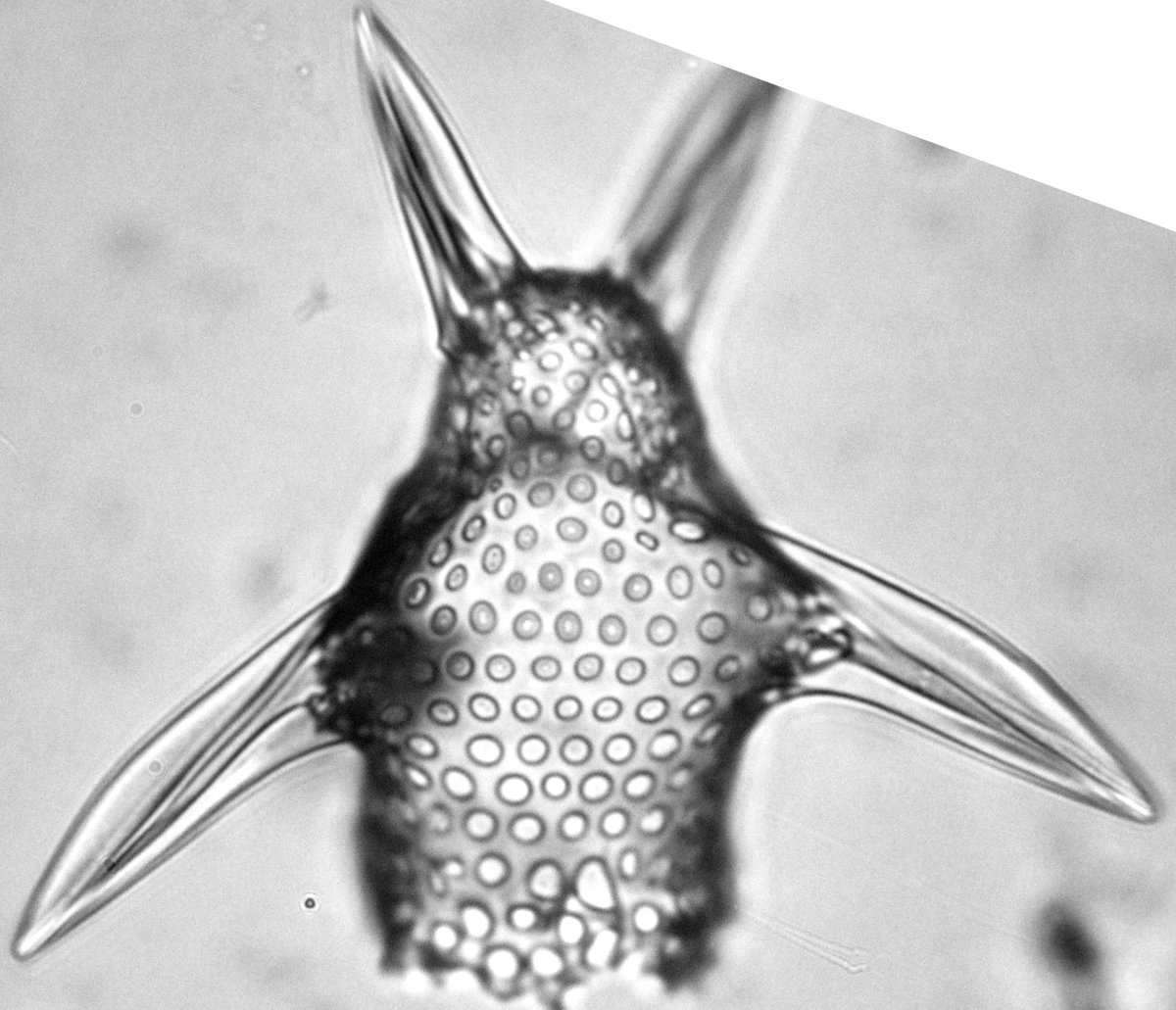
A weird nassellarian: Stichopilium bicorne Haeckel 1887. This specimen is from the Middle Miocene of the Kerguelen Plateau. #FossilFriday
2017-10-06 14:17:22
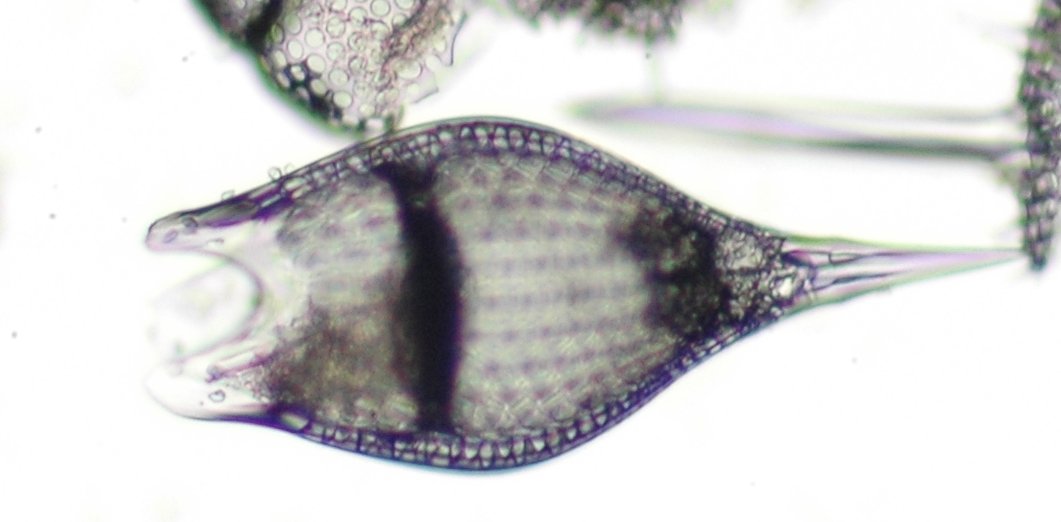
Oldie but goodie: Podocyrtis papalis Ehrenberg 1847 from the equatorial Atlantic (Eocene). #FossilFriday
2017-10-13 14:19:57
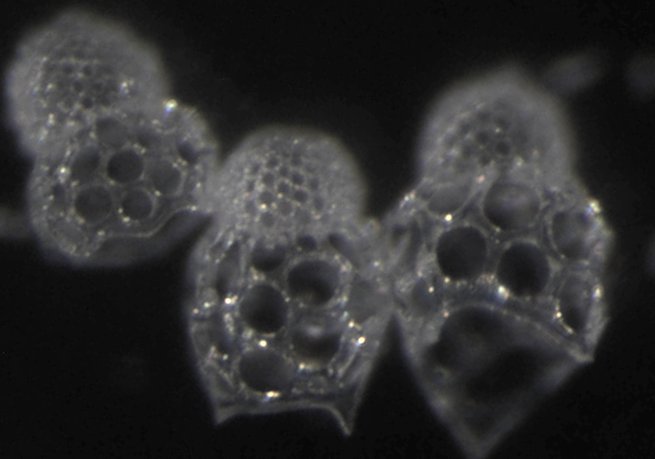
A bunch of cephalis-less Thyrsocyrtis bromia (Ehrenberg 1873) from the late Eocene Equatorial Pacific seen on stereomicroscope #FossilFriday
2017-10-20 12:15:19

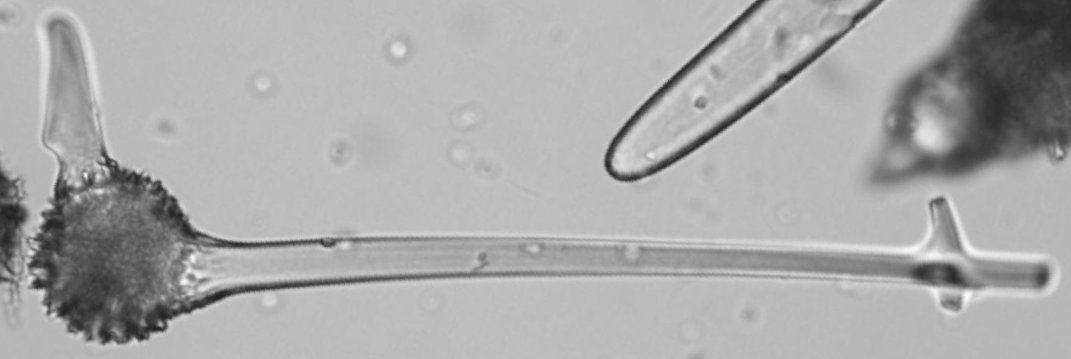
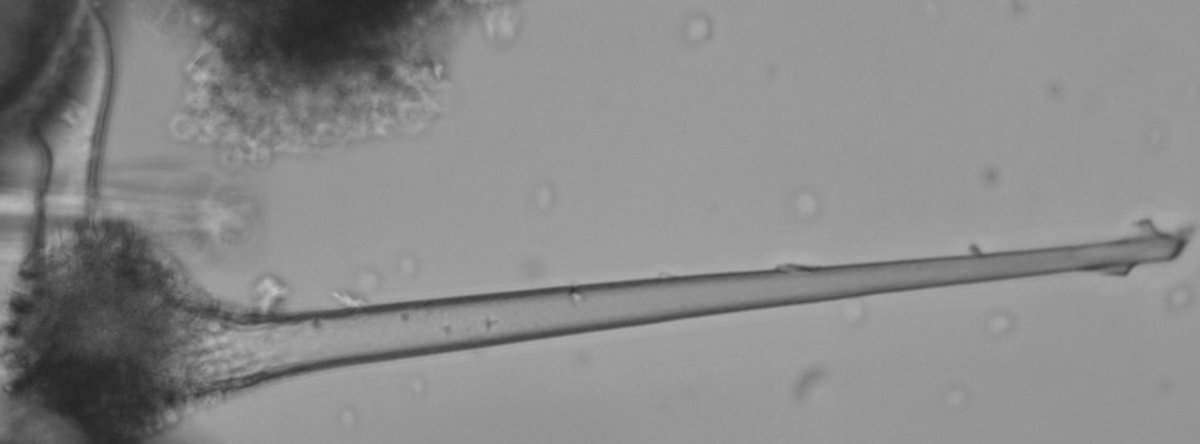
One of my favourite radiolarian: Rhabdolithis pipa Ehrenberg 1854 (here from the middle Eocene of the equatorial Atlantic). And because it's my favourite, here are 3 pictures of it. #FossilFriday
2017-11-10 11:06:58
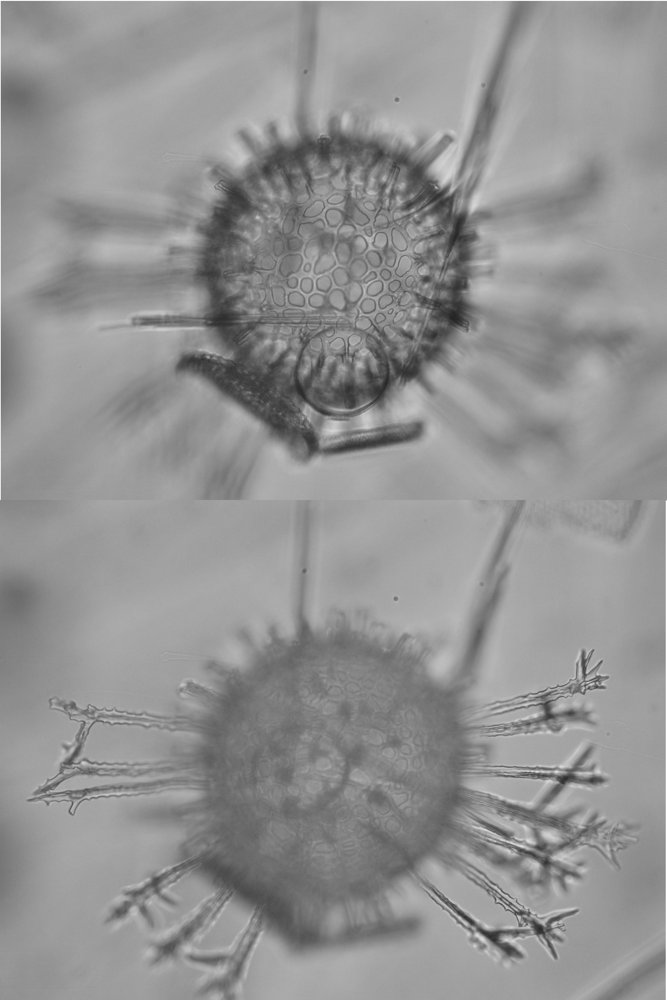
Though spumellarians are quite a hellish group to study, taxonomically speaking, I must admit some specimens are quite impressive looking. Here, a specimen of genus Cladococcus from the Middle Miocene of the Kerguelen Plateau. #FossilFriday
2017-12-01 13:11:16
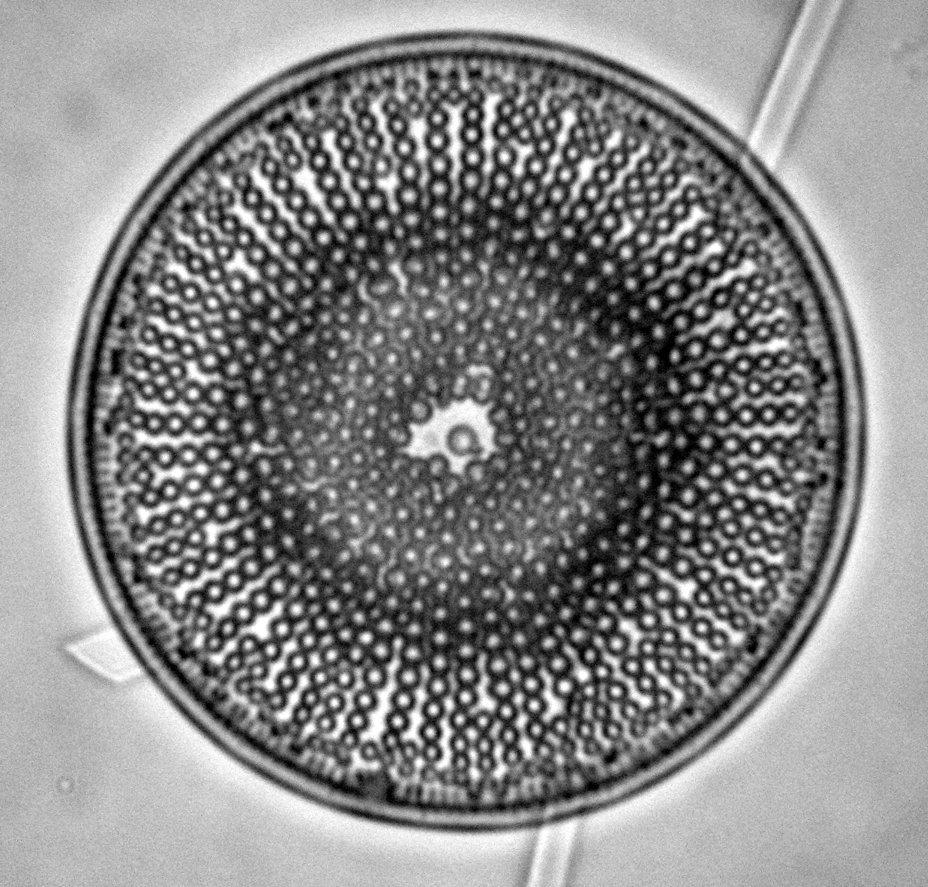
Because I haven't posted a diatom in a while: here is (what I believe to be?) Actinocyclus ingens J.Rattray 1890 from the middle Miocene of the Kerguelen Plateau #FossilFriday
2017-12-15 13:41:59
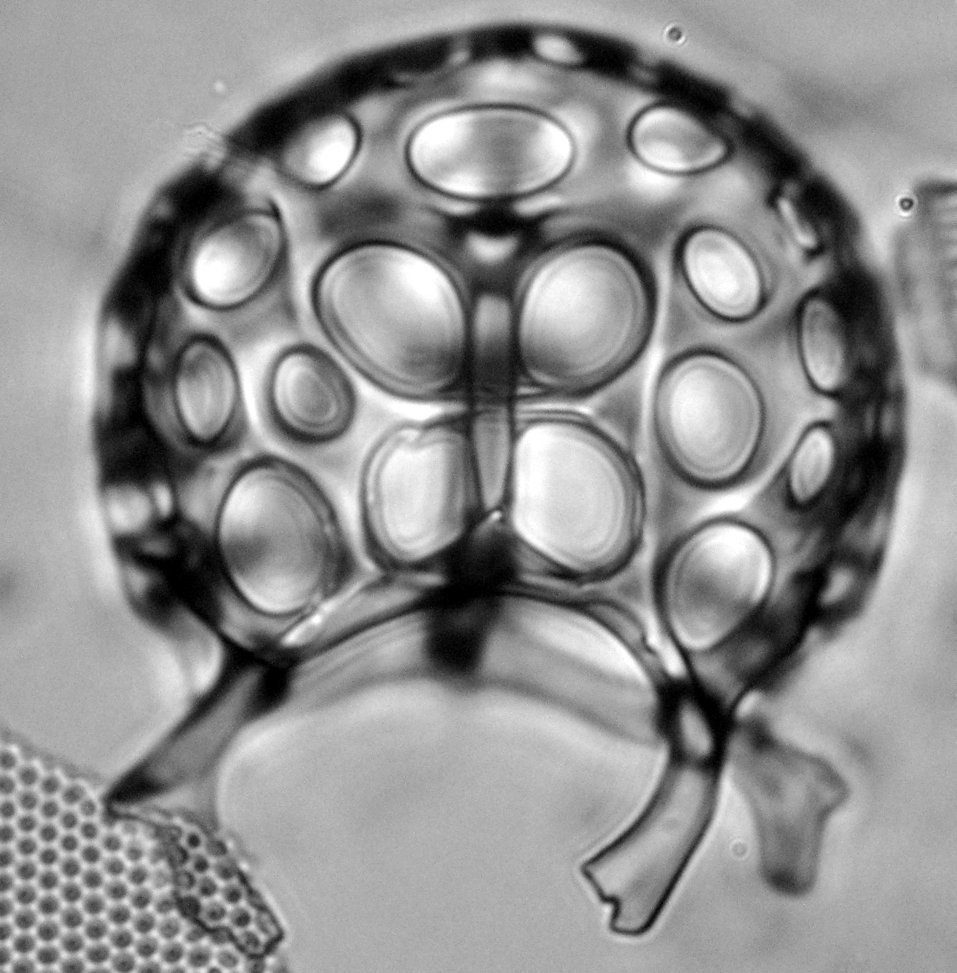
Found this picture I took 8 years ago of an unknown Trissocyclidae (Radiolaria) from the Late Miocene of the Kerguelen Plateau. Still have no idea of what species it is :)#FossilFriday
2018-01-19 14:09:54
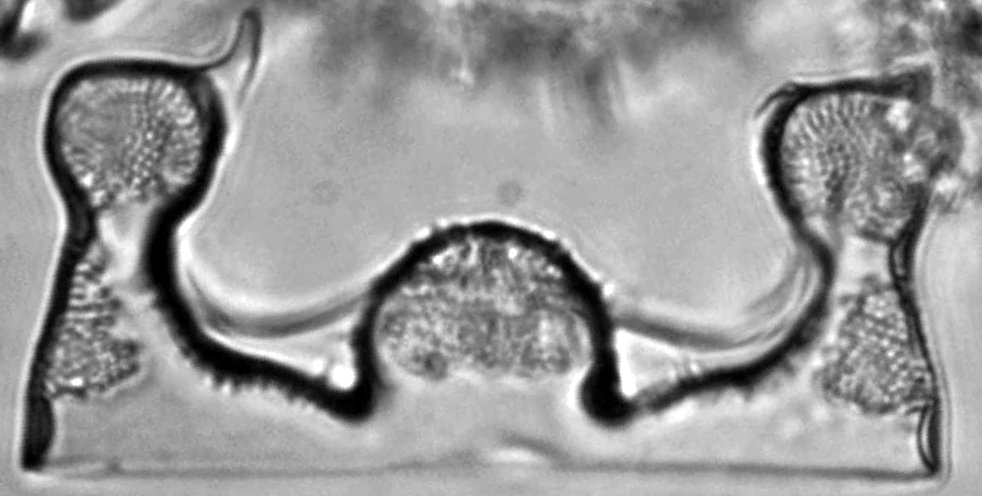
Back at my Paleocene diatoms since yesterday. Here is a Briggera includens (Grunow) Ross & Sims that I found a while back. #FossilFriday
2018-03-02 13:18:07
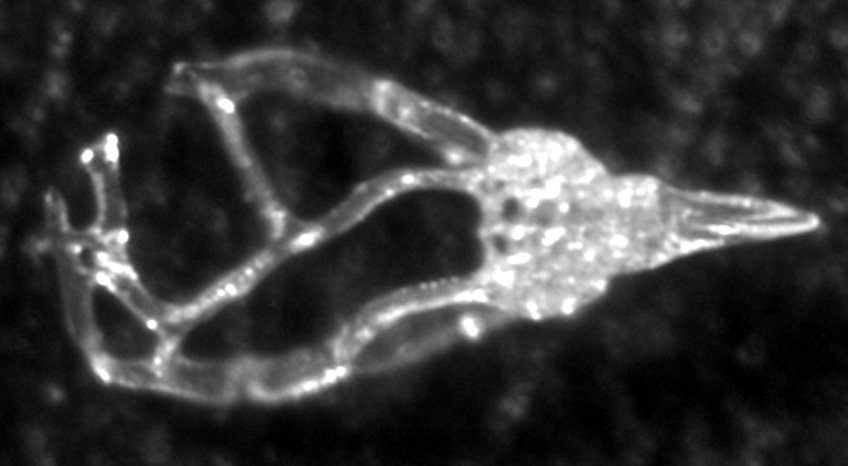
#FossilFriday Here is a funny looking, 'anomalous' Podocyrtis goetheana I also found 3 days ago in Eocene Pacific sediments. For a 'normal' looking one, see that 4 years old tweet: https://t.co/QrEE3ziJcb , or Nigrini & Sanfilippo's 'Technical Note 27': https://t.co/4U17IAAq88
2018-05-04 08:43:45
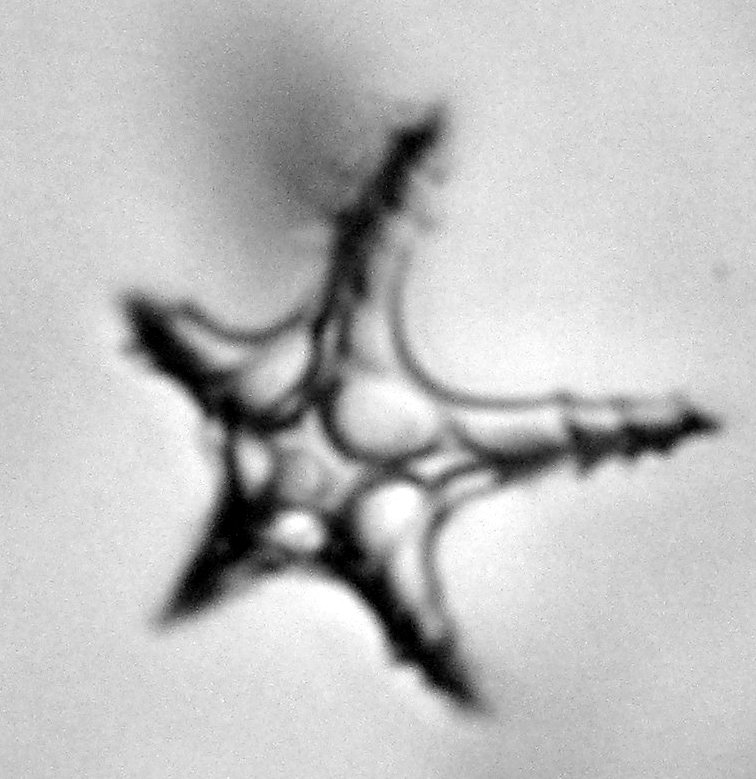
Actiniscus pentasterias (Ehrenberg) Ehrenberg: the tiny, siliceous endoskeleton of a dinoflagellate. Miocene, Southern Ocean. #FossilFriday
2018-05-18 16:20:18
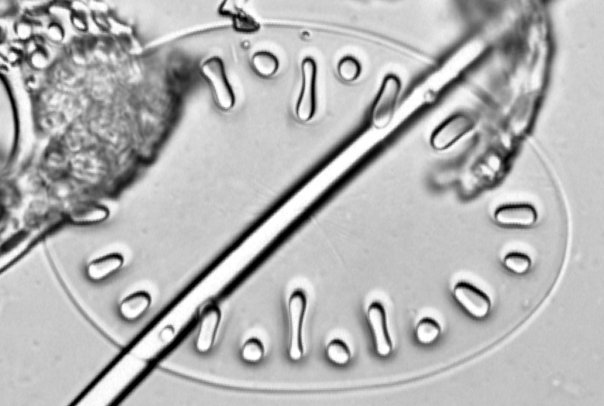
So those enigmatic microfossils I was querying about last year (https://t.co/634CgPu4D3) turned out to be pynakid sponge spicules, probably of the morphospecies Prodactylocalycites callodiscus (Carter).
2018-07-27 11:19:07
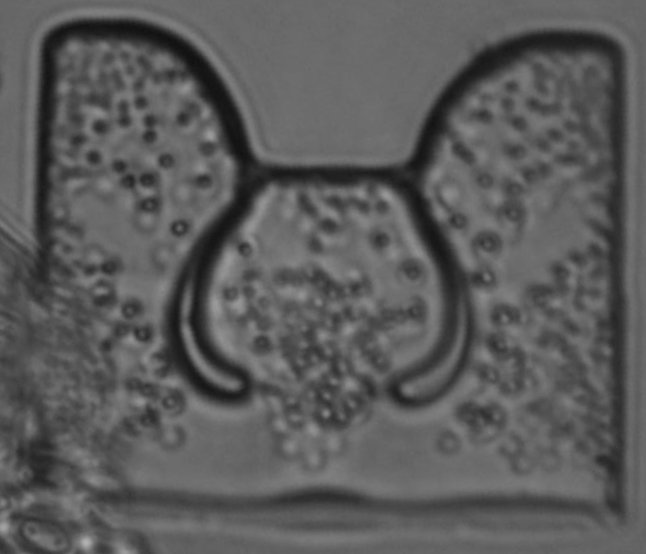
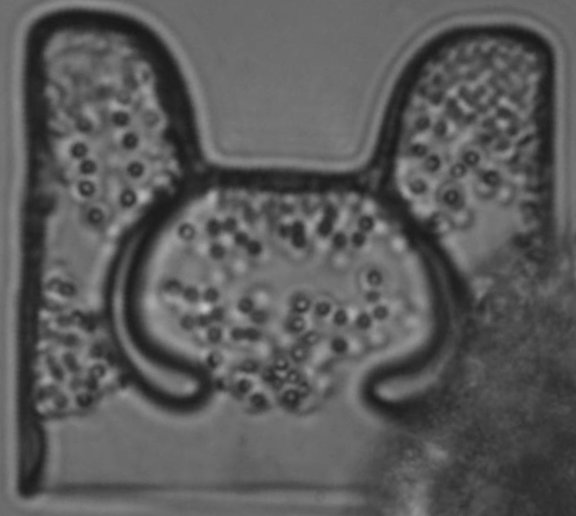
Here are two cute specimens of Porpeia sp. from the earliest Eocene of the North Atlantic (the first one can also be found in Plate A2.3 on our brand new paper: : https://t.co/cP3ooS6DB1 !)
2018-08-24 08:55:24
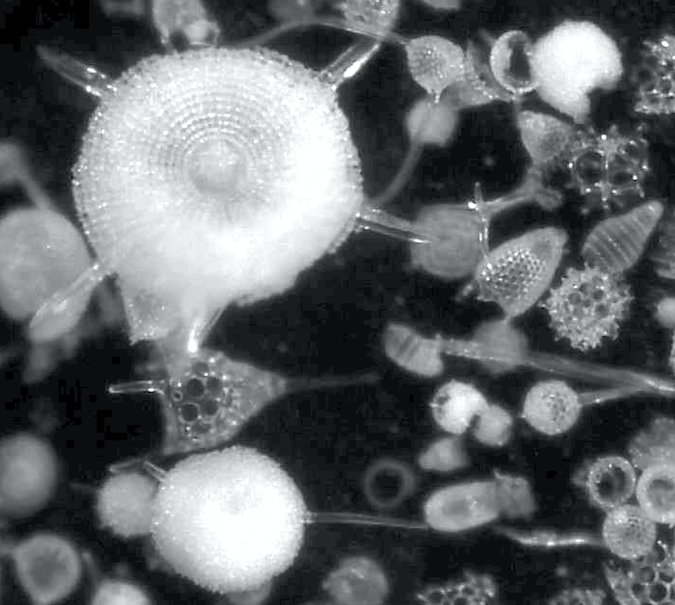
#FossilFriday Here are a bunch of late Eocene radiolarians to celebrate the start of my new contract, working on Eocene-Oligocene changes in the antarctic plankton and how it affected global carbon export (in the context of the DAAD MOPGA initiative https://t.co/l8tNUssn4s)
2018-09-14 11:09:34

It's not #FossilFriday yet but I was testing a new camera on our new stereomicroscope and found that cool fella with crazy long twisted spines so I wanted to share it.
2018-10-10 11:48:22
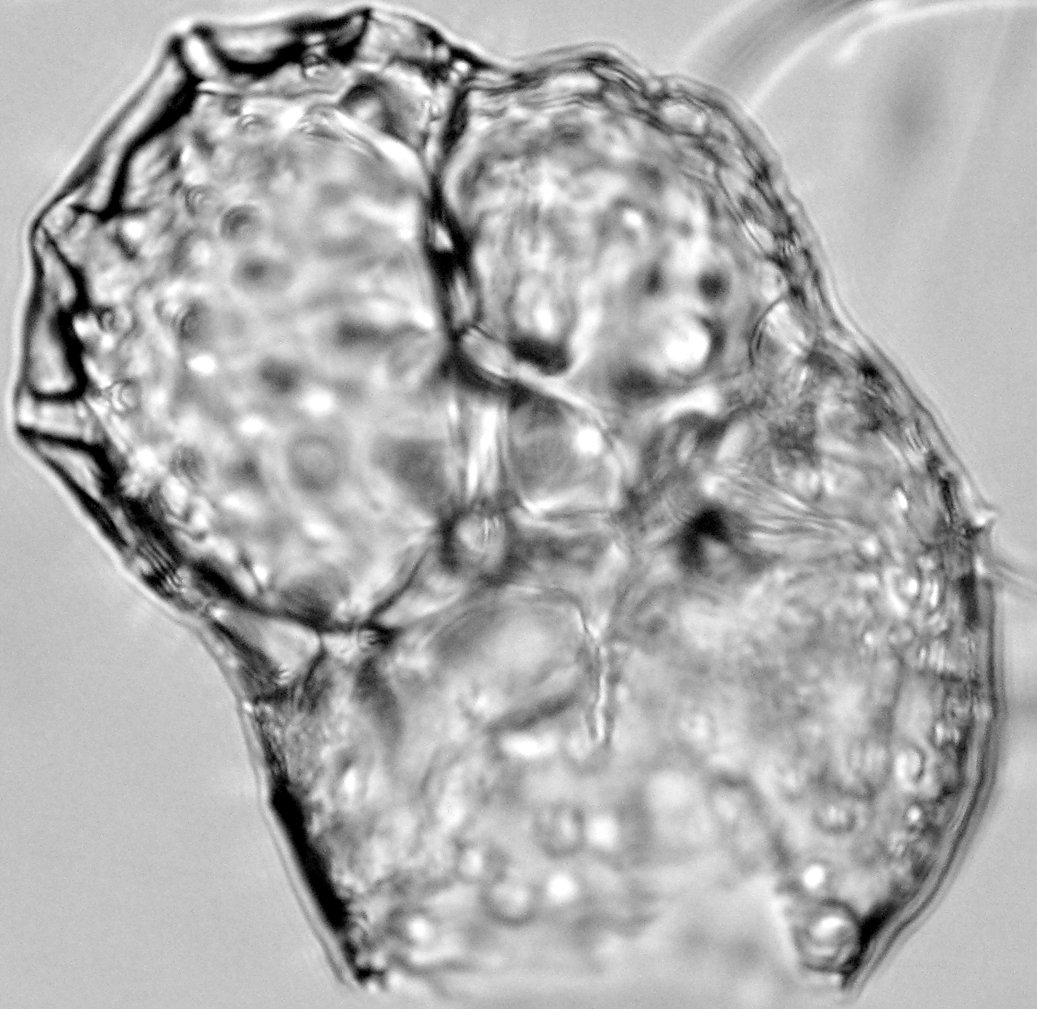
#FossilFriday This week marks the 10th anniversary of my arrival in Berlin to study radiolarians. To celebrate, here are a few pictures I took 10 years ago of specimens I observed during my first month here. Starting with this mid-depth focus of a Botryopyle. (1/n)
2018-11-09 09:44:57
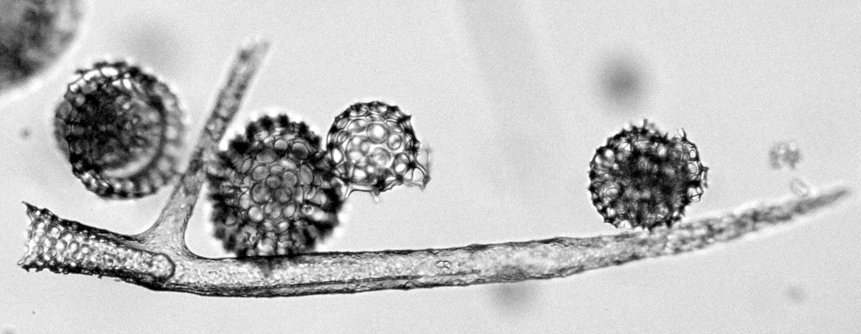
#FossilFriday And then there is this Cornutella with a crazy long and sturdy spine. Caught between the two branches of the spine, you can see a tholoniid, the cephalis of a plagoniid and a litheliid. (2/n)
2018-11-09 09:48:17
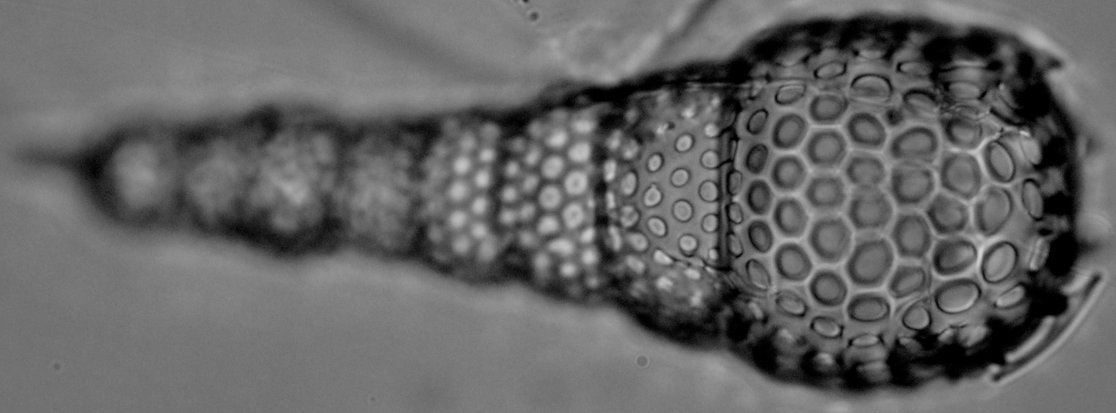
#FossilFriday A Cyrtopera laguncula Haeckel, 1887. As for all the specimens I saw that month, it comes from the Miocene of the Kerguelen Plateau. (3/n)
2018-11-09 09:50:14
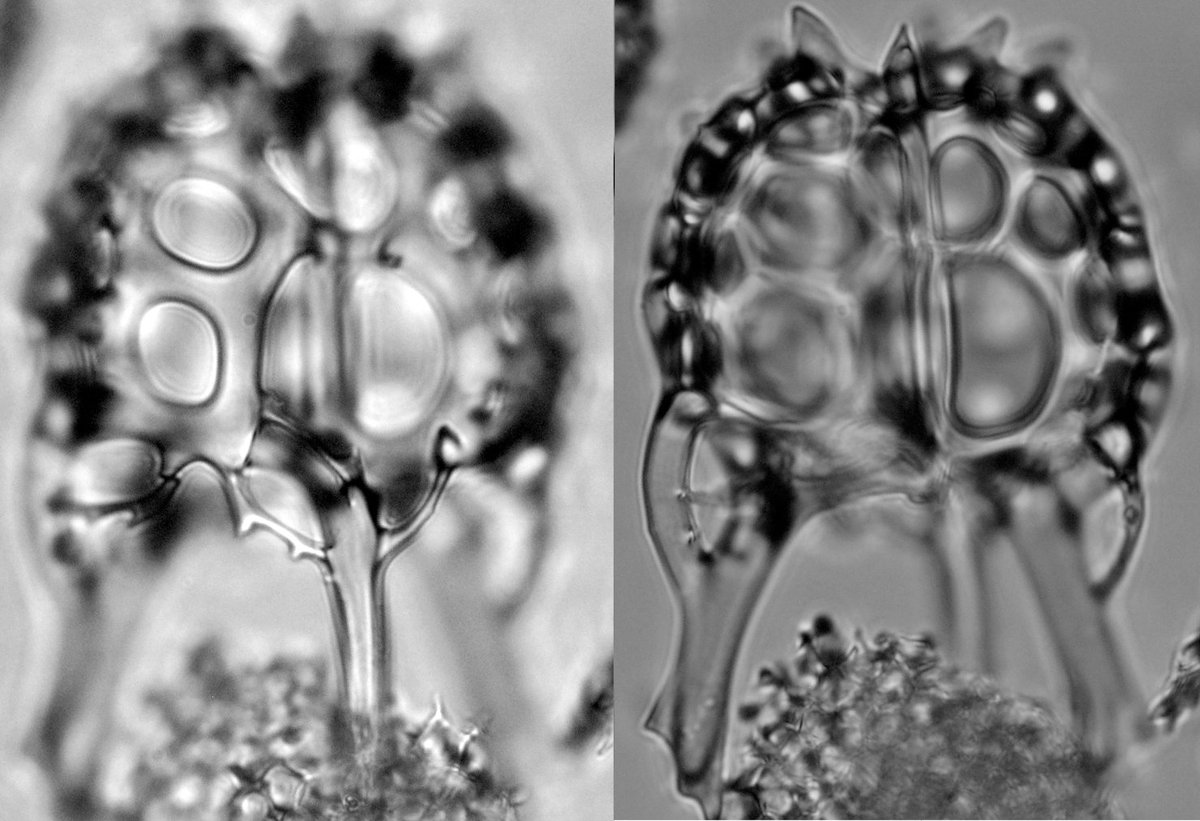
#FossilFriday Here is a Triospyrid I saw that month. I never found another specimen of that species. It's quite unique with its robust arches joining the feet midway and its multiple, small apical horns. A Ceratospyris maybe? (4/n)
2018-11-09 09:59:25
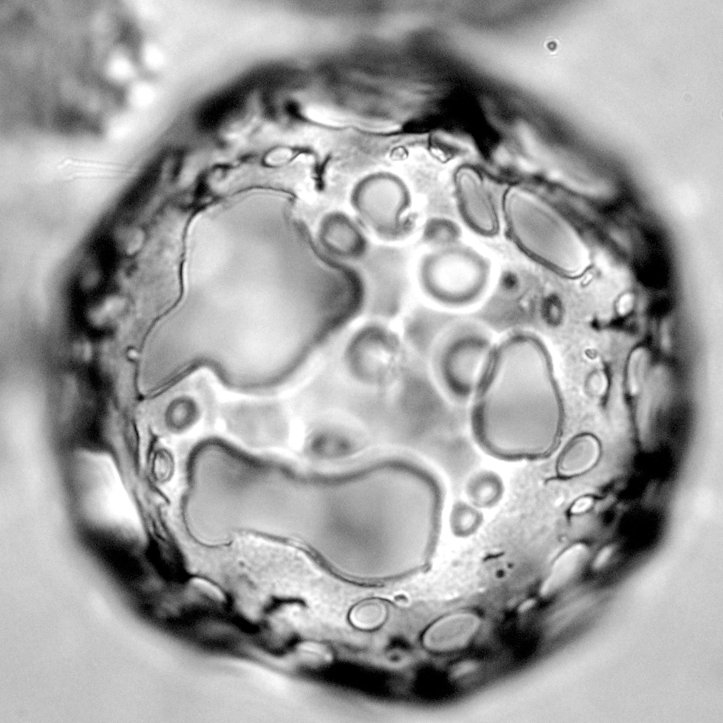
#FossilFriday Here is a nightmarish Acrosphaera? mercurius Lazarus 1992. The pore pattern on that species is more or less random. But sometimes it happens to look like some kind of jack-o-lantern. (5/n)
2018-11-09 10:09:11
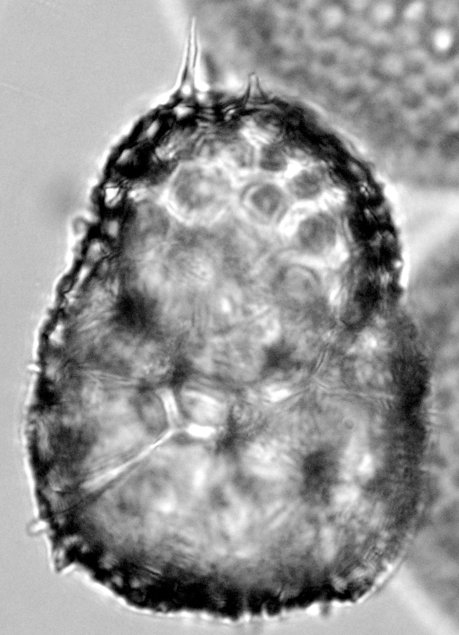
#FossilFriday One of the many MANY Antarctissa cylindrica Petrushevskaya 1975 I encountered in those 10 years. I ended up identifying ca. 80k of that little bugger during my thesis. (6/n)
2018-11-09 10:13:01
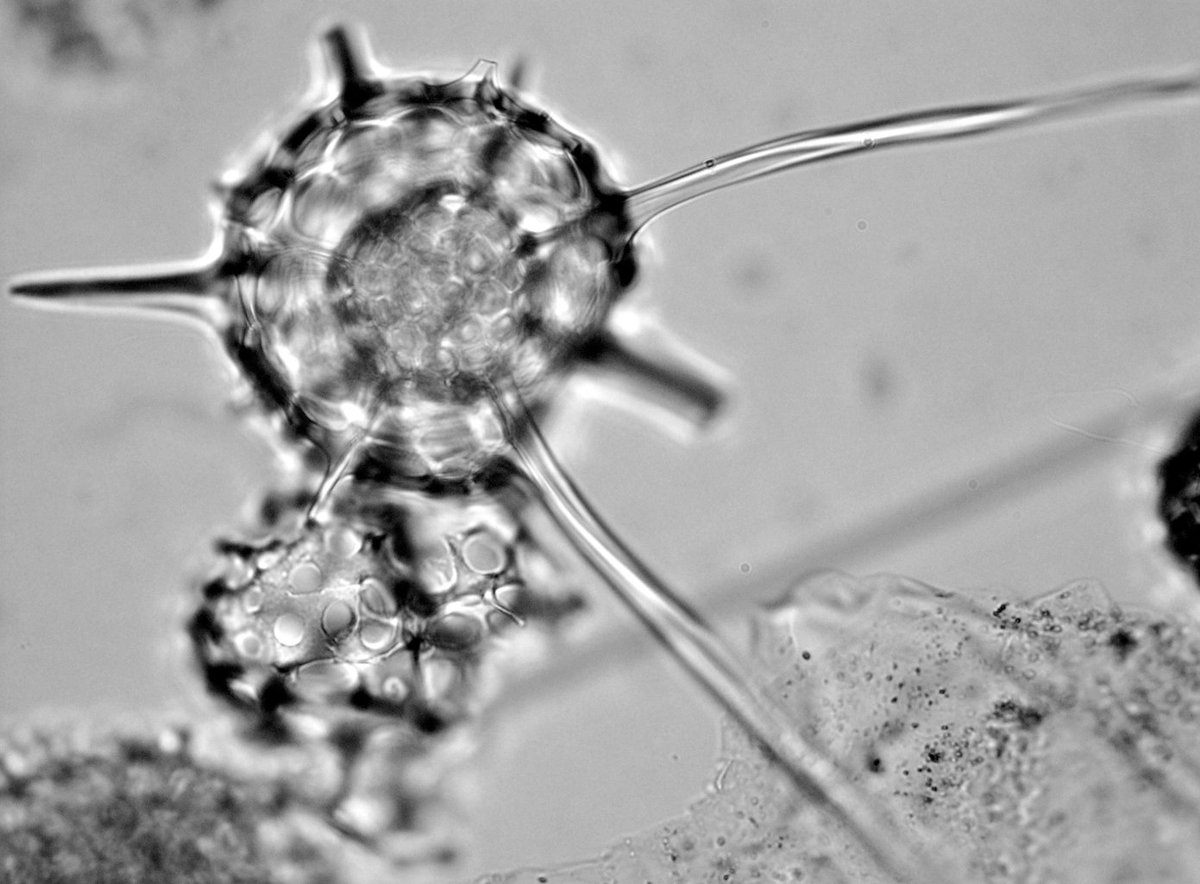
#FossilFriday Here is a weirdly asymmetrical Actinommidae from the Pliocene: Actinomma leptoderma longispina Cortese and Bj
2018-11-09 10:24:28
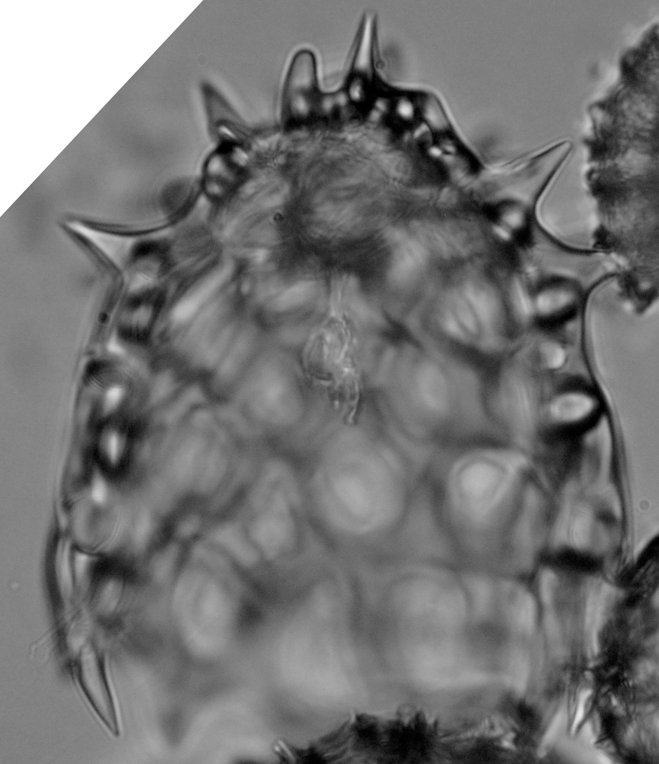
#FossilFriday Zoom on the axobate of this Pliocene Ceratocyrtis mashae Bj
2018-11-09 13:25:27
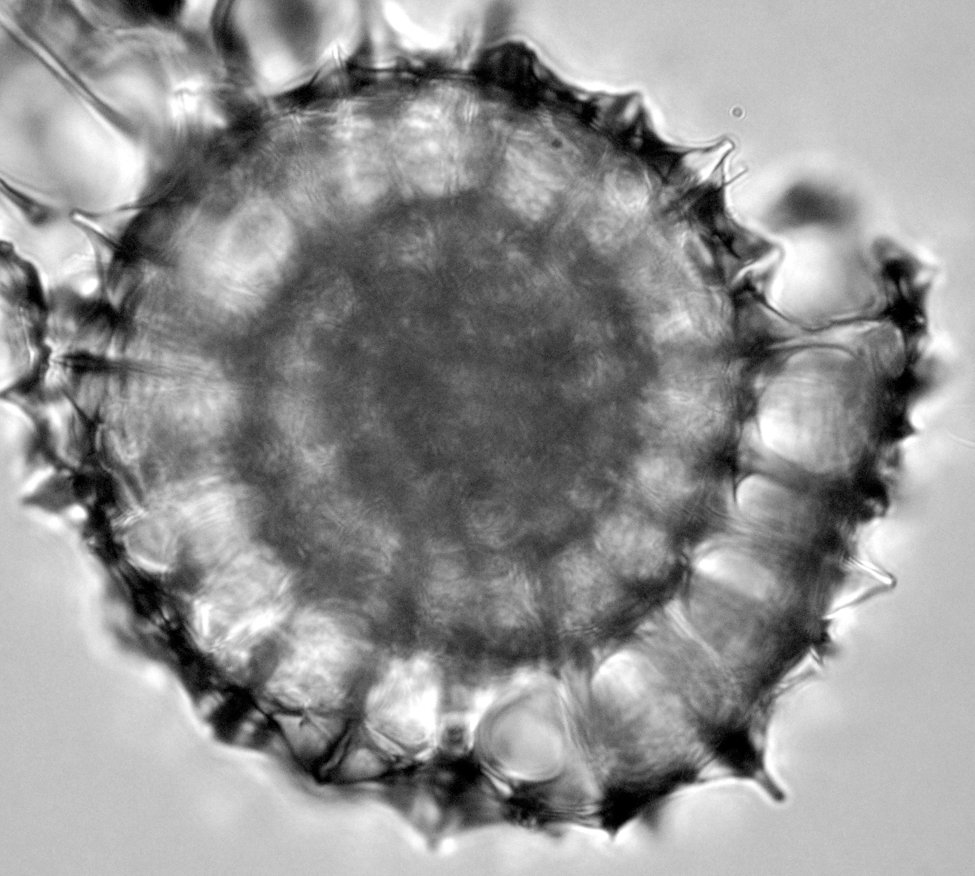
#FossilFriday The spumellarian Lithelius nautiloides Popofsky 1908. I guess I don't need to explain why it's called like that :) (9/n)
2018-11-09 13:29:22
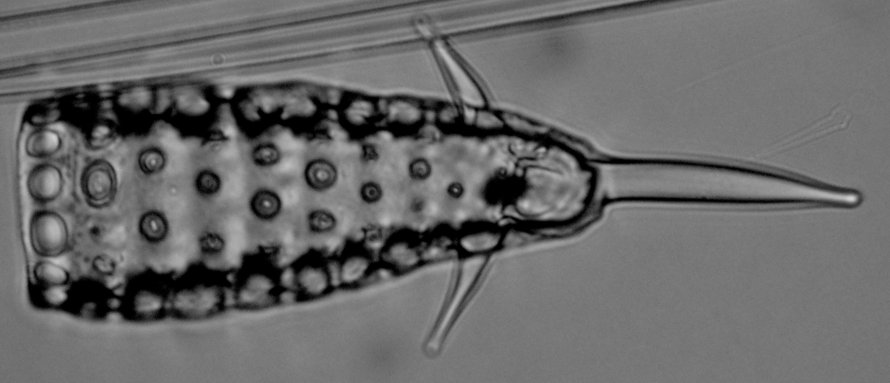
#FossilFriday OK a last one for today, for no other reason than this species (and this specimen in particular) is gorgeous: Artostrobus annulatus (Bailey 1856). (10/10)
2018-11-09 13:32:39
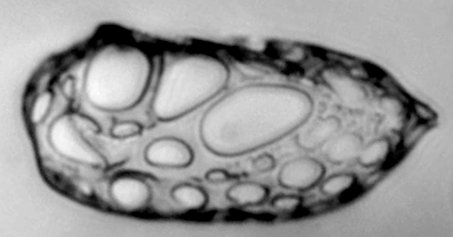
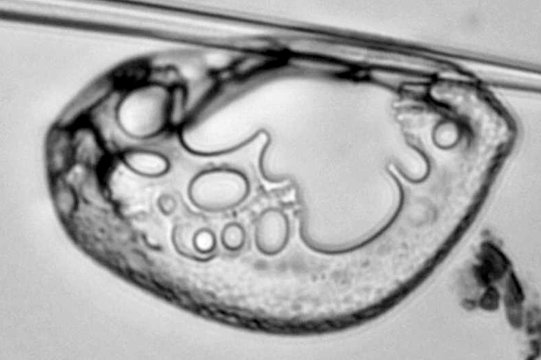
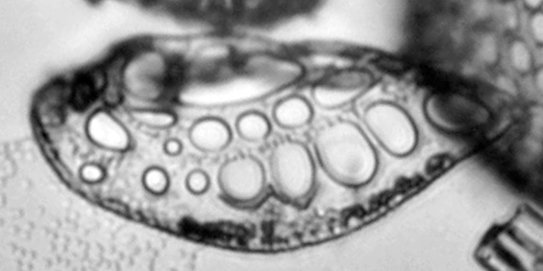
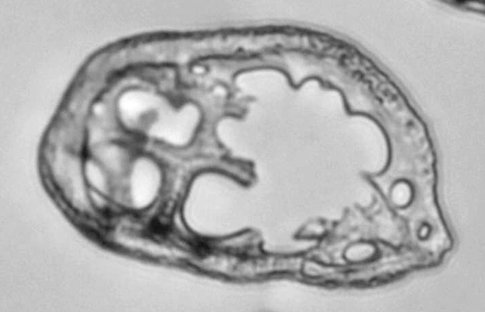
Currently going through late Eocene to late Oligocene samples from the Southern Ocean. Seeing a lot of those weird Ebridians (I assume) that looks like broken ocarinas. I can't seem to find them in the literature #FossilFriday
2018-11-23 10:52:09
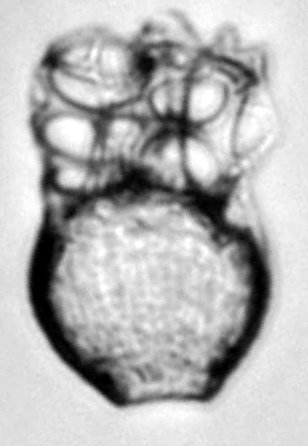
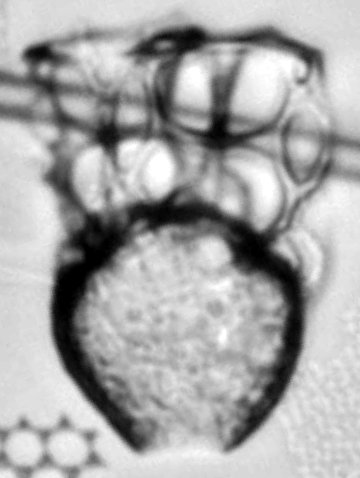
Being a bit obsessed with Ebridians recently :) Here's Ammodochium ampulla (Deflandre), again from the latest Eocene of the Southern Ocean (ODP site 689B). #FossilFriday
2018-11-30 09:48:41
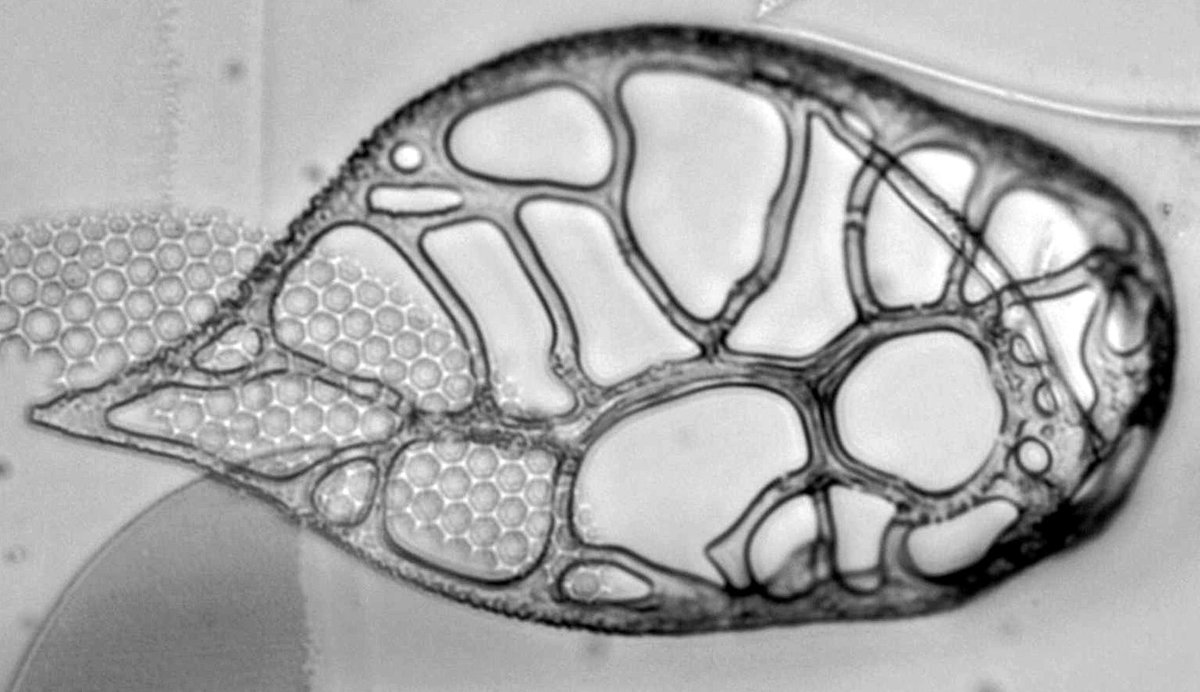
Another one (because the diversity of Ebridians in the late Eocene of the Southern Ocean is surprisingly high; and their morphology is so intriguing): the brilliantly-named, Adonnadonna primadonna Gombos 1982 #FossilFriday
2018-11-30 11:25:45
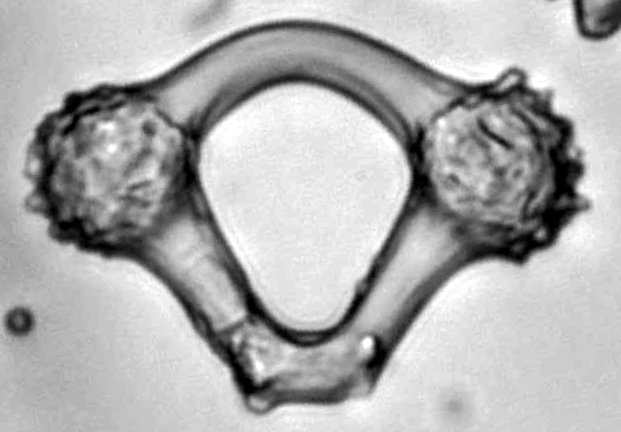
#FossilFriday Found a few of these little fellas in the late Eocene of the equatorial Pacific. Not even sure it's a radiolarian, though it sure looks like a sagittal ring, with buds where the lateral spines should be, and the big knobs are not unheard of (i.e. Rhabdolithis pipa)!
2018-12-14 09:44:17
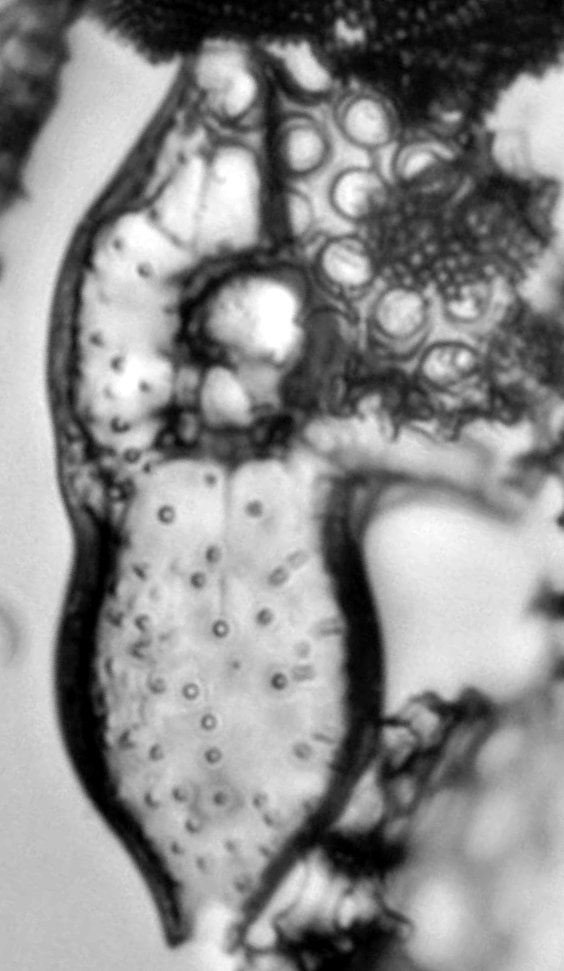
For my last #FossilFriday this year, here is a cool/weird-looking Cannobotryidae (which I am aware is a pleonasm) from the early Oligocene of the equatorial Pacific (ODP site 1218)
2018-12-21 14:06:00
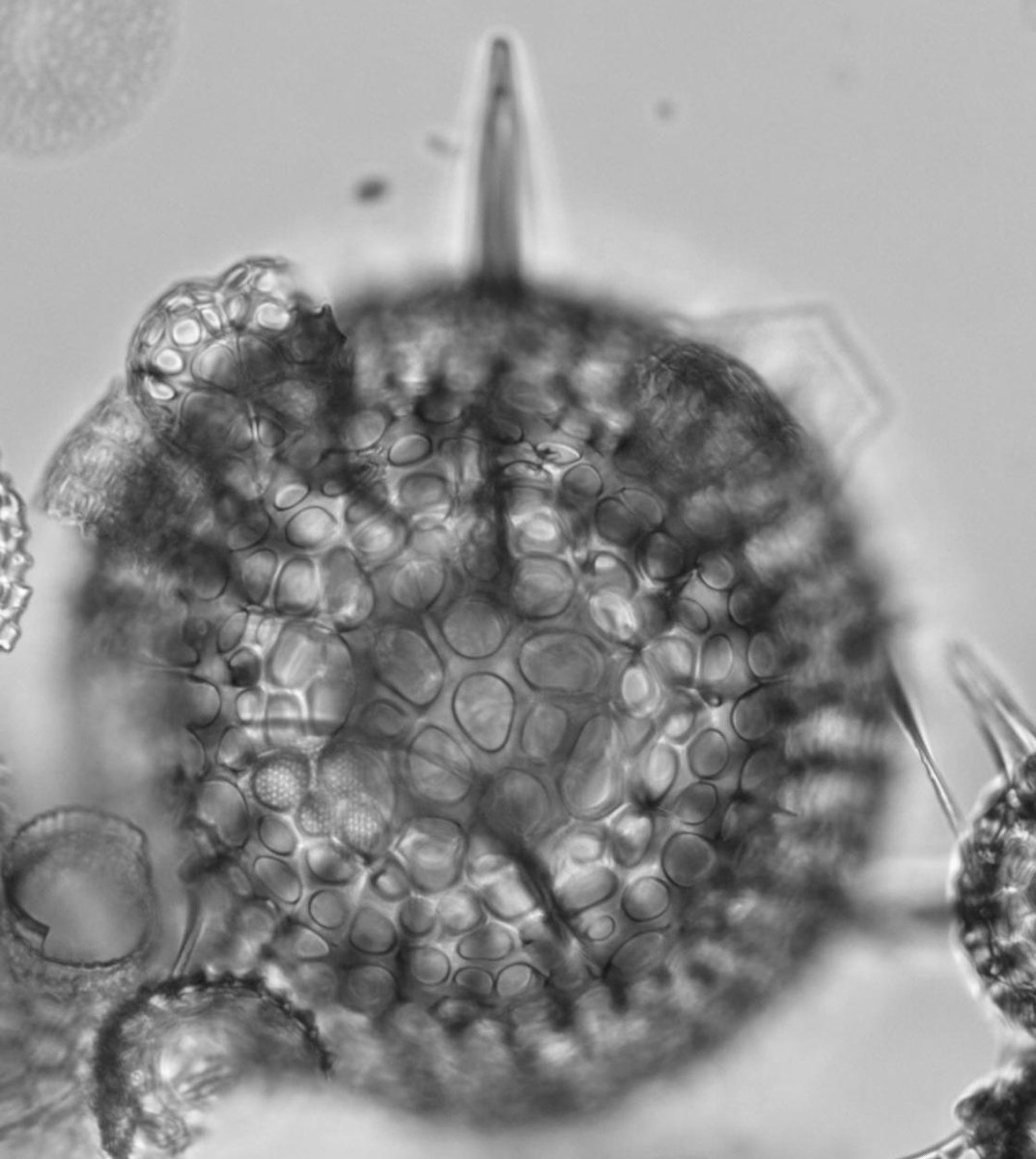
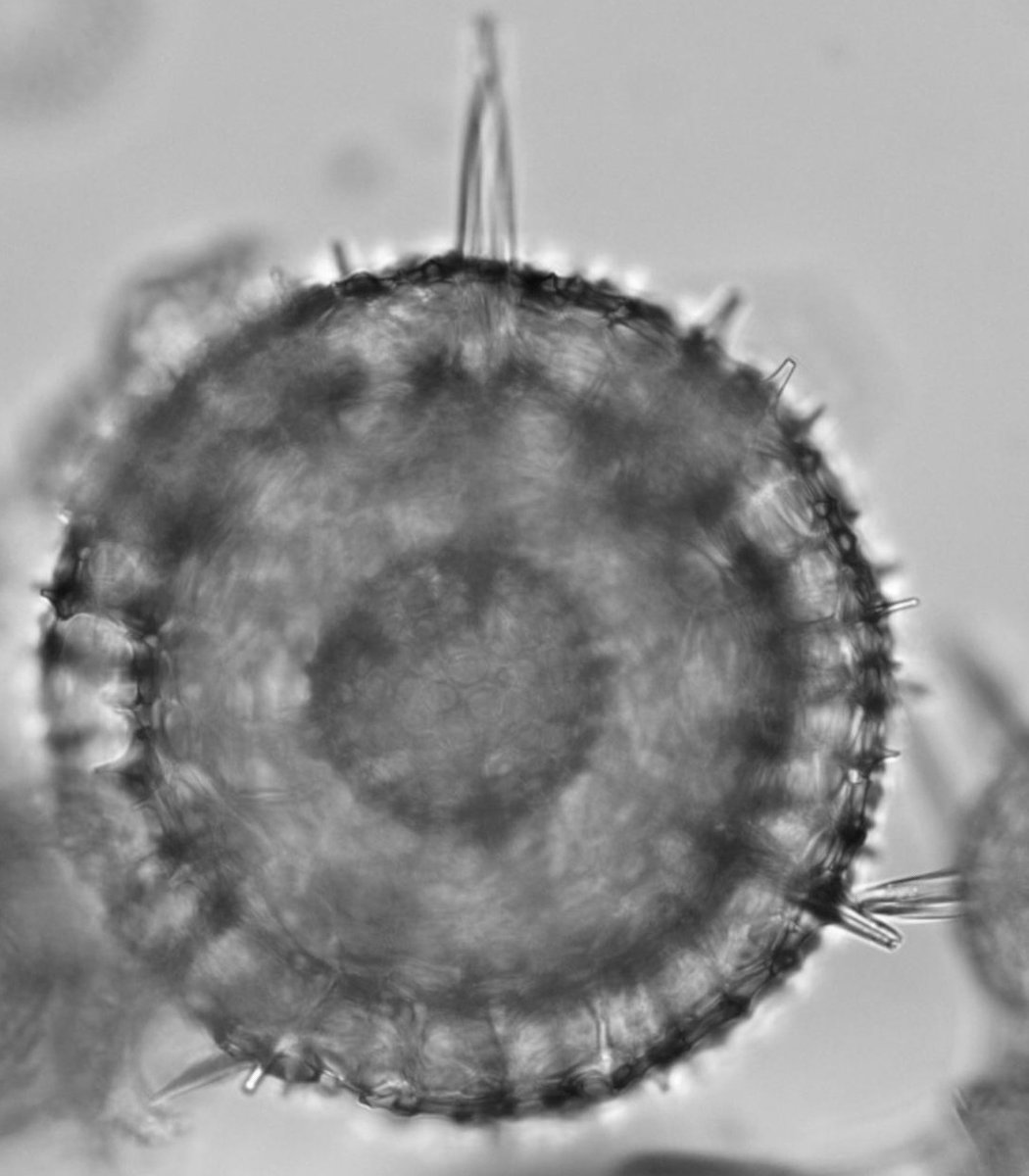
#FossilFriday Actinomma kerguelensis Caulet 1991 (Actinommidae, Spumellaria, Radiolaria) from the latest Eocene of the Kerguelent Plateau (well duh). Studying fossils that are basically transparent allows for some crazy pics sometimes :)
2019-01-11 11:24:46
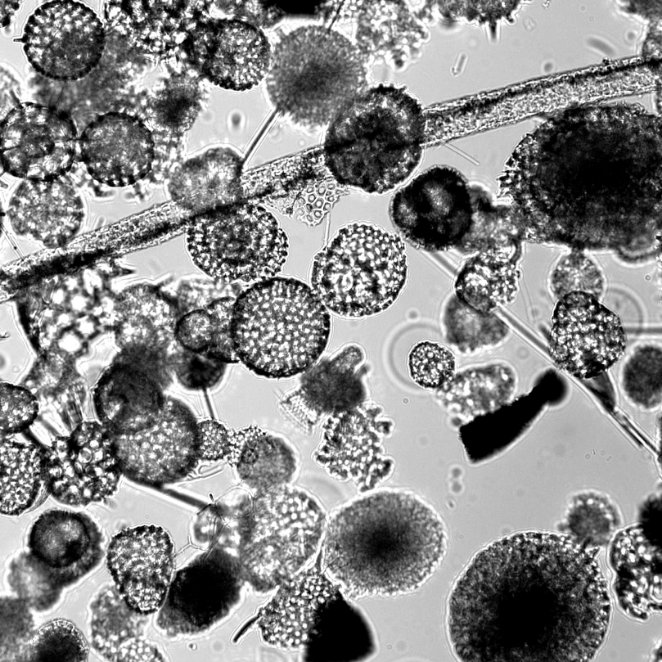
Not the best picture (not my usual microscope/camera combo) but just to show that, indeed, there are (on occasions) radiolarians in the Amundsen Sea sediments #Exp379. #FossilFriday [ on a Wednesday, because I lost every notions of what day it is, working 7 days a week :) ]
2019-03-06 14:58:55
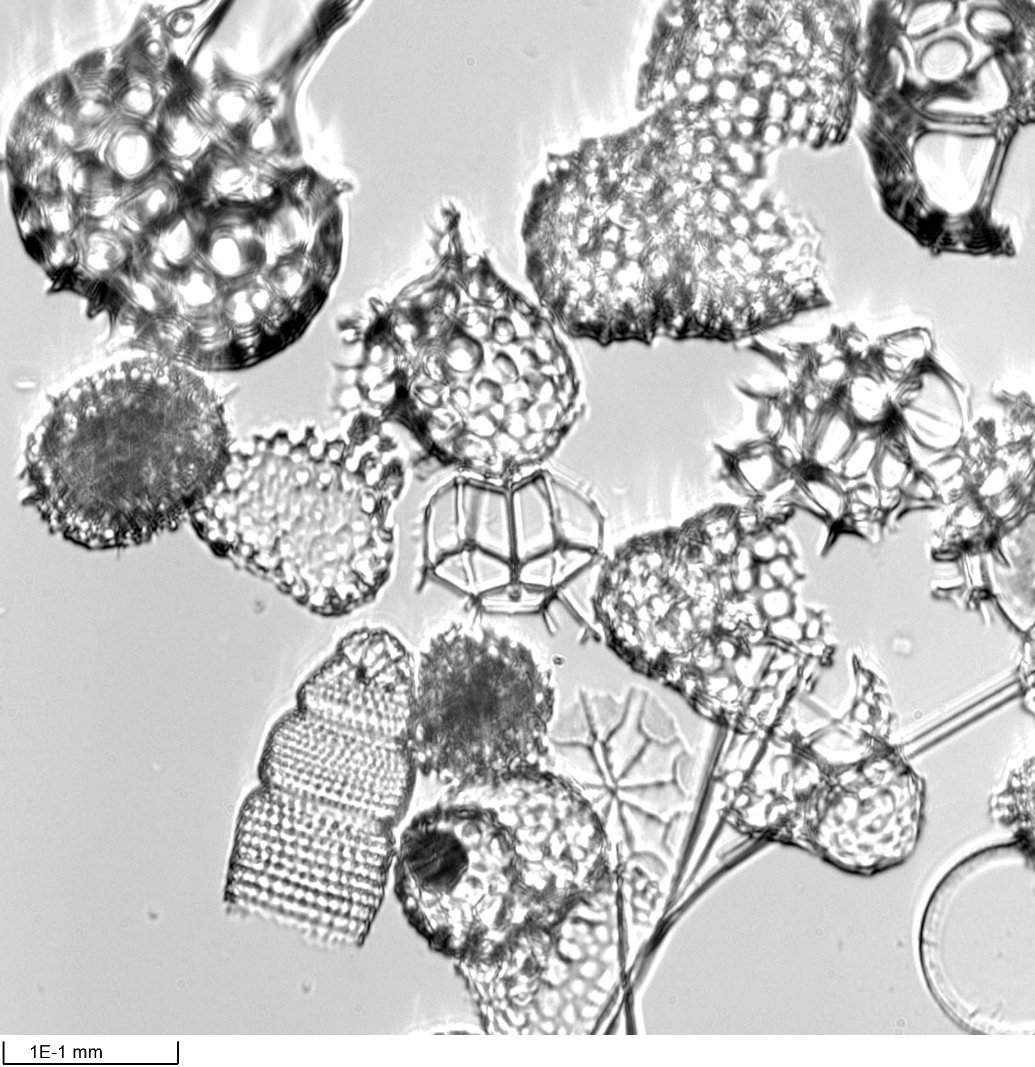
Now that it's actually #FossilFriday here is another sneak peek into an Amundsen Sea radiolarian assemblage (#Exp379), centered around one cute little triospyrid (Nassellaria).
2019-03-08 18:27:42
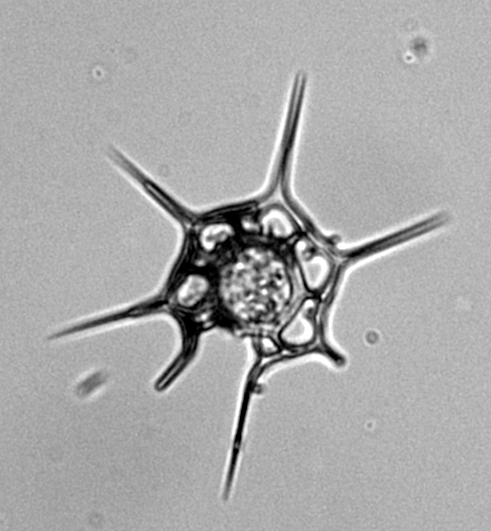
#FossilFriday A weird Distephanus (Silicoflagellate), with a missing basal bar, I found in the sediments of the Amundsen Sea last month #Exp379 #WishIWasStillOnTheJR
2019-03-29 11:17:26
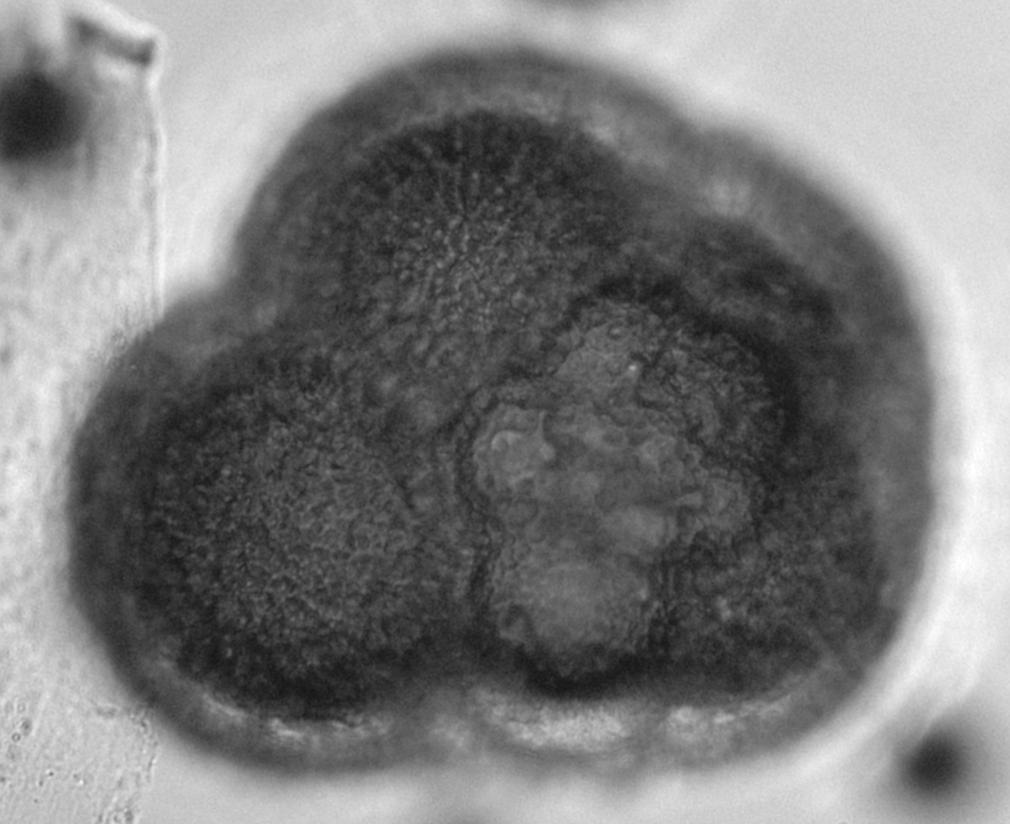
#FossilFriday We usually treat our samples with HCl to get rid of carbonates but during #Exp379 I didn't, so I got to see some occasional forams on my slides. Here's a planktonic one: Neogloboquadrina pachyderma (Ehrenberg, 1861)
2019-04-05 10:05:51
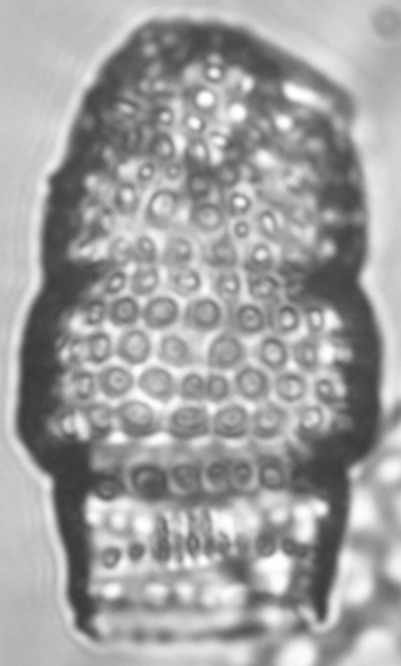
#FossilFriday A cute little Phormostichoartus I kept bumping into in the Amundsen Sea Pleistocene. (Finally received my slides and samples!)
2019-05-03 14:22:29
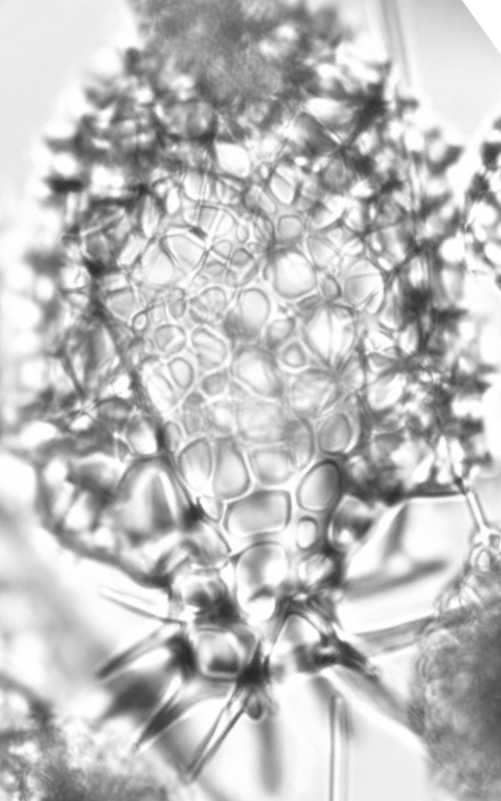
#FossilFriday Still Amundsen Sea, still Pleistocene, but I can't resist showing off how weird looking Mitrocalpis araneafera can be sometimes
2019-05-03 14:25:44
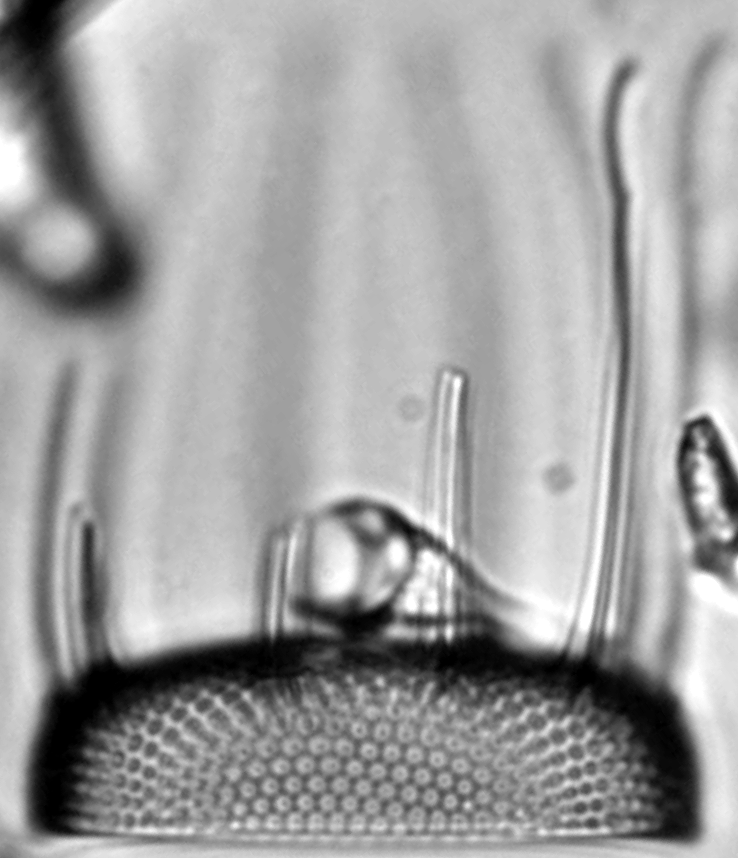
#FossilFriday A Paleocene Stephanopyxis (I wouldn't dare any species-level identification on anything from that genus) with cool spines
2019-05-10 15:59:38
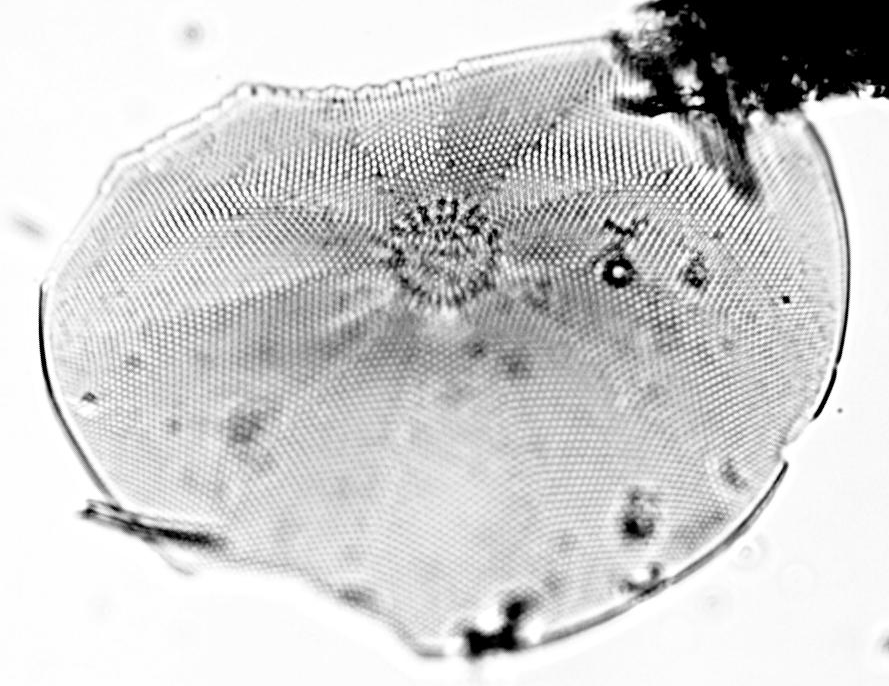
#FossilFriday Coscinodiscus symbolophorus Grunow group from the (early) Paleocene of the South Pacific (DSDP Site 208)
2019-06-14 16:02:54
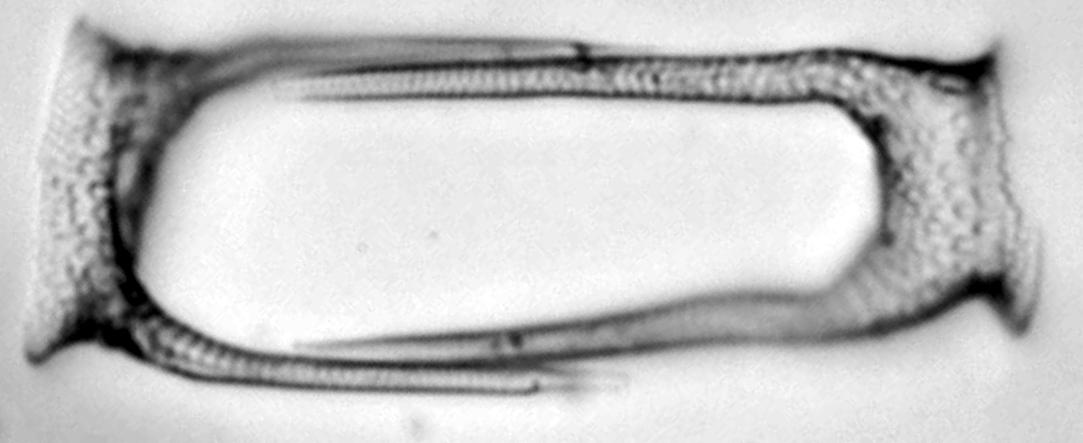
#FossilFriday Some Hemiaulus(-es?) from the latest Eocene of the KerguelenPlateau (i. e. Southern Ocean)
2019-06-21 16:59:15
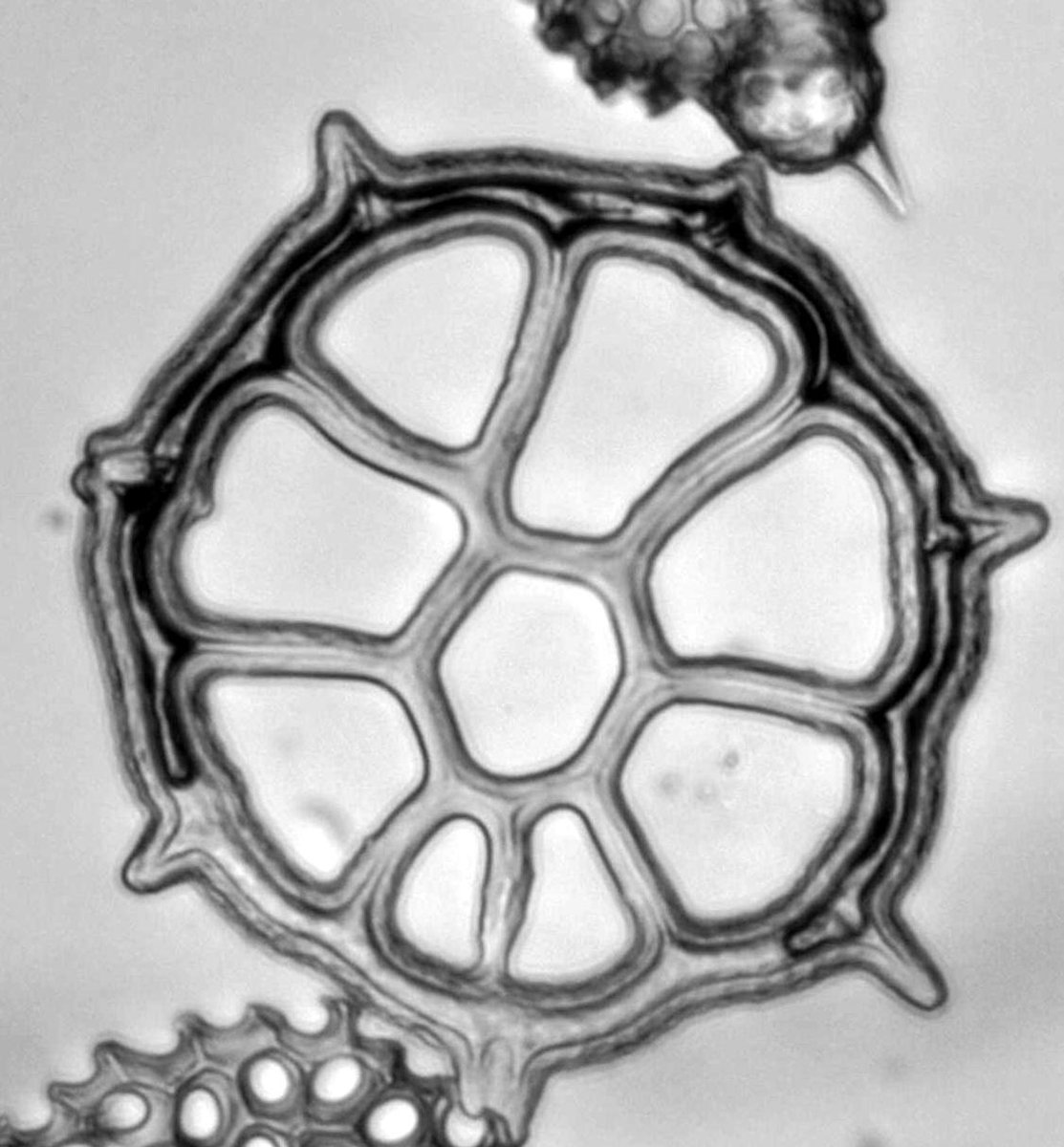
#FossilFriday Silicoflagellates don't get enough love! Here's a (massive, see radiolarian cephalis on top for scale) Dictyocha grandis Cieselski & Shaw from the (late?) Eocene of the Kerguelen Plateau.
2019-07-19 11:23:27
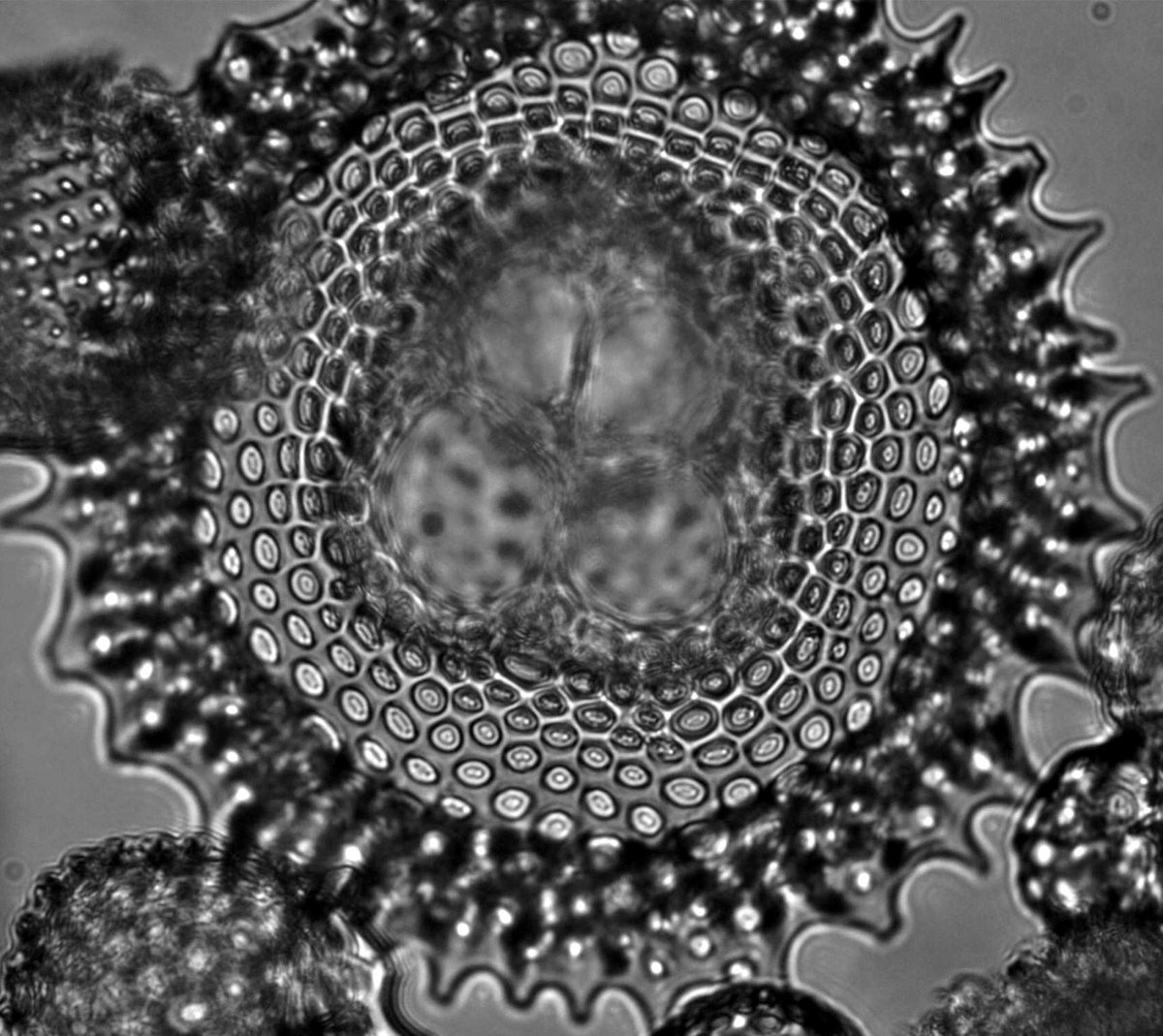
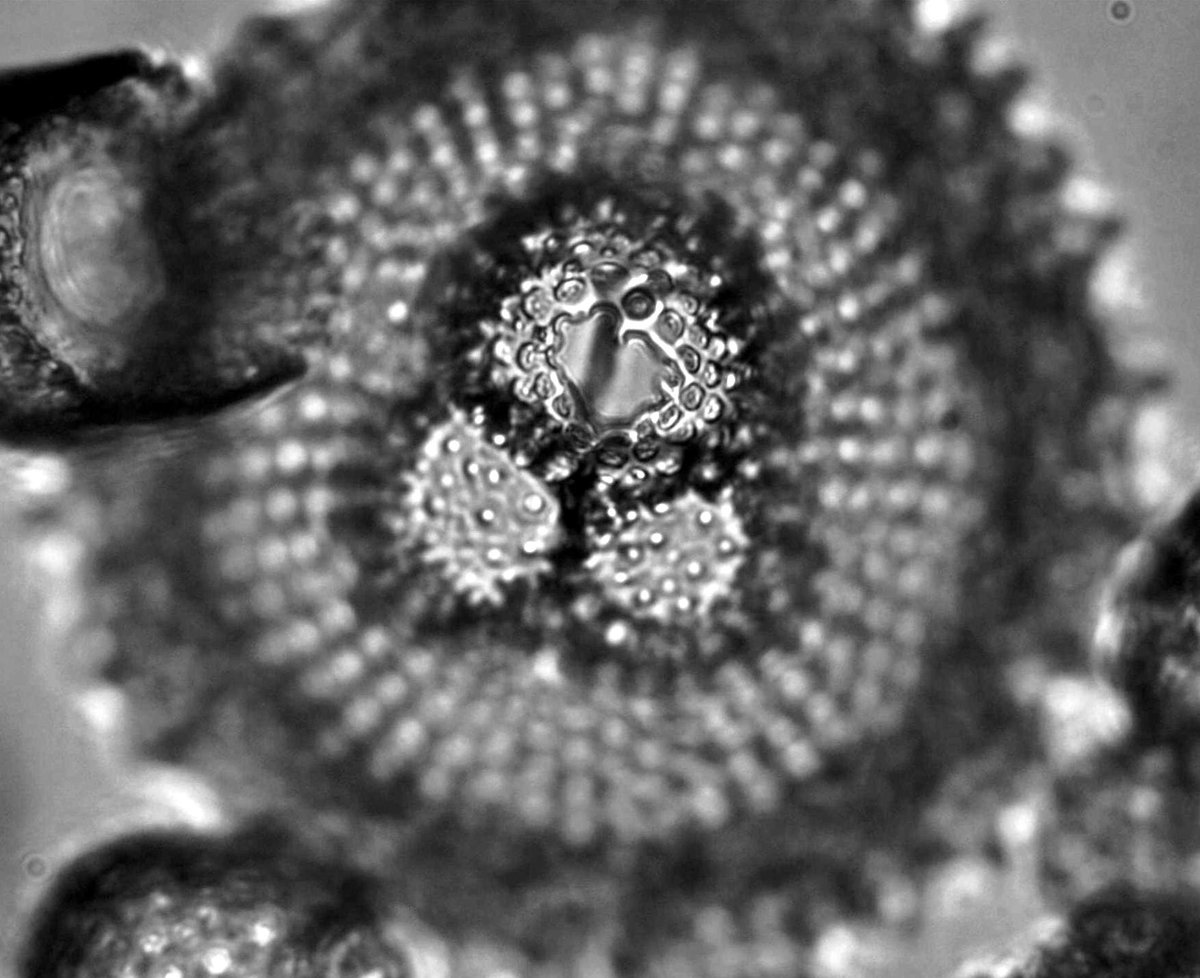
#FossilFriday Vellicucullus palaeocenicus Nishimura 1992 (Radiolaria, Nassellaria, Plagiacanthoidea[?]). Such a weird-looking, awesome genus. This particular specimen, seen from (what-we-consider-to-be) above, is from the latest Paleocene / earliest Eocene of the Gulf of Mexico.
2019-08-02 14:44:43
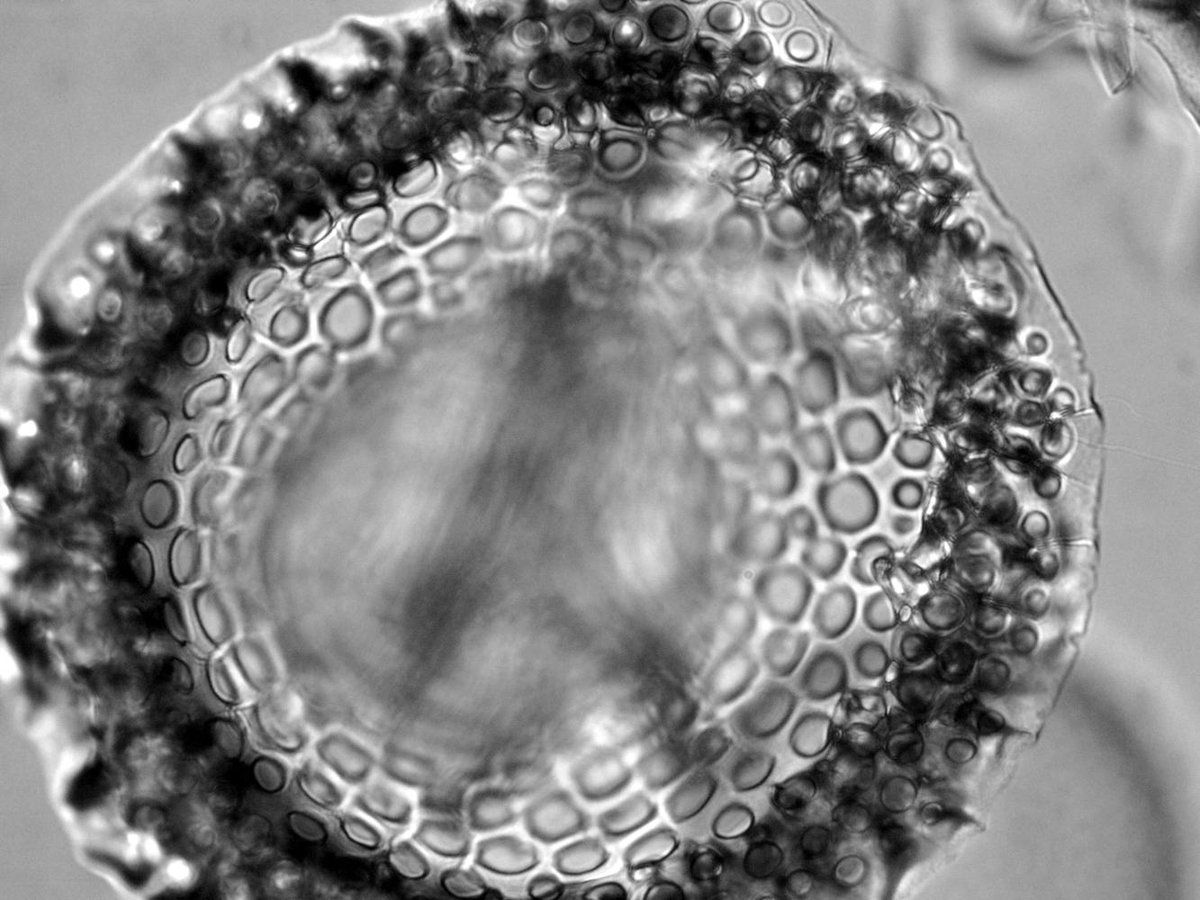
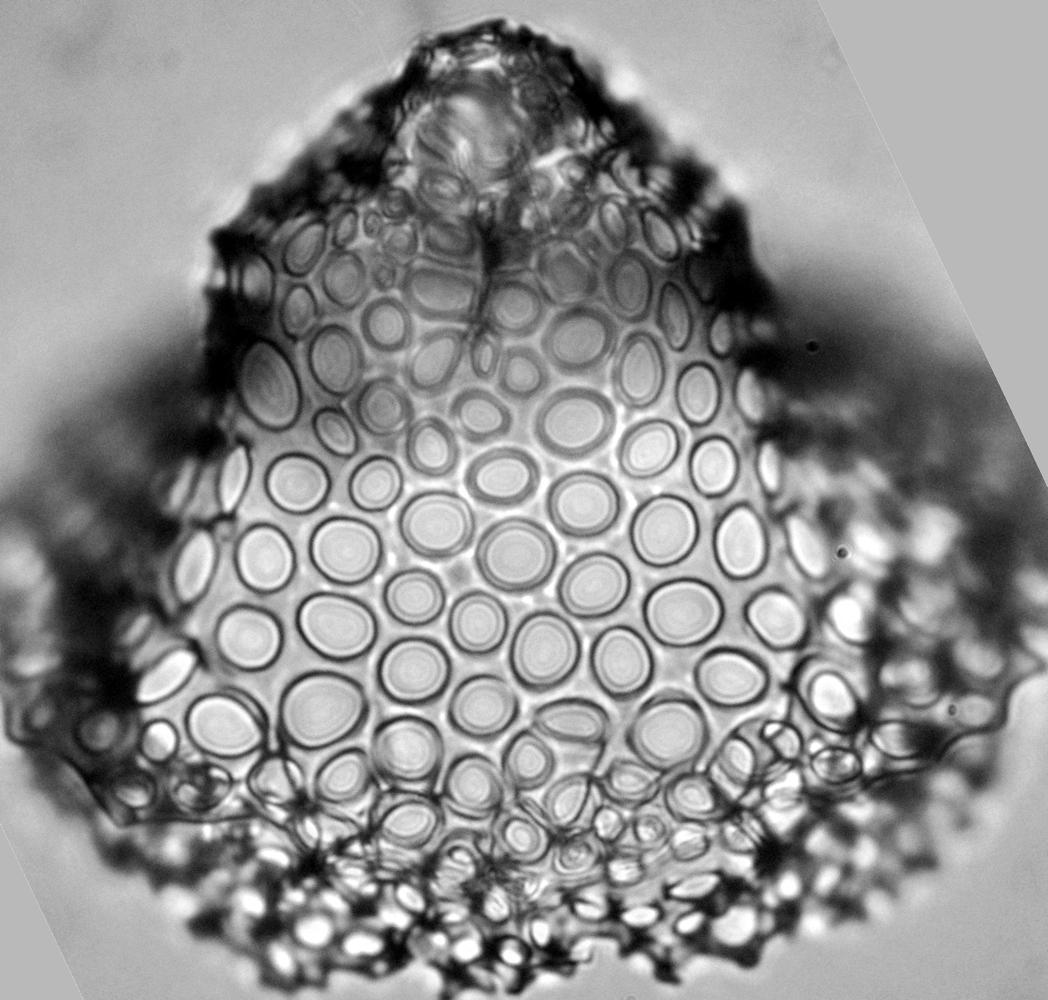
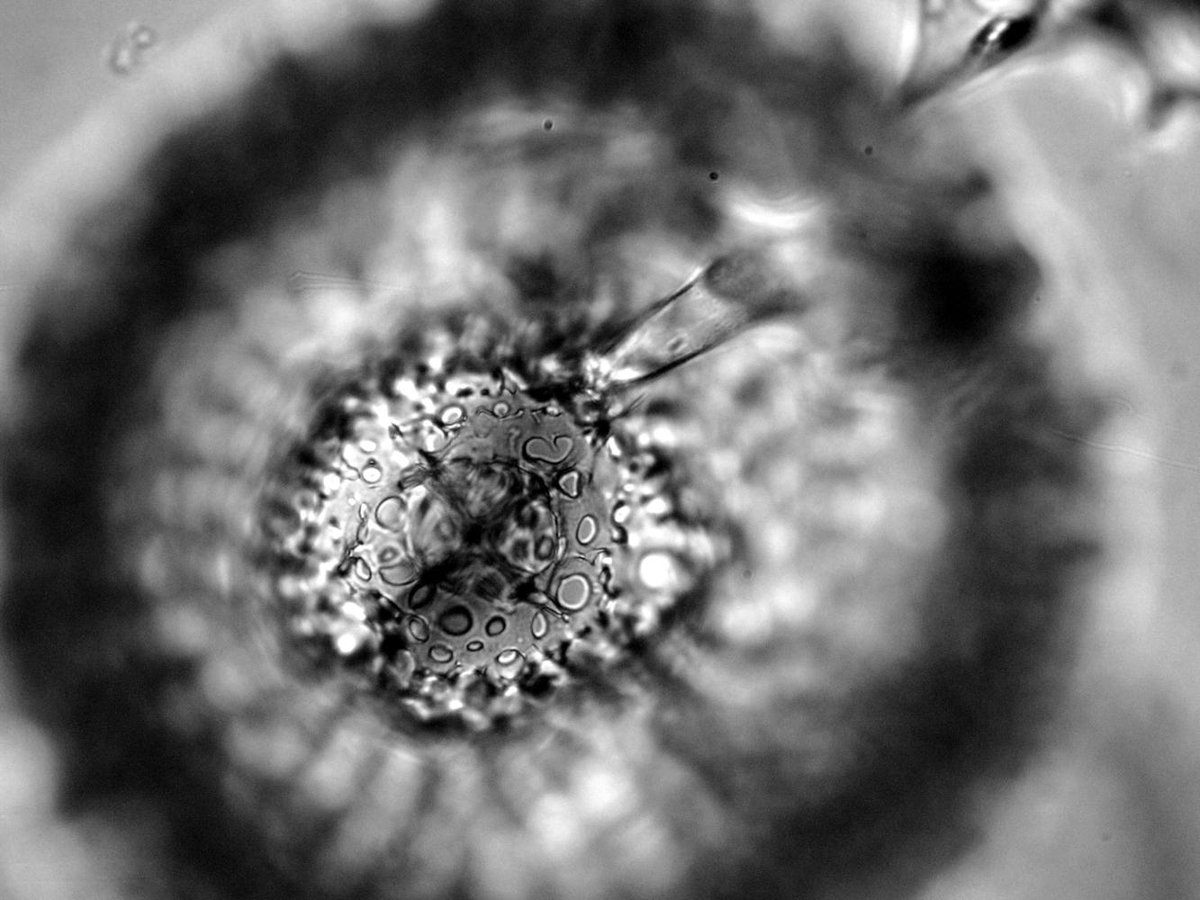
#FossilFriday Because I really like last week's radiolarian genus, here are some other species from the same genus (as far as we know): first, Velicucullus altus Abelmann 1992 (seen from the "side" and from the "top" ). 1/2
2019-08-09 09:24:24
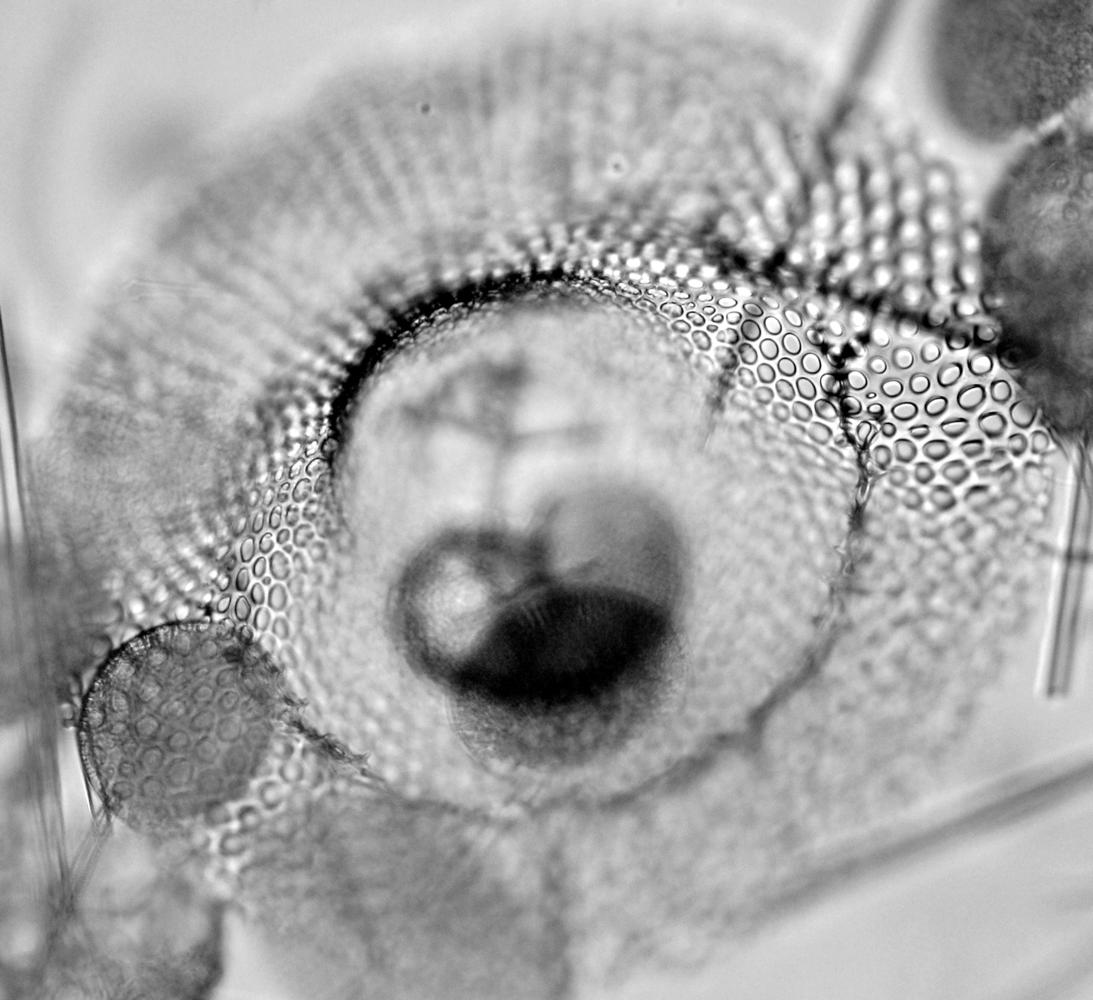
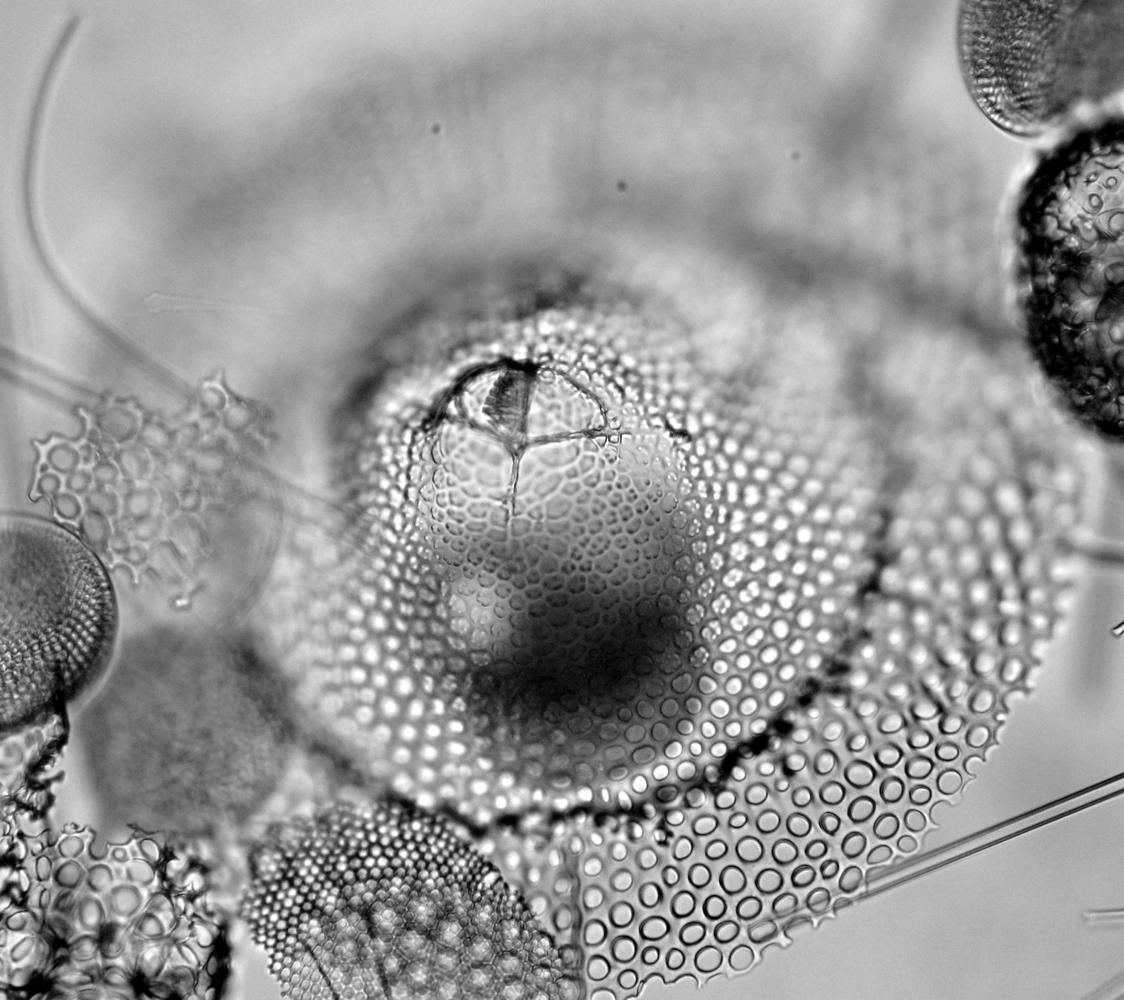
#FossilFriday ... and here is the gorgeous Velicucullus oddgurneri Bj
2019-08-09 09:25:03
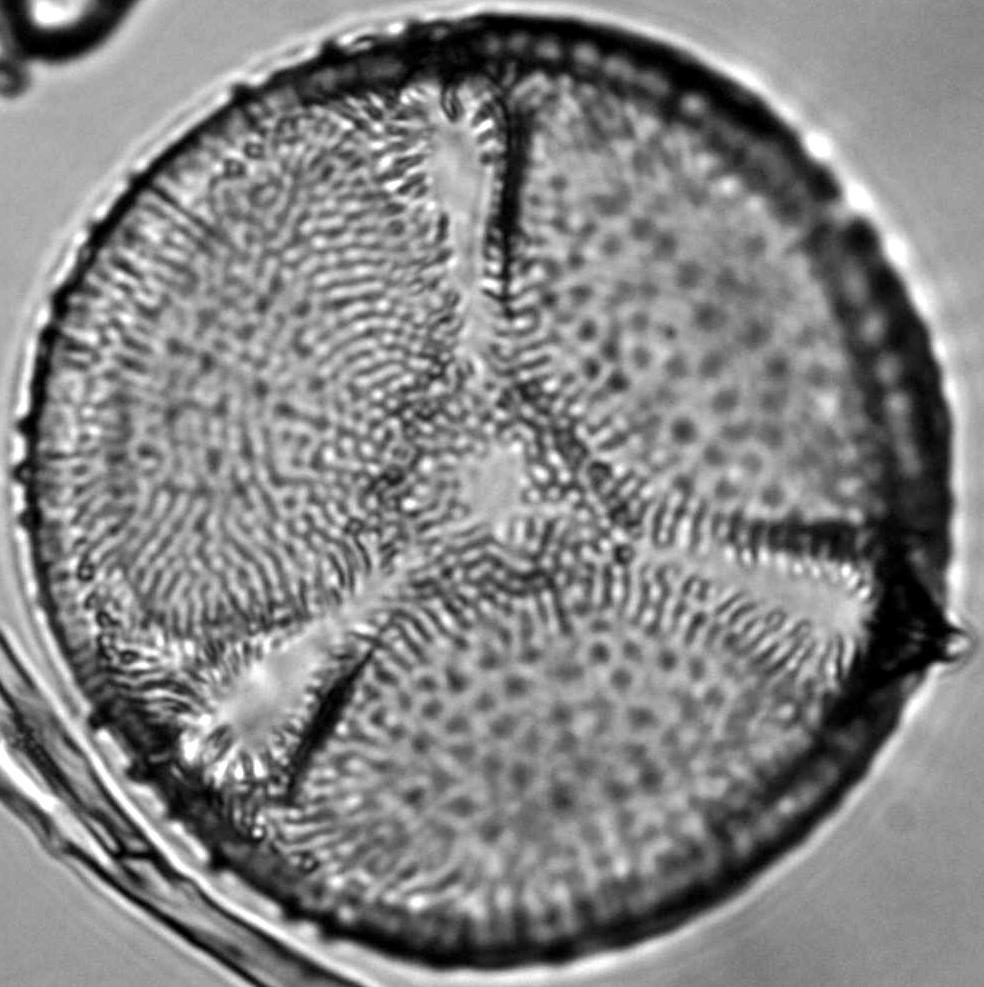
#FossilFriday This week a diatom for a change: this is a specimen of Aulacodiscus sp. (not sure of the species) from the early Eocene of the northwestern Atlantic (ODP site 1051A).
2019-08-16 11:27:59
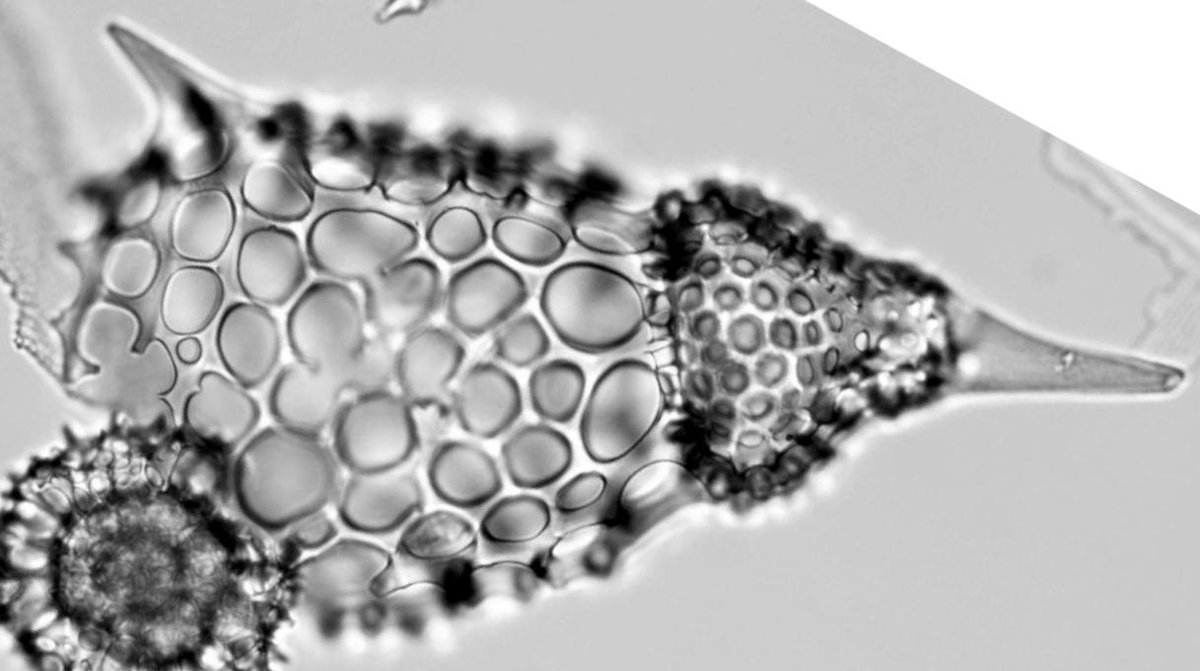
#FossilFriday Look at this beauty I saw in the latest Eocene of the Kerguelen Plateau! It is a Lophocyrtis, I want to say L. longiventer?, which is a theoperid nassellarian radiolarian.
2019-08-30 10:46:25
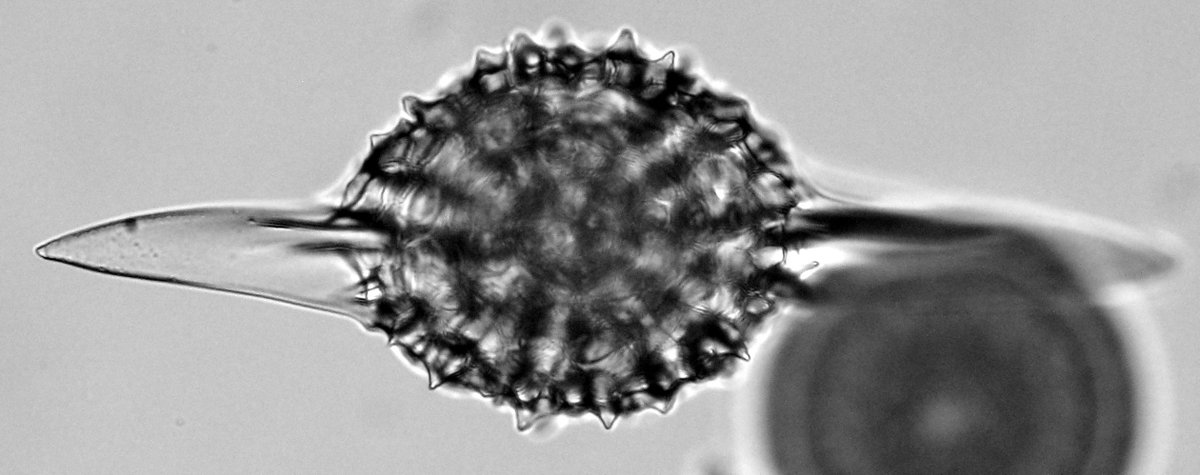
#FossilFriday To celebrate my latest preprint on the Neptune database, here is Stylatractus neptunus Haeckel 1887 from the Pleistocene of the Southern Ocean! Not necessarily its best profile but it's the only picture of a complete specimen I had on hands :)
2019-09-20 11:40:45
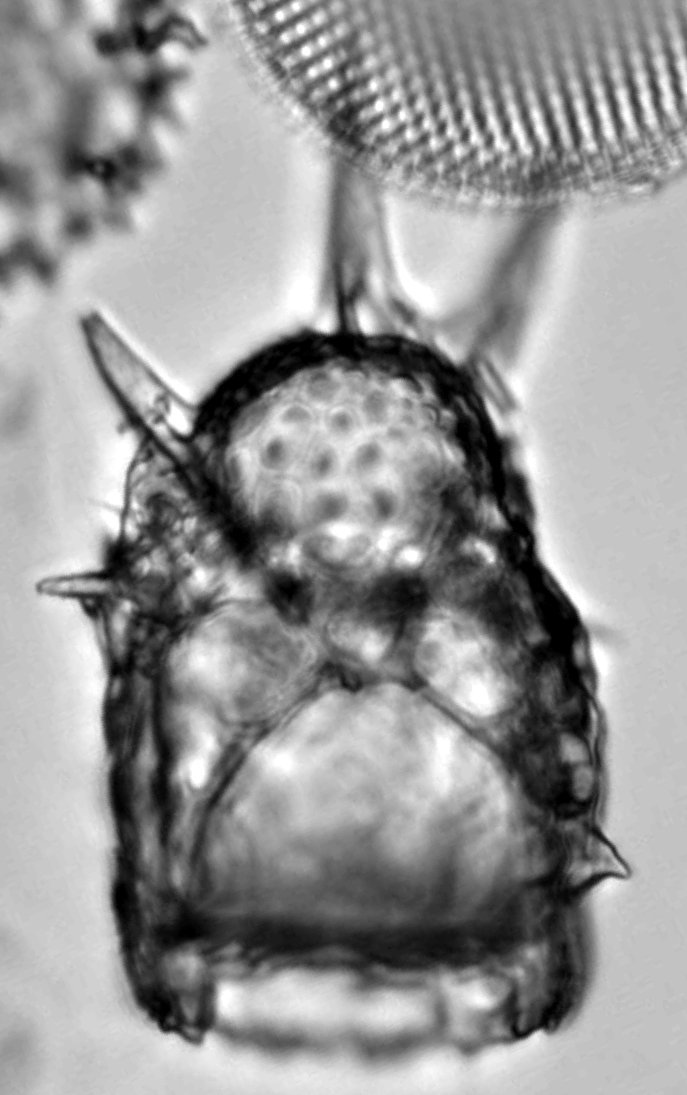
#FossilFriday I post a lot of different rads but at the end of the day my heart belongs to Plagiacanthidae: they are weird and maybe the Cenozoic rad group with the highest undescribed diversity. Here: an unnamed antarctissid (late Eocene/north Atlantic)
2019-10-11 10:01:09
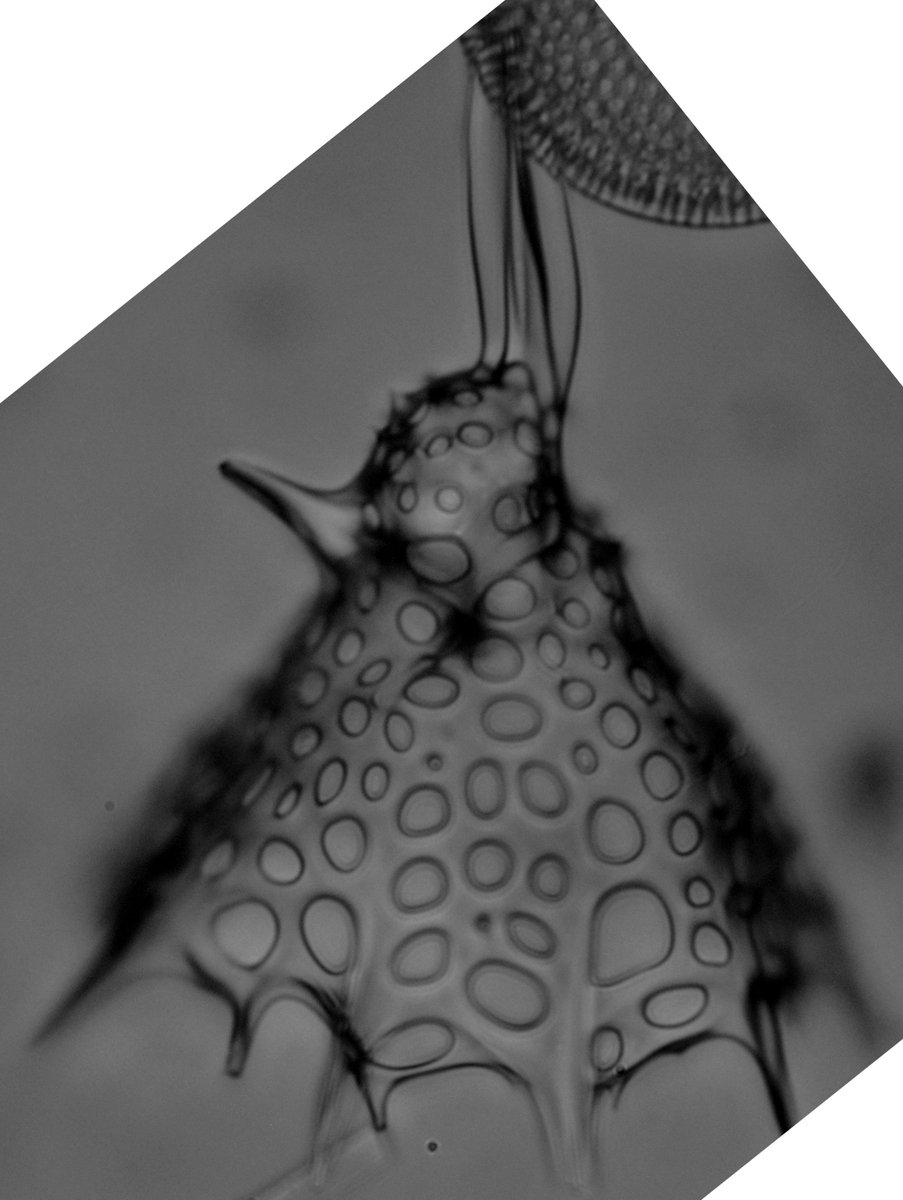
#FossilFriday Another Plagiacanthidae, from the Miocene of the Southern Ocean: Ceratocyrtis? morawanensis Funakawa 1995, looking for a new genus to accomodate it and its buddies (Lophophaena? thaumasia, Lithomelissa? stigi, C.? cantharoides,...)
2019-11-01 08:25:53
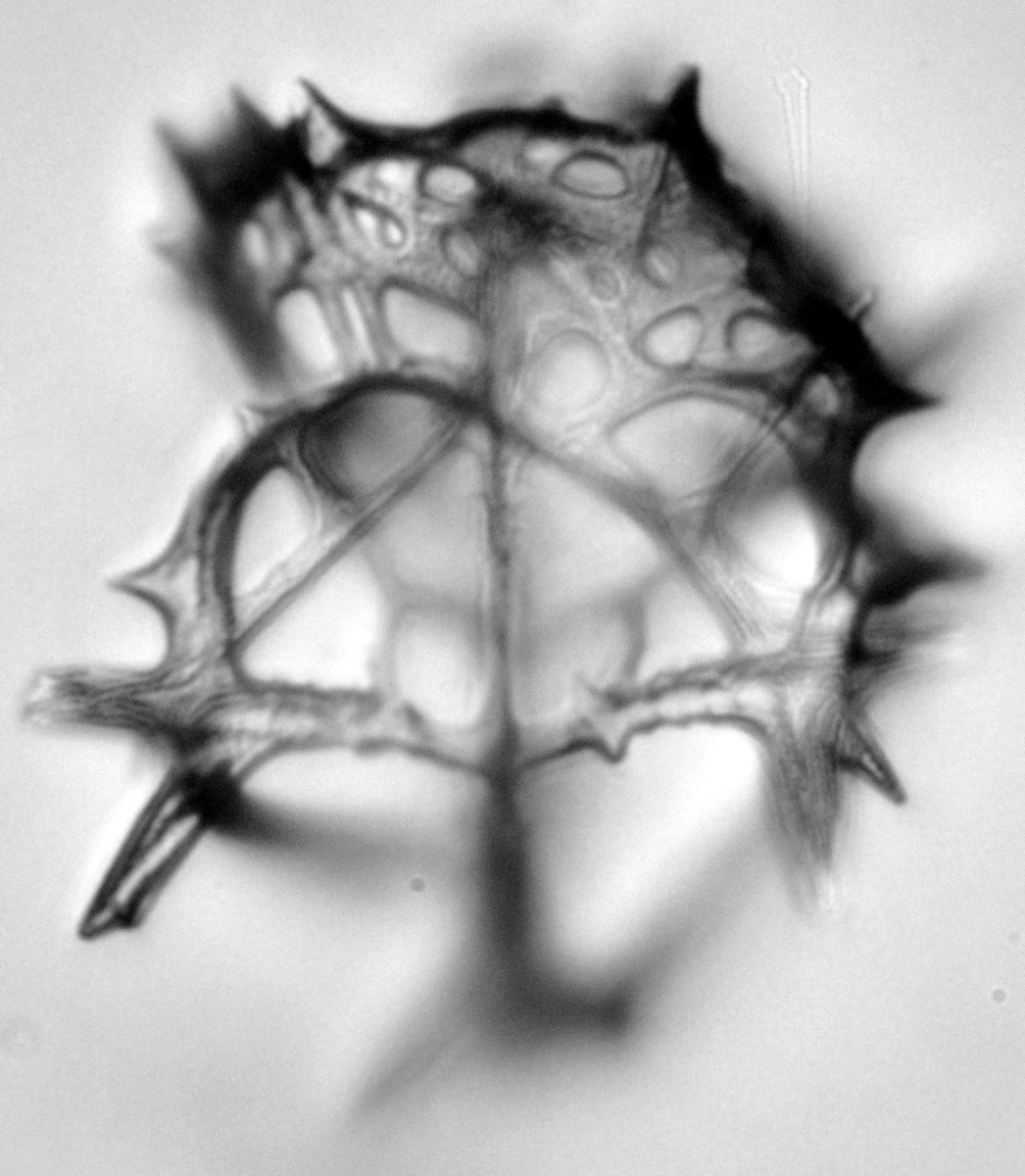
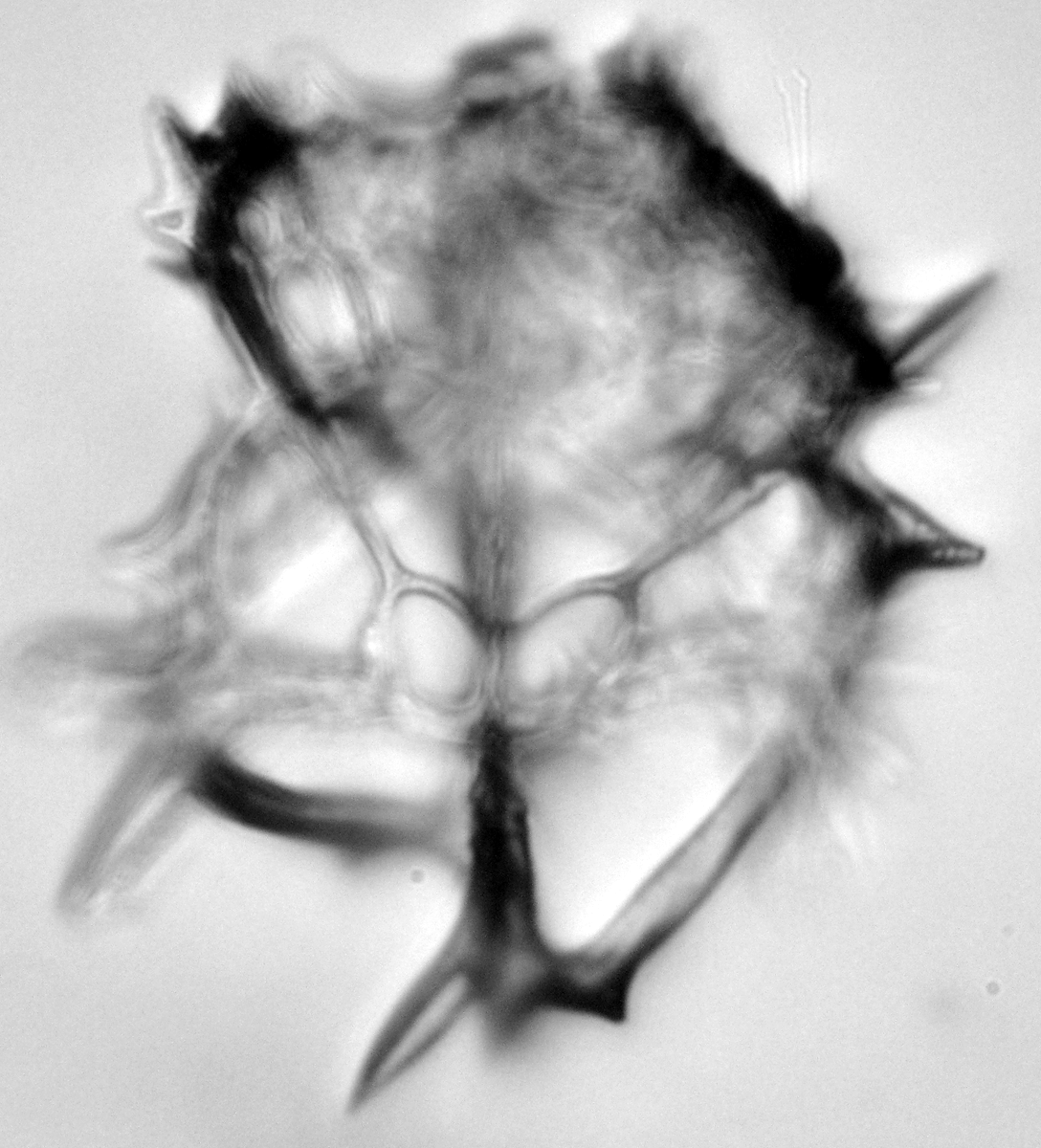
#FossilFriday At the complete opposite of the morphological spectrum of Plagicanthidae from last weeks' species, here is Plectacantha cresmatoplegma Nigrini 1968 from ODP Site 1138A, with quite a complex/interesting spicular arrangement.
2019-11-08 10:50:26
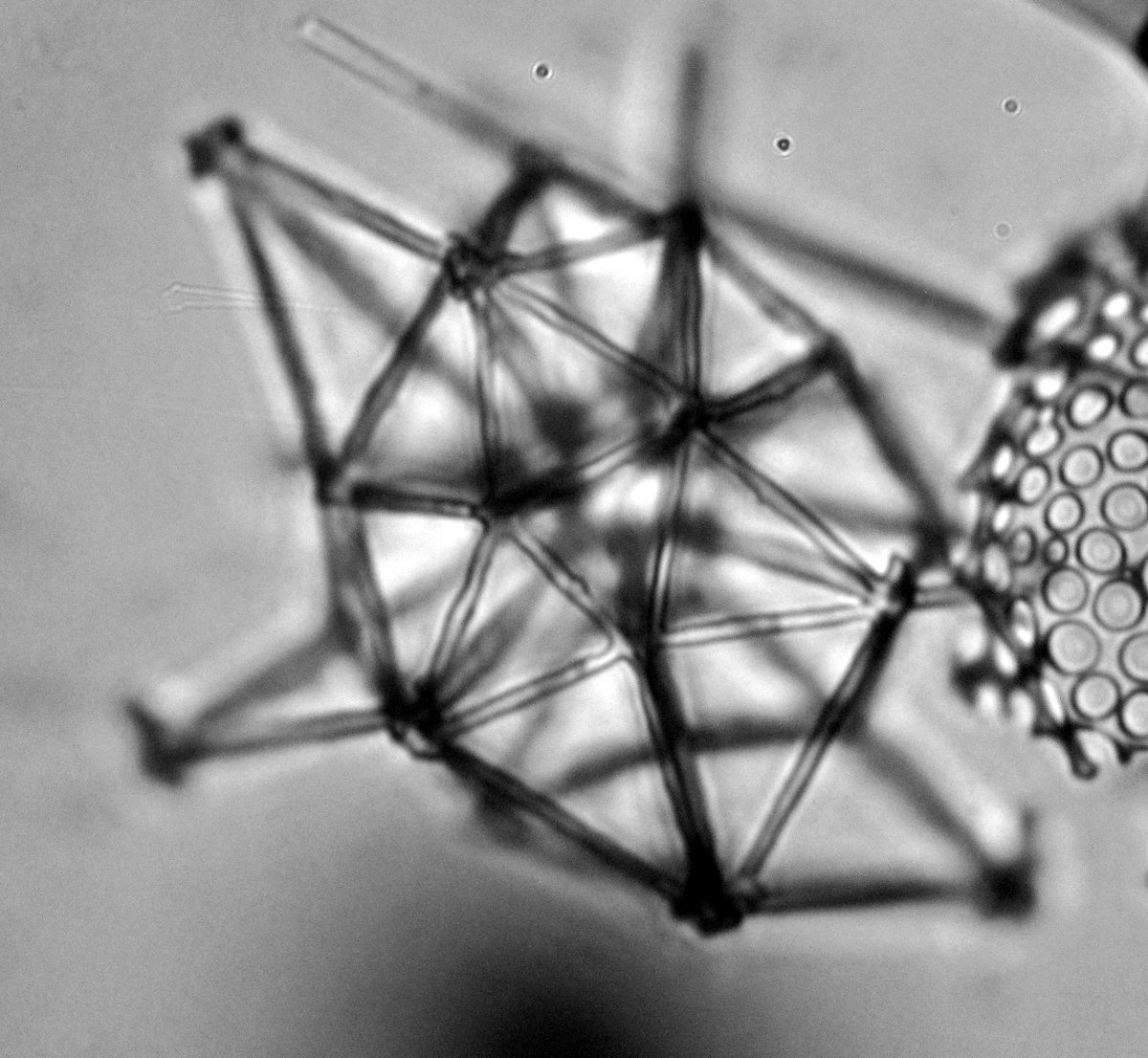
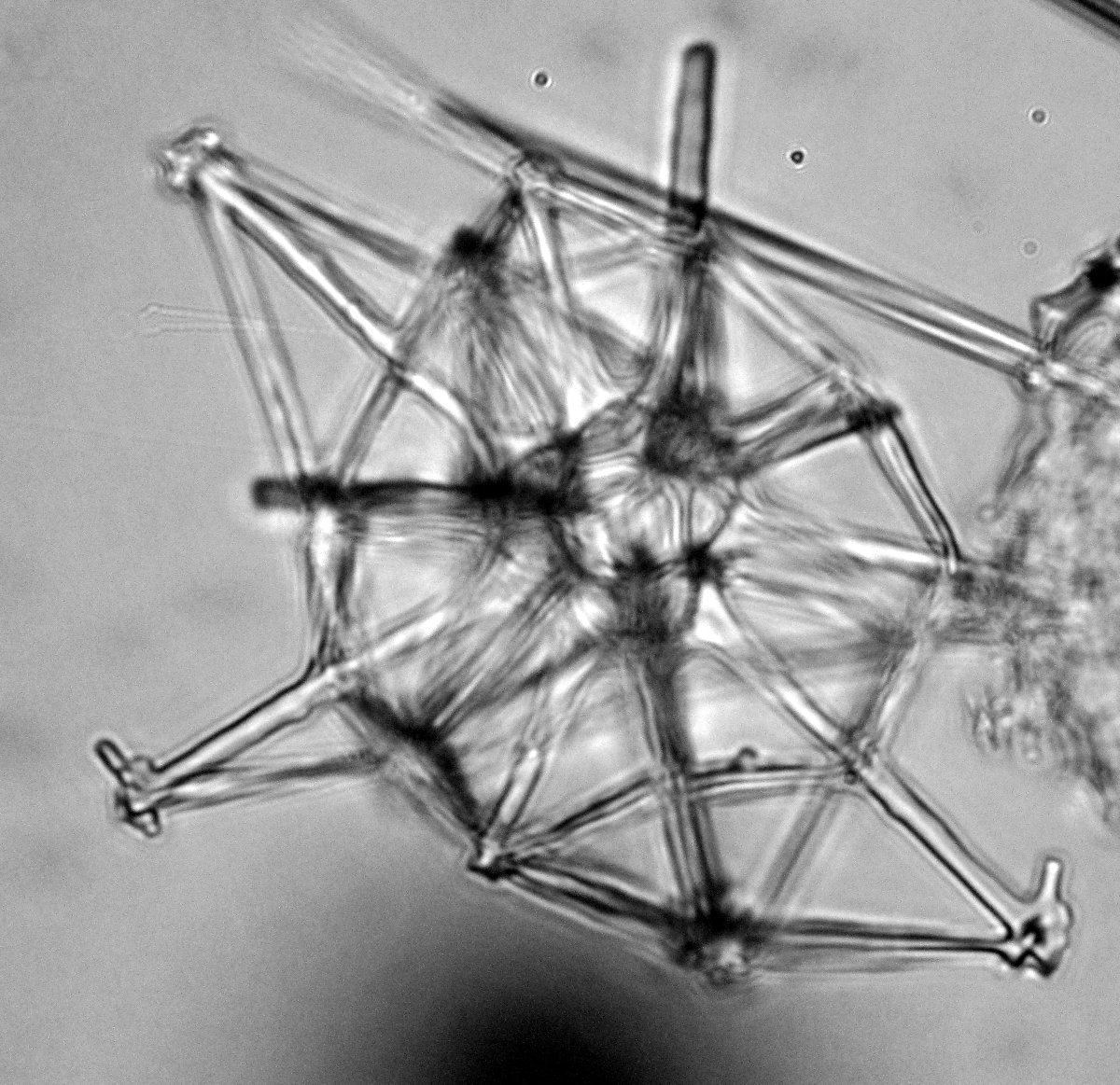
#FossilFriday As I didn't post a microfossil in a while, let's go with one of the weirdest-shaped spumellarian in the Neogene: Drymosphaera? pseudosagenoscena Sugiyama 1992 (here from the Kerguelen Plateau, early Miocene).
2019-12-13 14:51:51
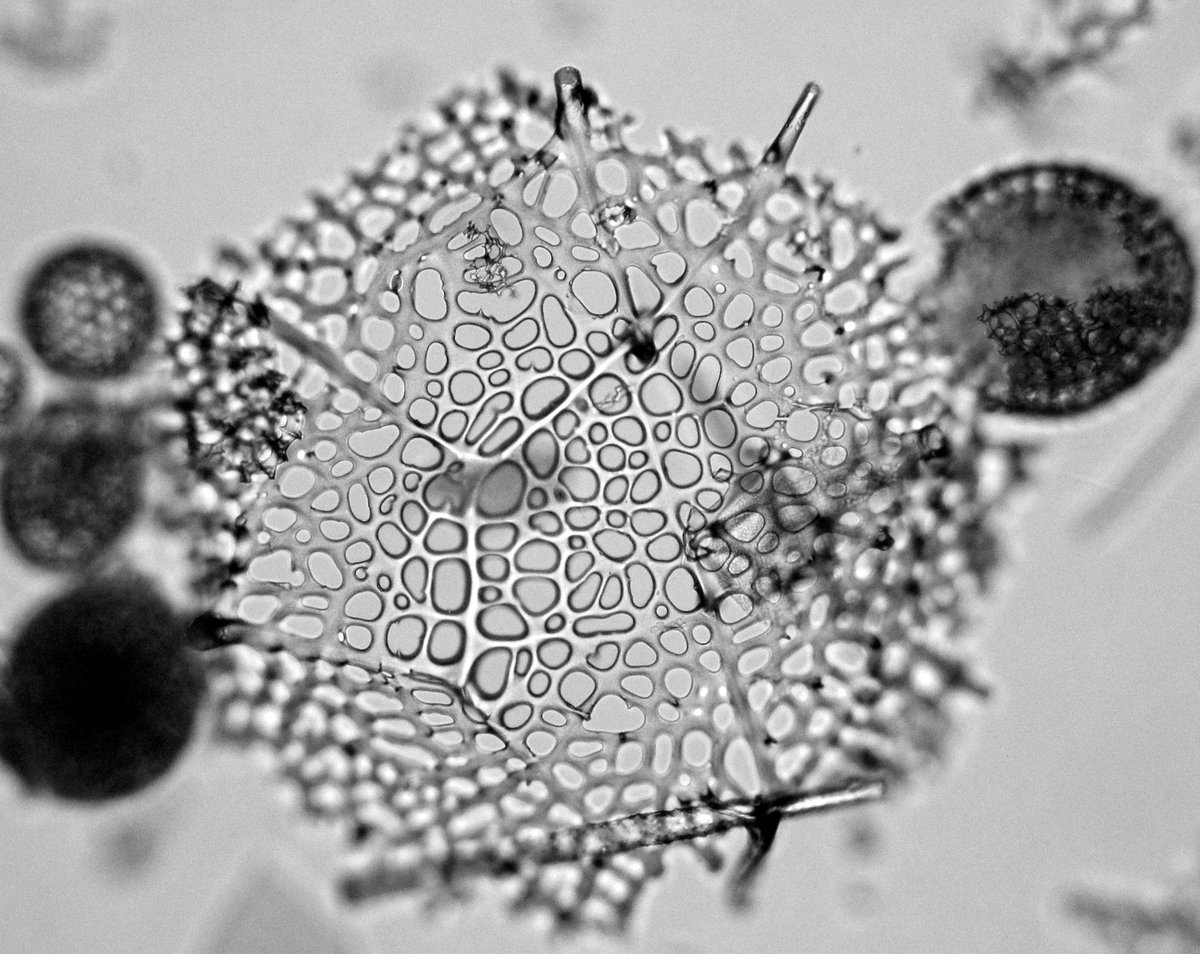
#FossilFriday As Orosphaeridae were in the radiolarian news this week, here is a fragment of one of those behemoths (here probably Oroscena carolae Friend & Riedel 1967) from the Early Miocene, with Larcopyle hayesi (Chen 1975) for scale on the right.
2020-01-10 09:46:36
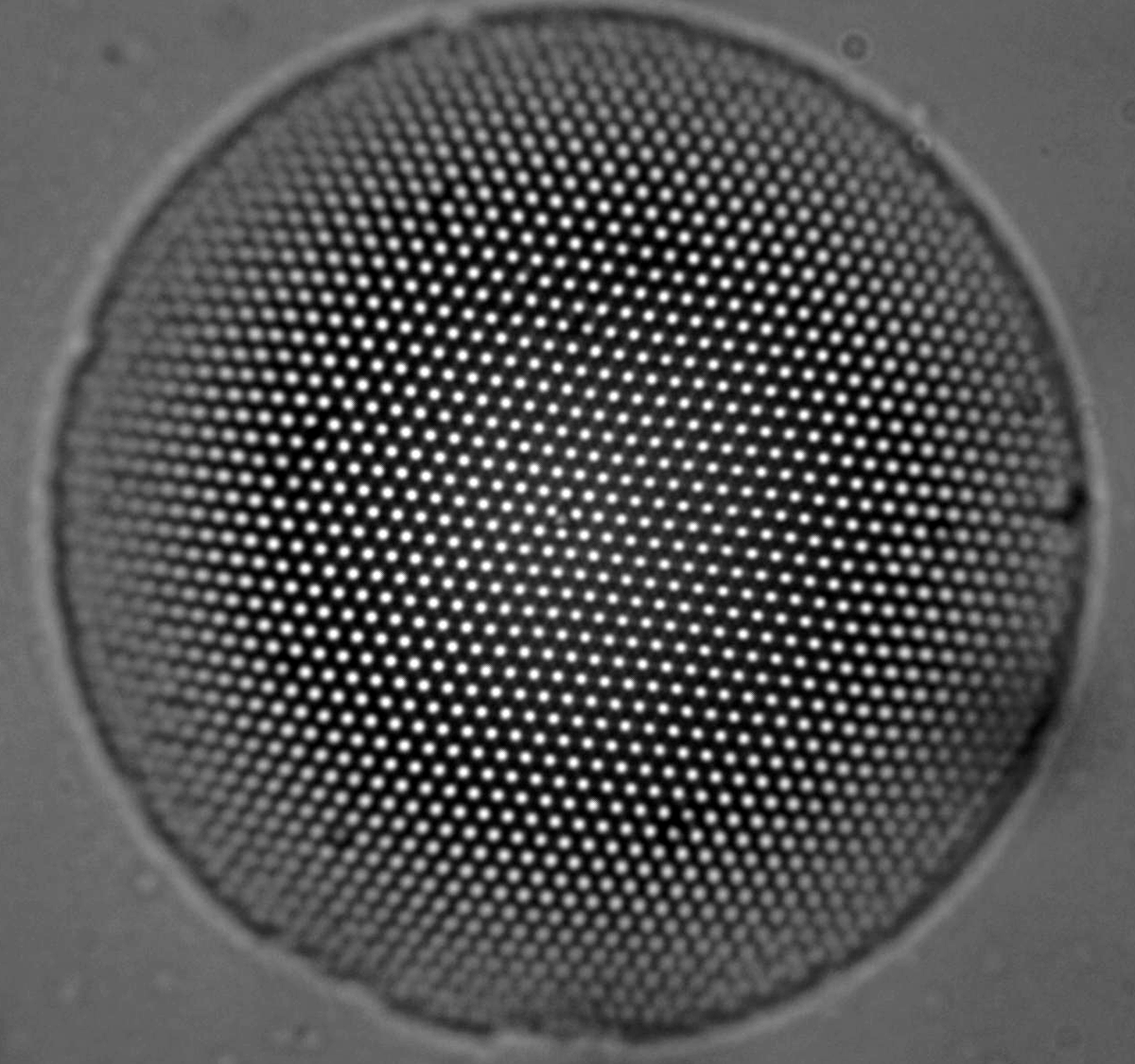
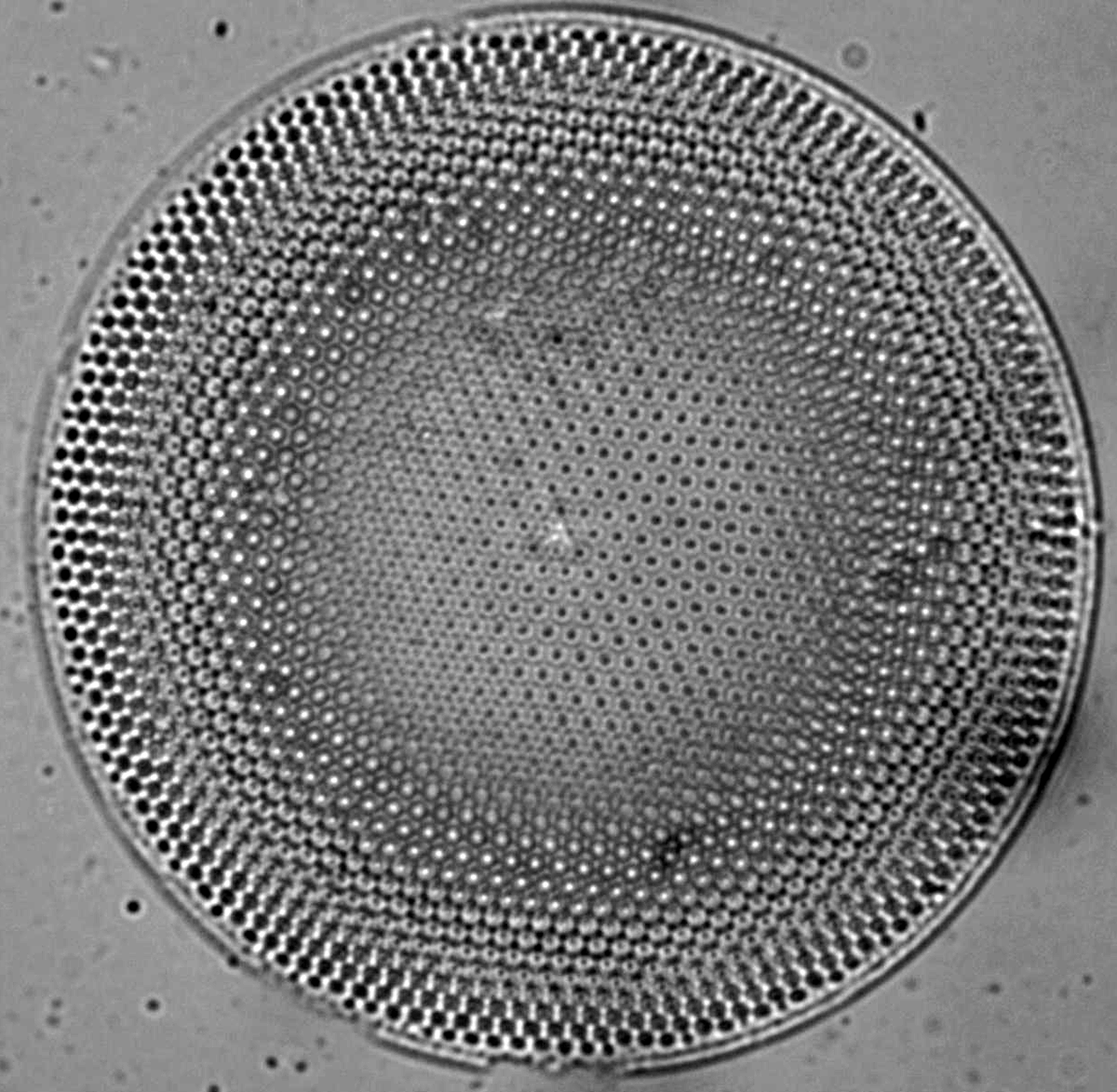
#FossilFriday this week, in hommage to a great paper by Hull et al. in Science today (https://t.co/k5aoZM7n2n), here is a species [Thalassiosiropsis wittiana (Pantocsek) Hasle] which, like many other diatoms and radiolarians, went through the KPg boundary completely unaffected :)
2020-01-17 10:23:57
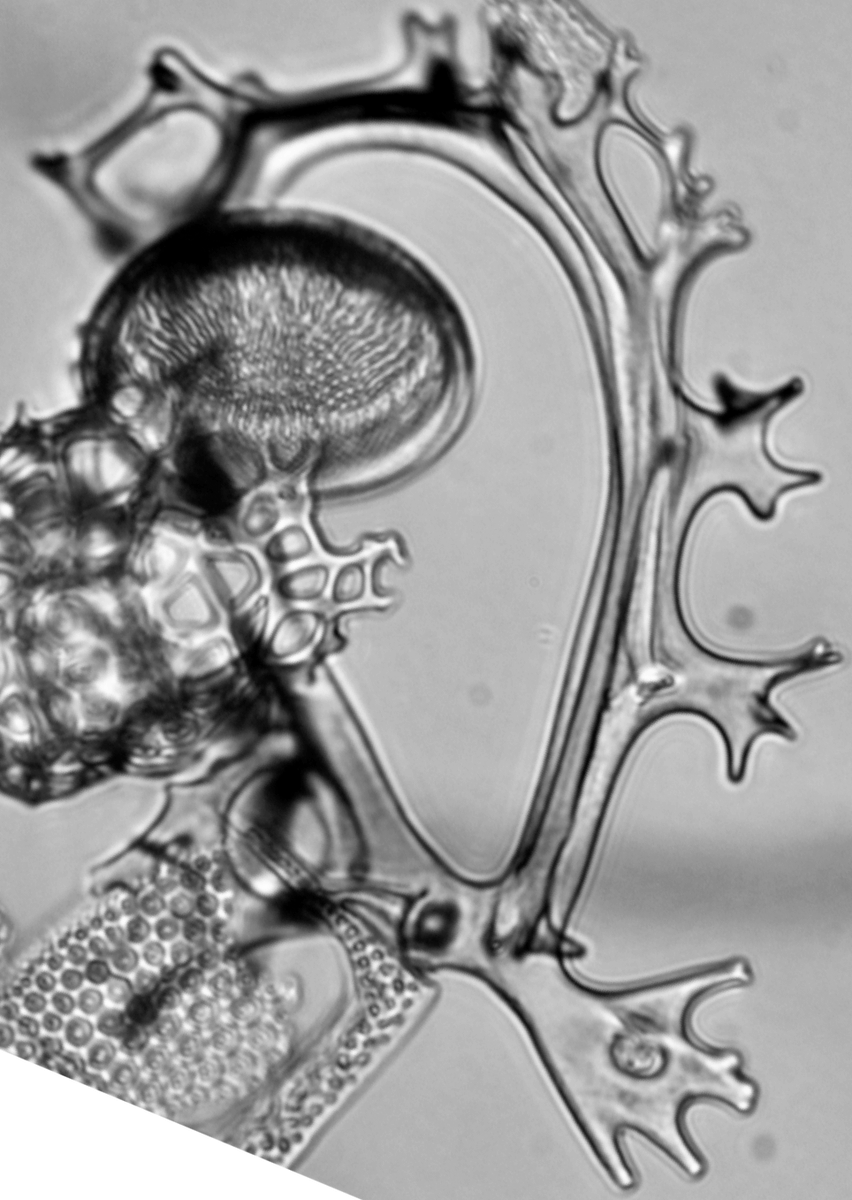
#FossilFriday An unidentified nassellarian: could be an isolated sagittal ring of a broken trissocyclid or a specimen of an unknown species of Zygocircus (which are solely composed of such a ring). From the earliest Oligocene of the subantarctic South Atlantic.
2020-01-24 10:27:33
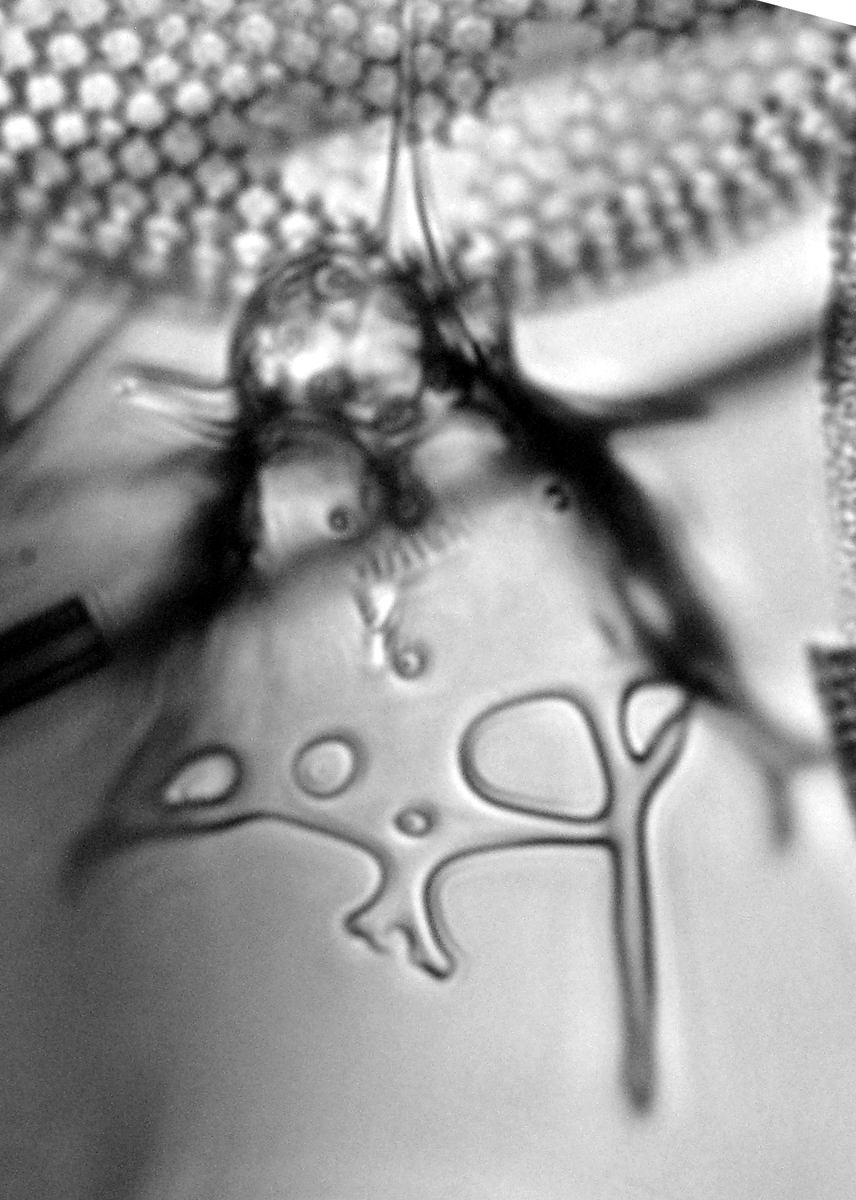
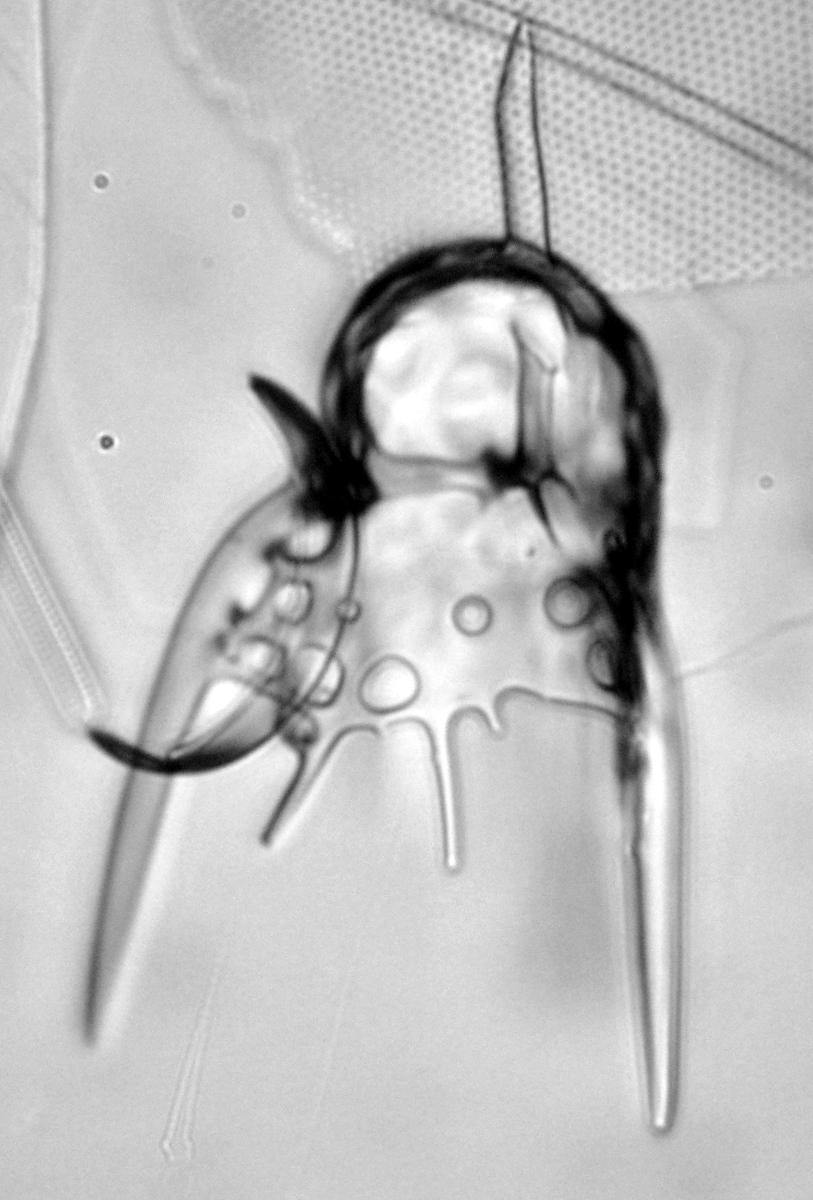
#FossilFriday In my ongoing series showing my love for Plagiacanthidae, I'd like to demonstrate they are not just the weirdest but also the cutest using Exhibit A and B: two unidentified specimens from the Pliocene of the Kerguelen Plateau and the late Miocene of the Weddell Sea
2020-02-07 09:18:08
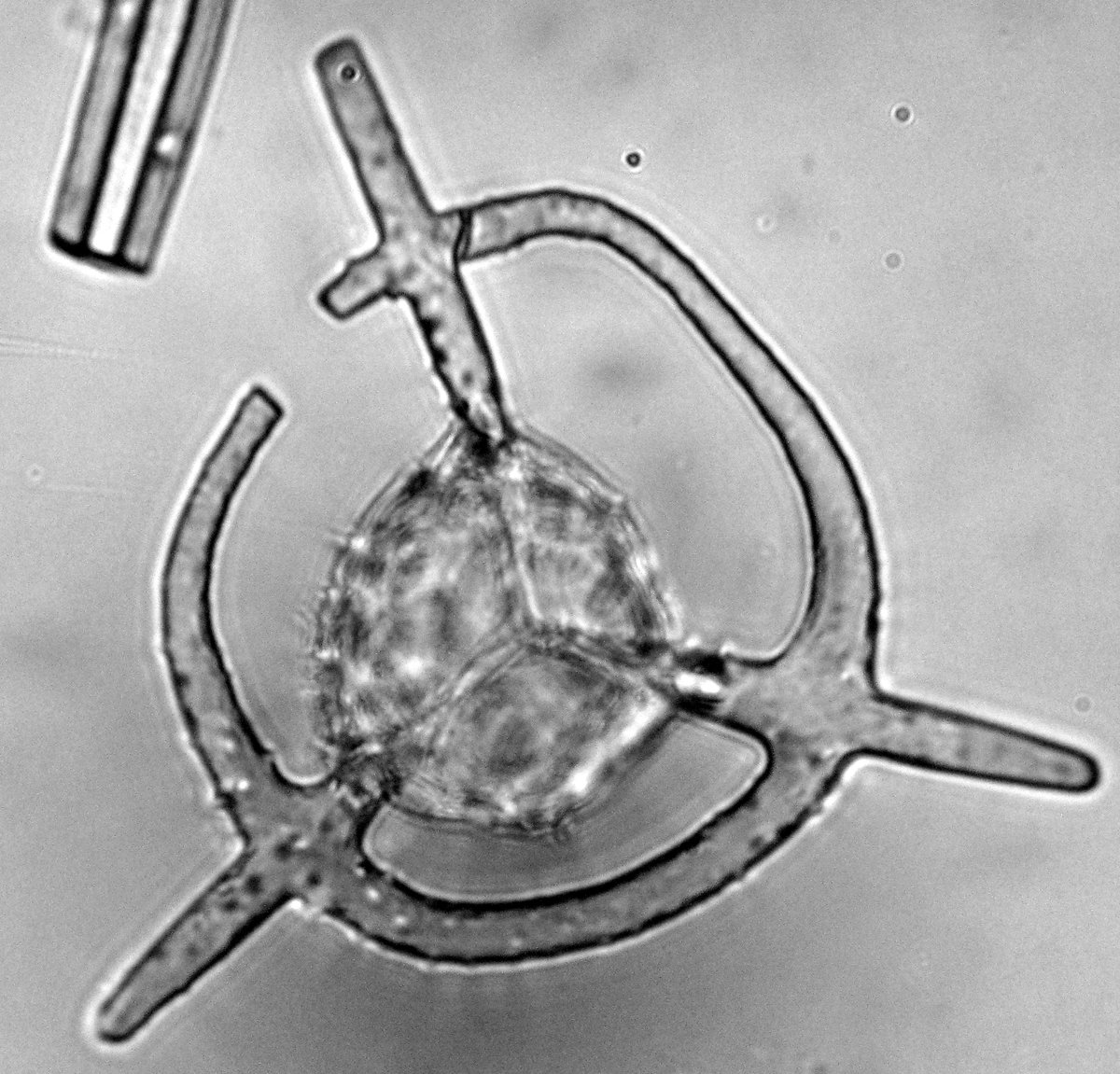
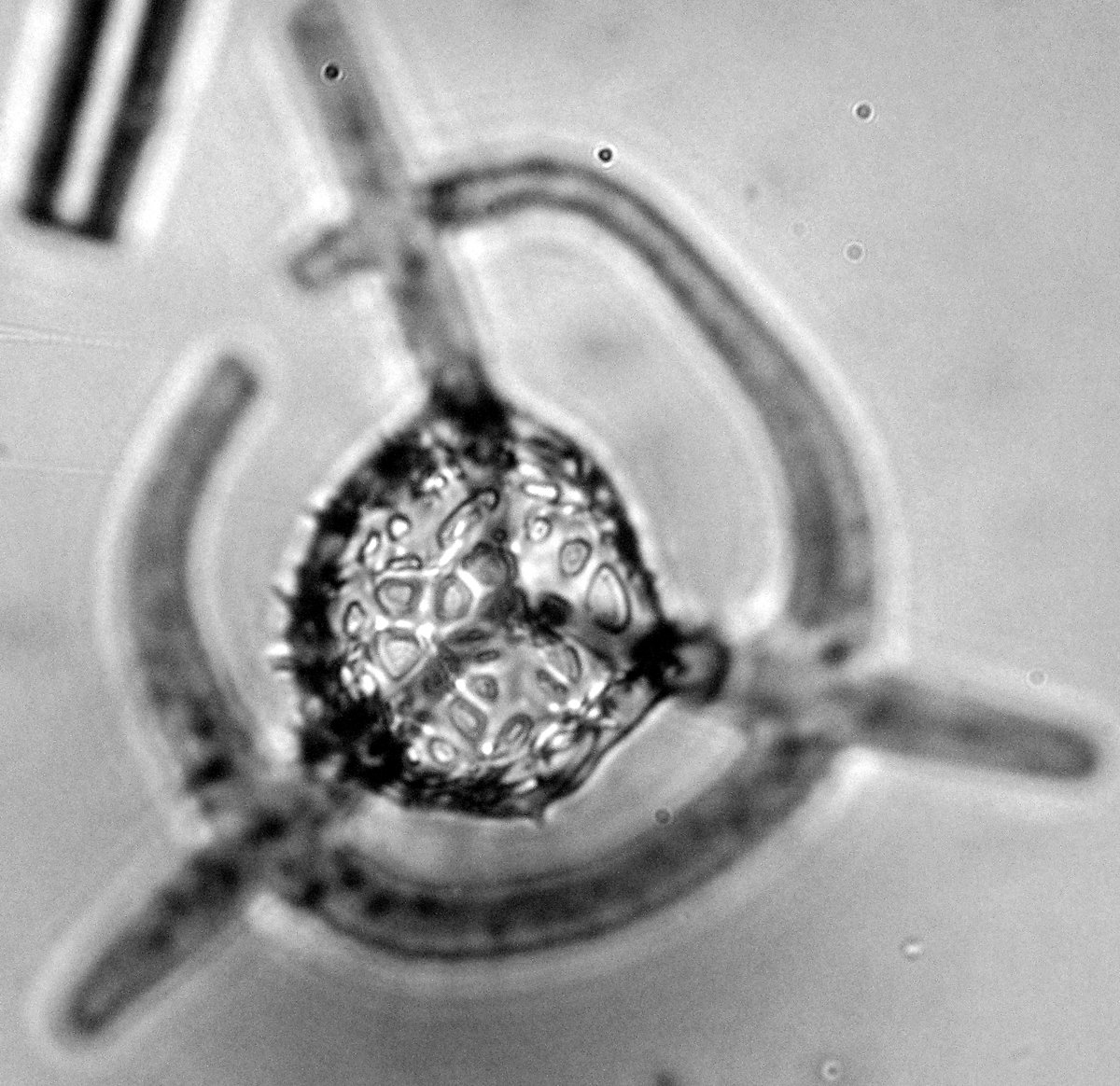
#FossilFriday #Radiolaria and I guess Exhibit C would be this cutie I described a few years ago: Enneaphormis tippula Renaudie & Lazarus 2016 (here the holotype from the late Miocene of ODP site 746A).
2020-02-07 09:27:44
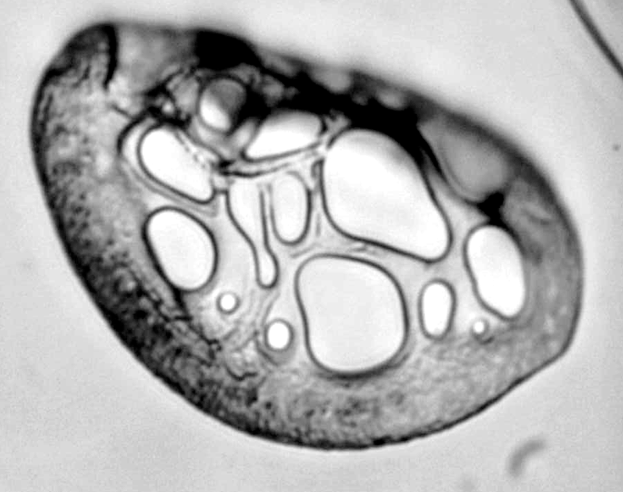
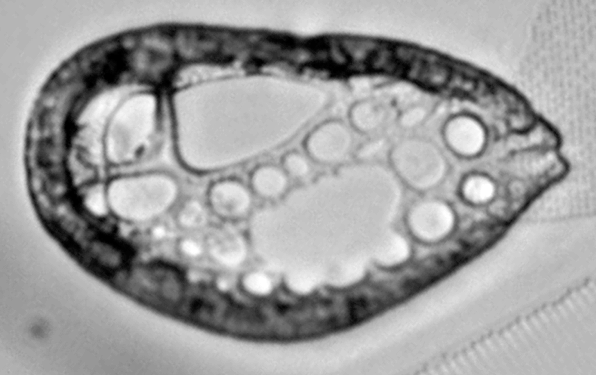
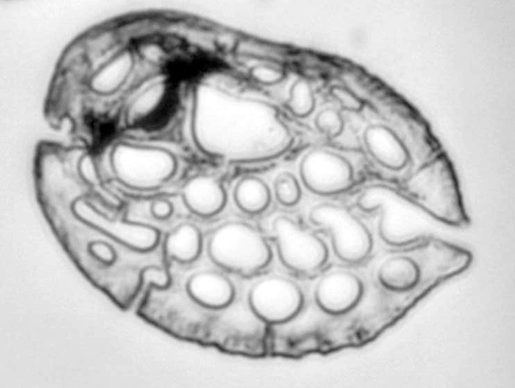
#FossilFriday I checked and I can confirm I didn't post any pictures of ebridians in 15 months which I guess mean I waited long enough and I can post new ones :) Here are some specimens of (what I think is) Triskelion gorgon Gombos 1992 from the late Eocene of the Southern Ocean
2020-02-28 15:26:32
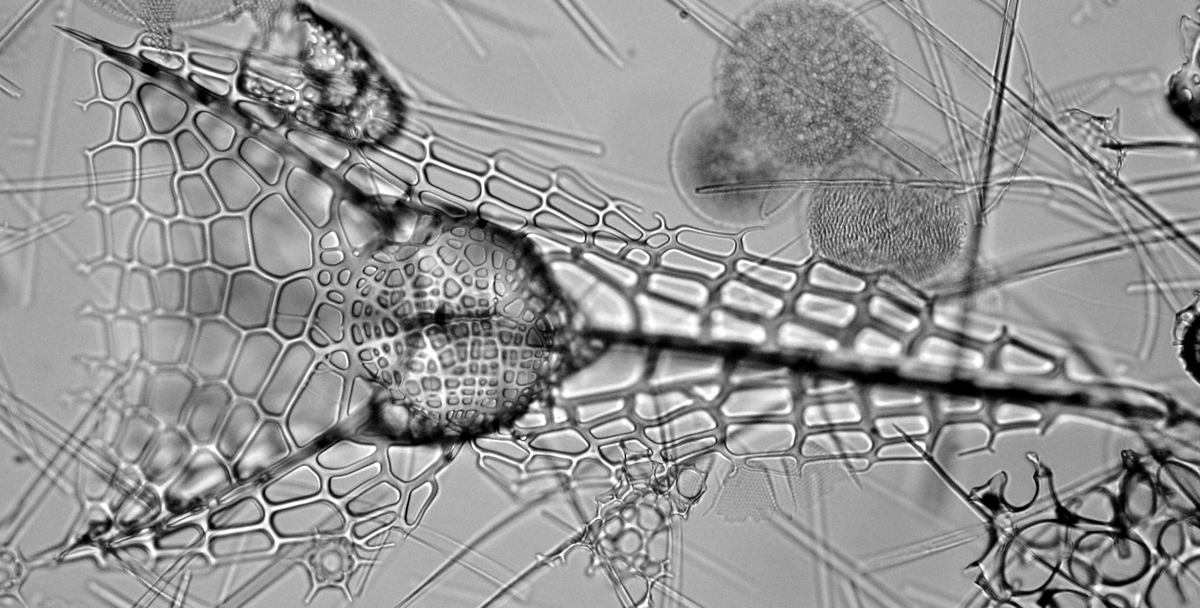
Here is another specimen pulled from the endless bag of weird-ass Bauplan that the Plagiacanthidae (Radiolaria, Nassellaria) offers: Callimitra solocicribatata Takahashi 1991 (here from the Pleistocene of the Kerguelen Plateau) #FossilFriday
2020-03-06 09:49:49
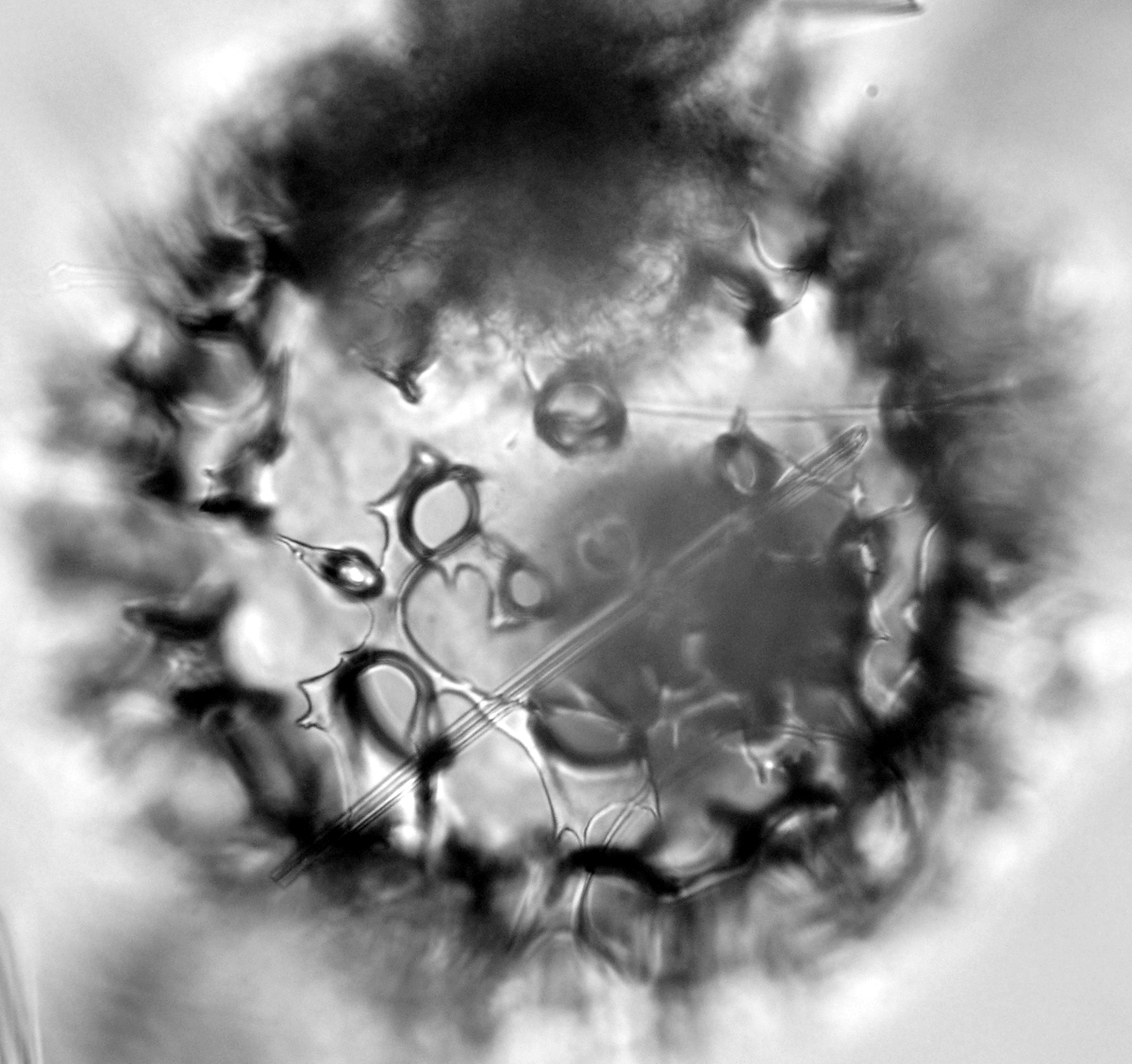
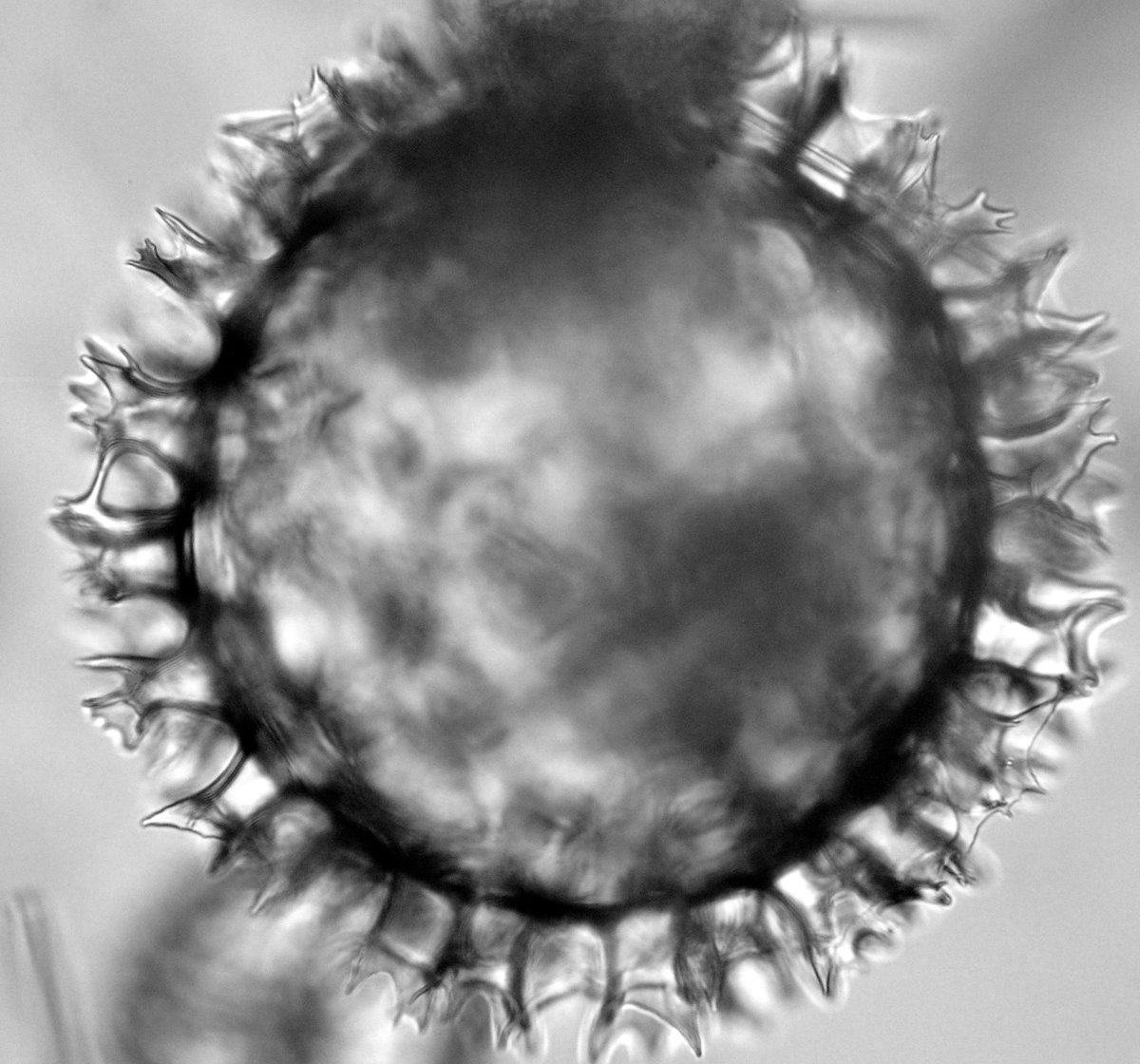
#FossilFriday I don't often post Collosphaeridae as I think they are difficult to photograph correctly, but for some reason I was thinking of this one all week: Acrosphaera murrayana (?) from the Miocene.
2020-03-13 11:43:03
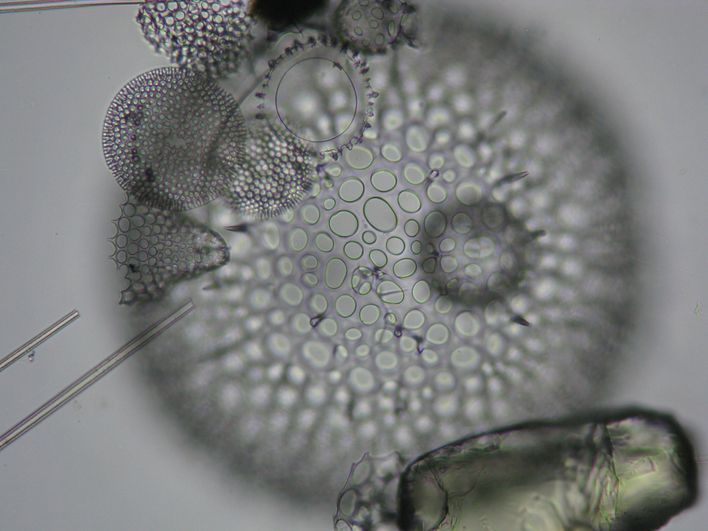
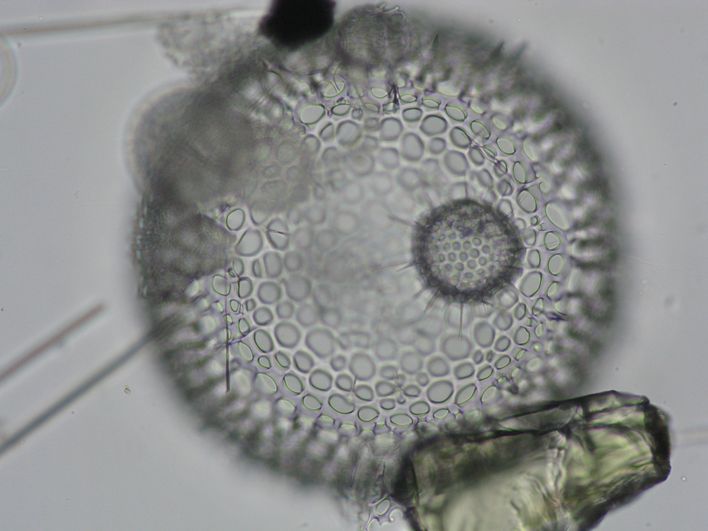
#FossilFriday This week this loose medullary shell stuck in its cortical shell feels somewhat more relatable than usual :) [Carposphaera annikae Renaudie & Lazarus 2012; Late Miocene; Kerguelen Plateau] #Radiolaria
2020-03-27 10:34:18
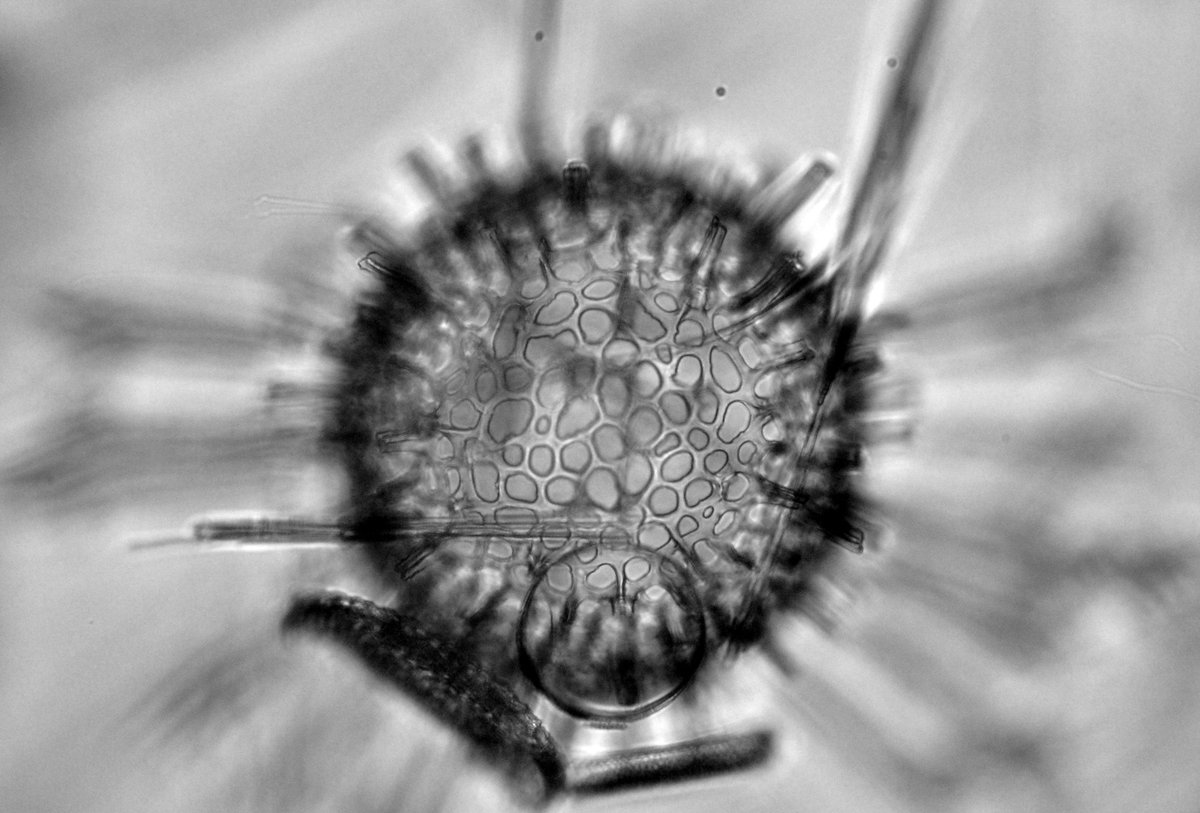
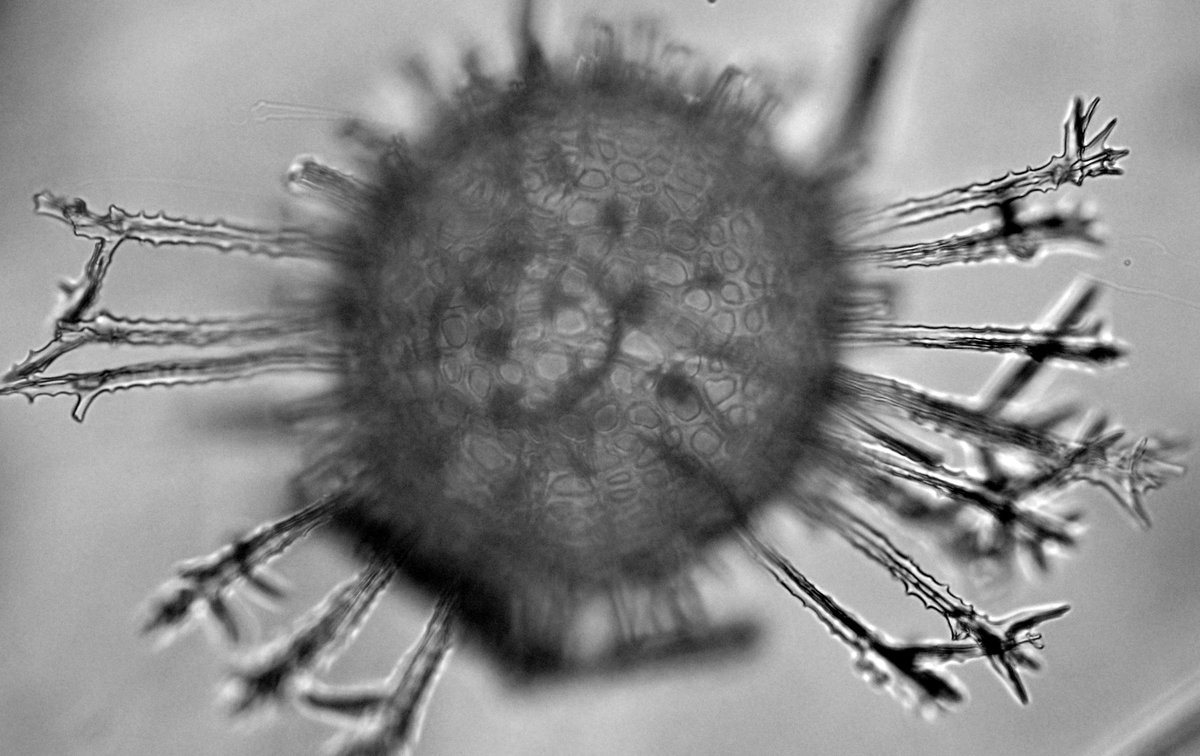
#FossilFriday on a saturday because I lost any sense of time: here is Cladococcus dendrites (?) Haeckel 1887 (Spumellaria, Radiolaria) with his very own social-distancing mechanism (Kerguelen Plateau, Miocene).
2020-05-02 11:07:50
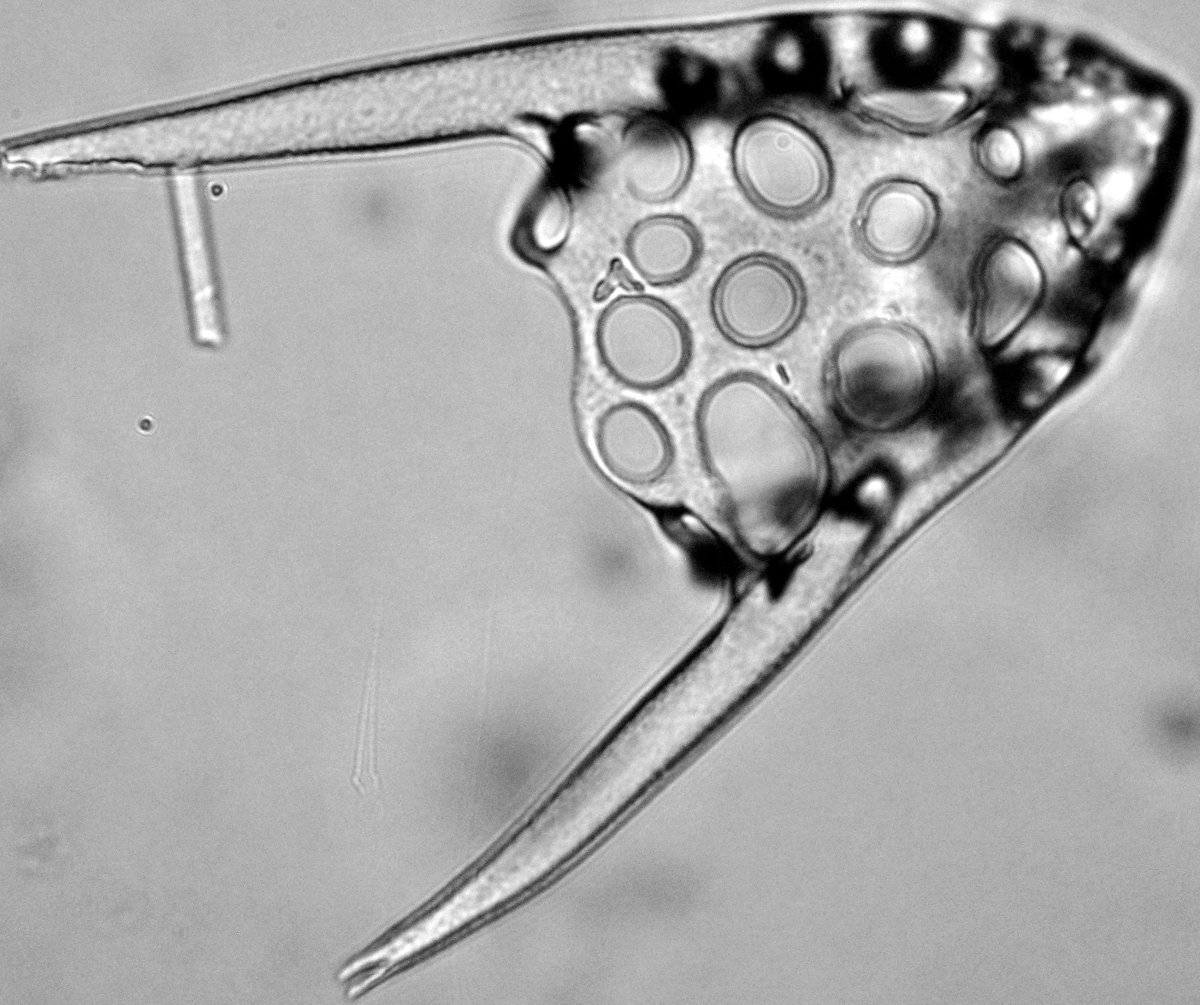
In preparation for #TowelDay next monday, here is one of the nassellarians that looks the most like a spaceship: Archipilium macropus (Haeckel) Petrushevskaya 1981 (Plagiacanthoidae, #Radiolaria). Not sure it was equipped with a Bistromatic Drive though :) #FossilFriday
2020-05-22 10:30:03
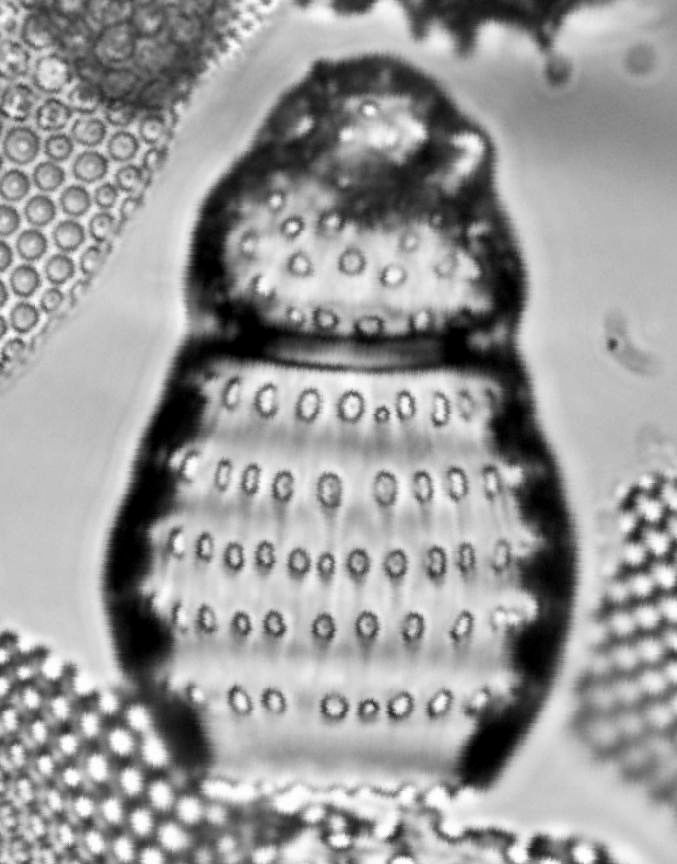
#FossilFriday Miss being able to use my microscope whenever I want, so here is a late(st) Eocene Dictyoprora (Nassellaria, Radiolaria), probably D. urceolus, from the South Atlantic to cheer me up.
2020-06-19 11:39:27
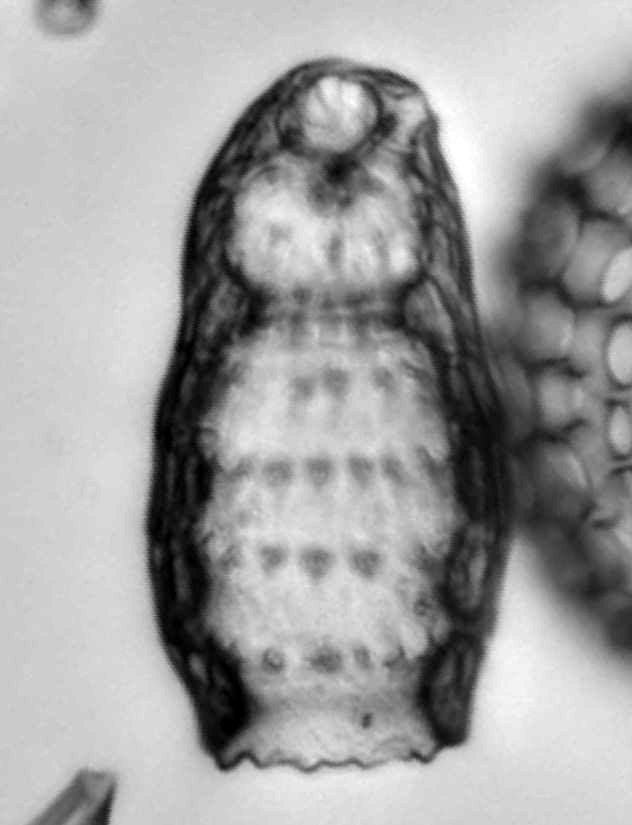
#FossilFriday Interesting thing about Dictyoprora is that this (morpho-)genus is known from the Early Jurassic to the Early Oligocene, making it one of the oldest Artostrobiid out there. Here is a (possible?) specimen of that genus from the Cretaceous of the Indian Ocean.
2020-07-03 11:27:36
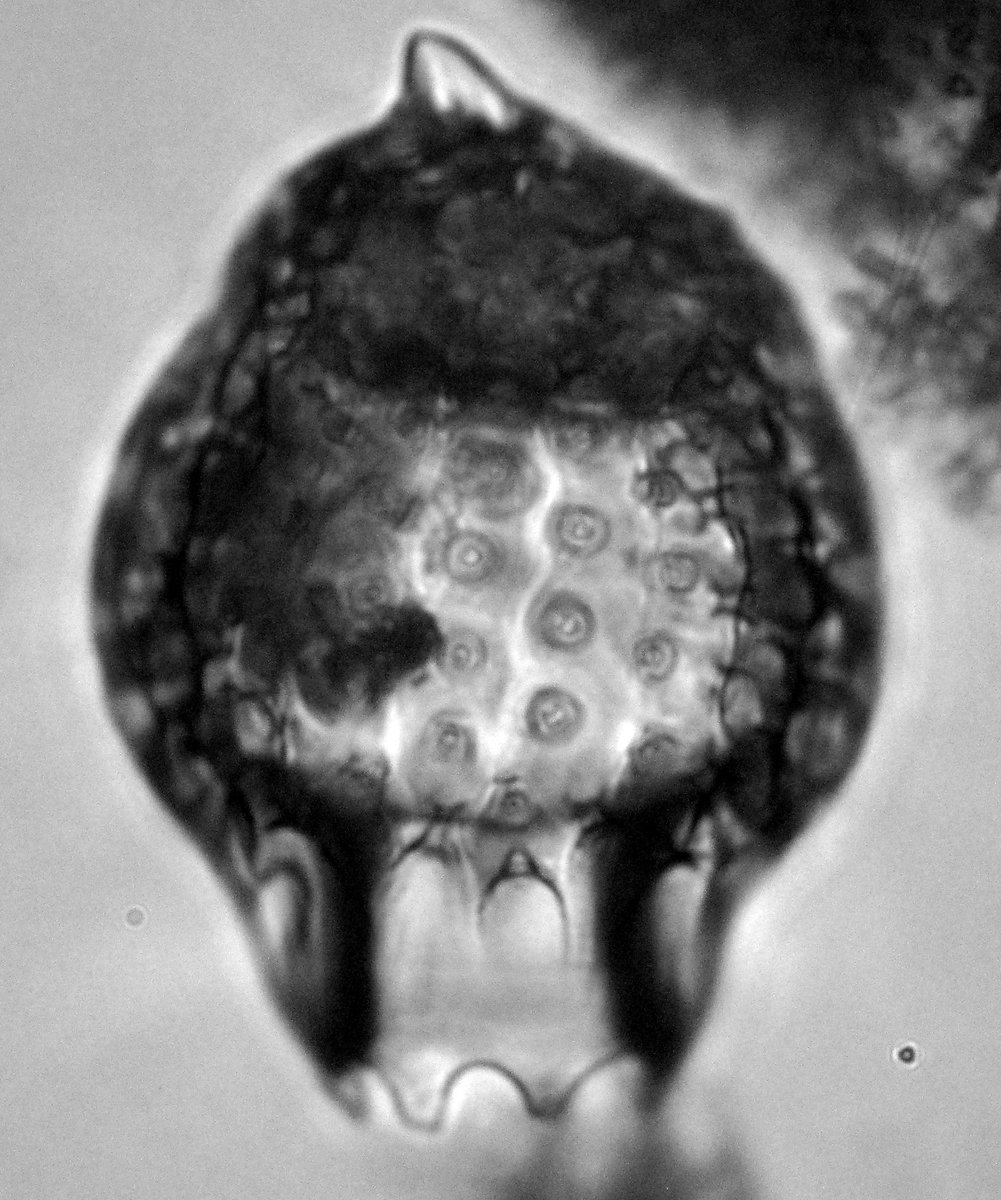
#FossilFriday Some of you may have already seen that specimen as it's my avatar on numerous websites, but years after it's still my favourite specimen I ever found. Cystophormis pulchrum (Carnevale 1908) was indeed aptly named (#Radiolaria,Carpocaniidae;~10Ma; Kerguelen Plateau).
2020-07-24 12:14:31
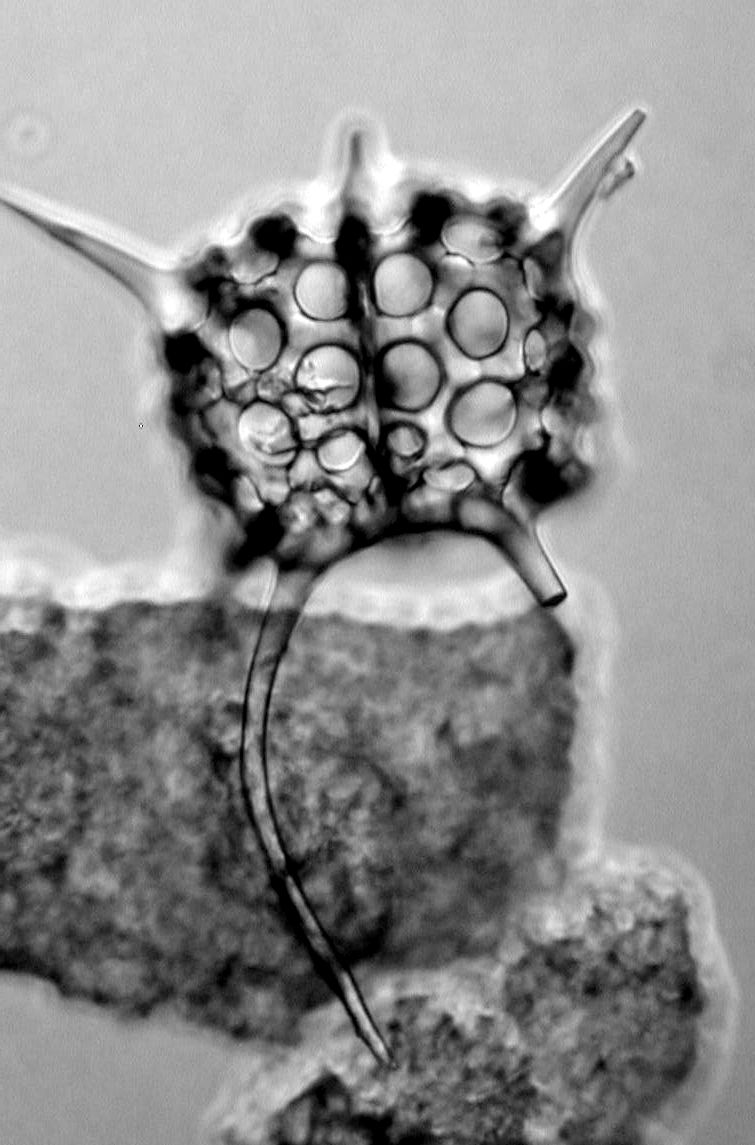
#FossilFriday #FlashbackFriday here is one of the first radiolarian I photographed 14 years ago when I was studying in Paris: a triospyrid, possibly Giraffospyris didiceros (Ehrenberg) Goll 1969, from the Eocene of Demerara Rise (Equatorial Atlantic, ODP Site 1260A).
2020-07-31 09:52:49
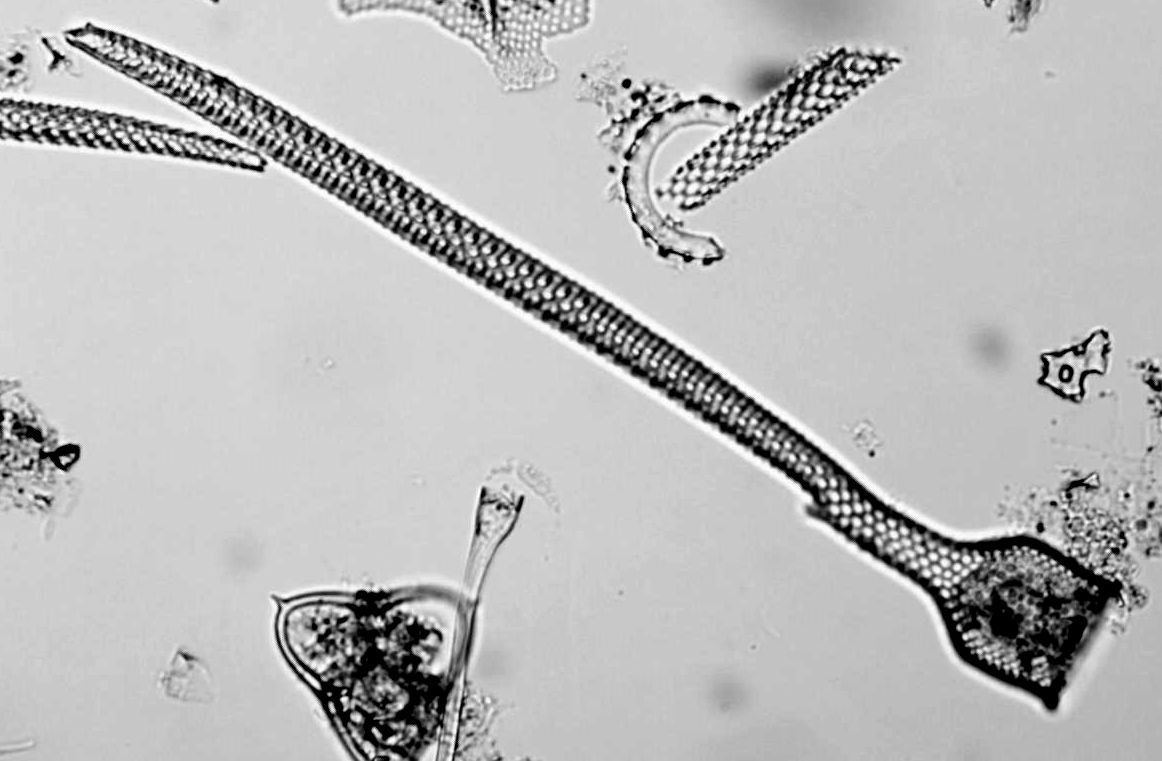
#FossilFriday As a follow-up on wednesday tweet, this is what a more usual Pyxilla looks like (found in the same sample, i. e. late Eocene South Atlantic).
2020-08-07 11:47:03
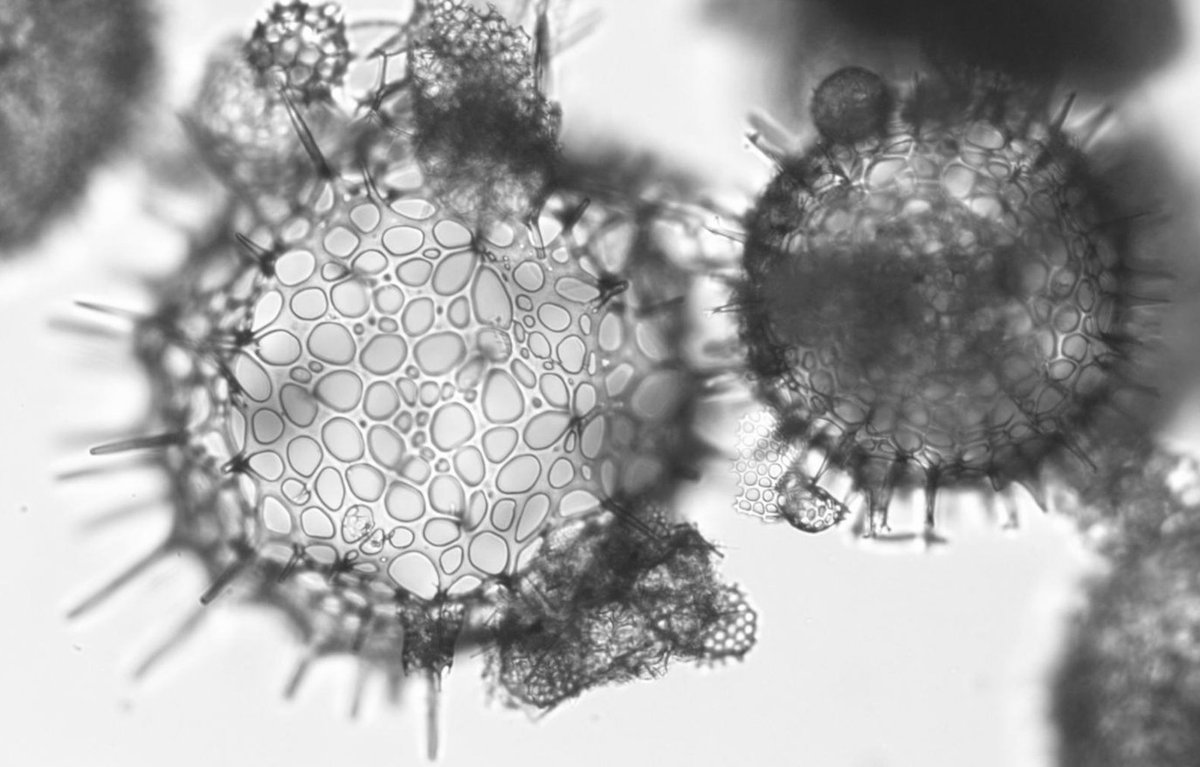
Spent my lunch break taking field-of-views of assemblages of #Radiolaria for a colleague preparing online courses; good occasion for me to have a look at slides I wouldn't normally look at. Here some neat actinommids from the equatorial Pacific (Pleistocene) #FossilFriday
2020-09-25 13:21:38
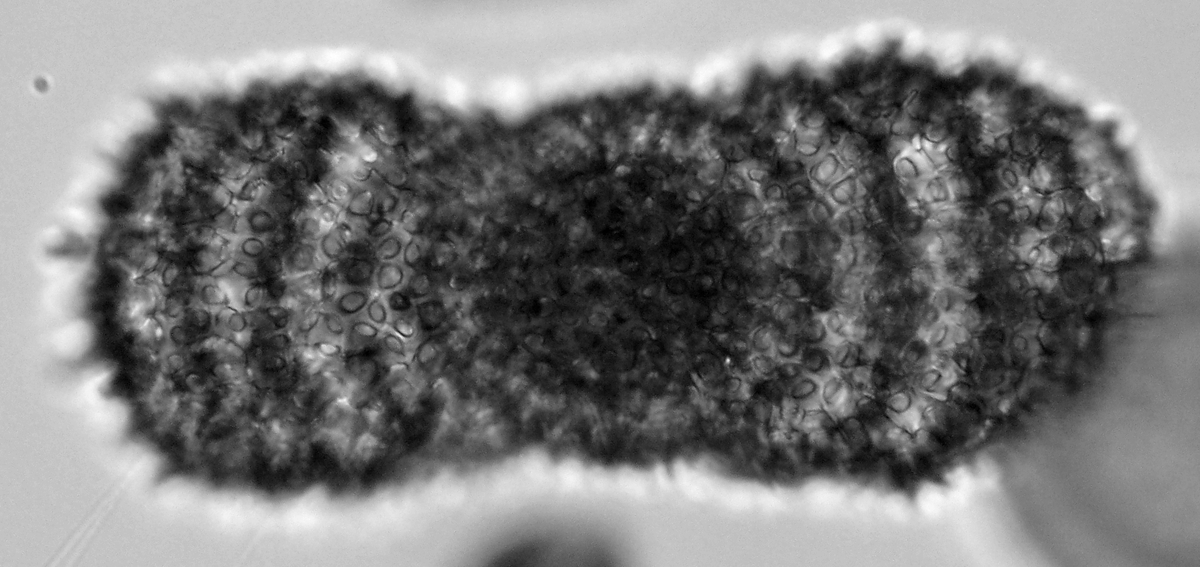
For this #FossilFriday here is the short-lived spongodiscid Amphymenium challengerae Weaver 1983 from the Kerguelen Plateau (Late Miocene) #Radiolaria
2020-11-27 09:47:26
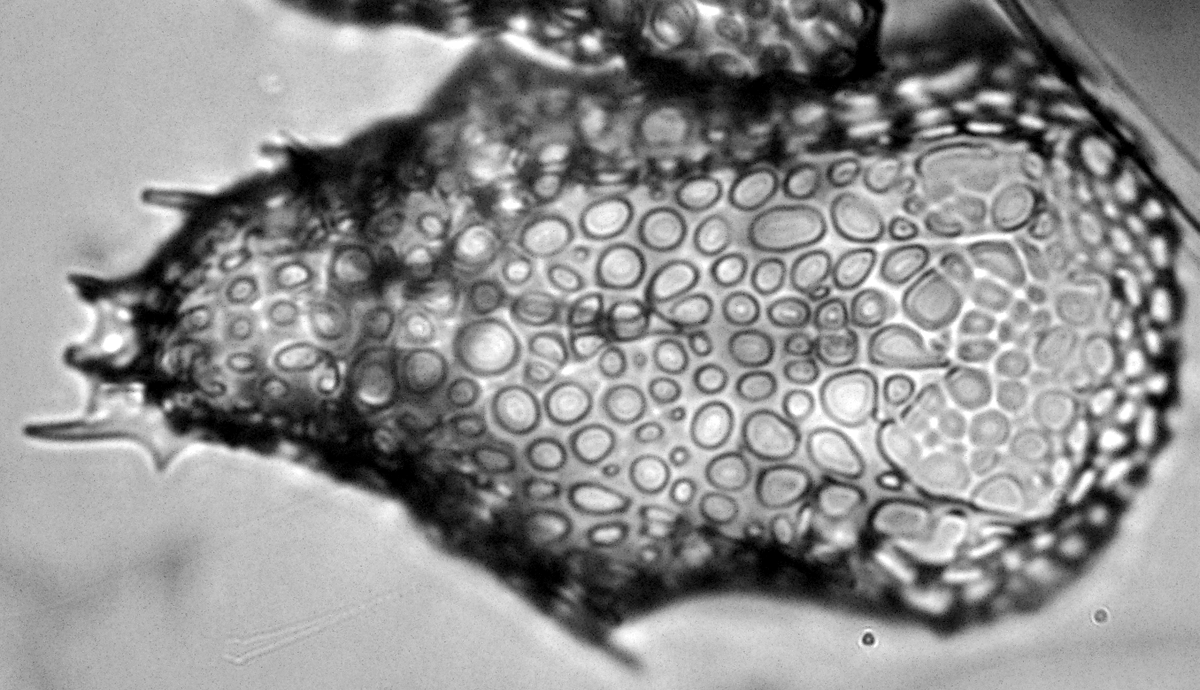
#FossilFriday As I am reviewing my stack of lophophaenids (#Radiolaria) for an upcoming MS I am collaborating on (spoiler alert), I restumbled upon that spectacular holotype of a species I described a few years ago: Antarctissa kjelli Renaudie & Lazarus 2015.
2021-01-15 09:06:15
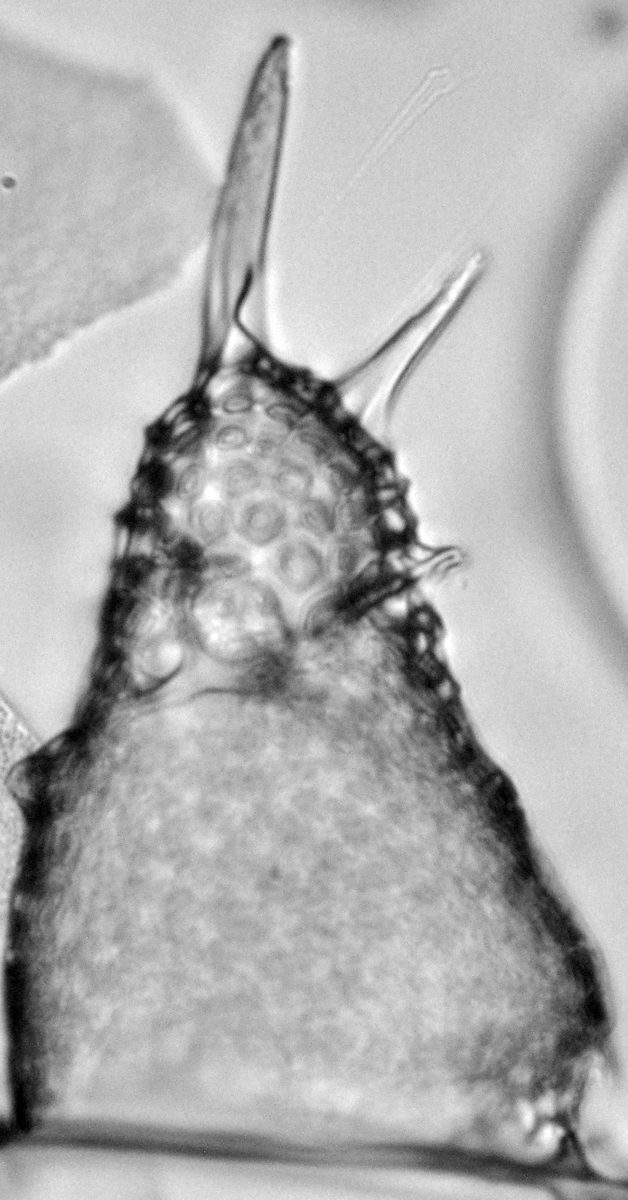
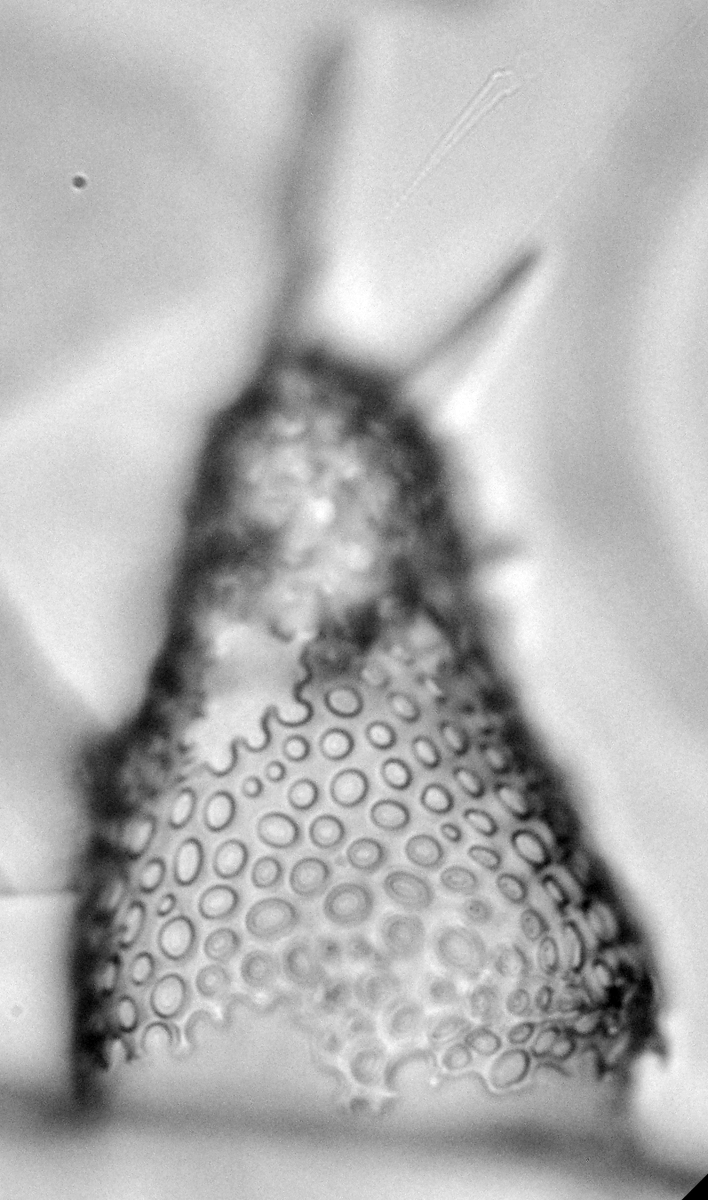
#FossilFriday Holotype of Lophophaena leberu Renaudie & Lazarus 2012 (Plagicanthidae, #Radiolaria) from the Early Miocene of the Southern Ocean.
2021-04-02 14:29:00
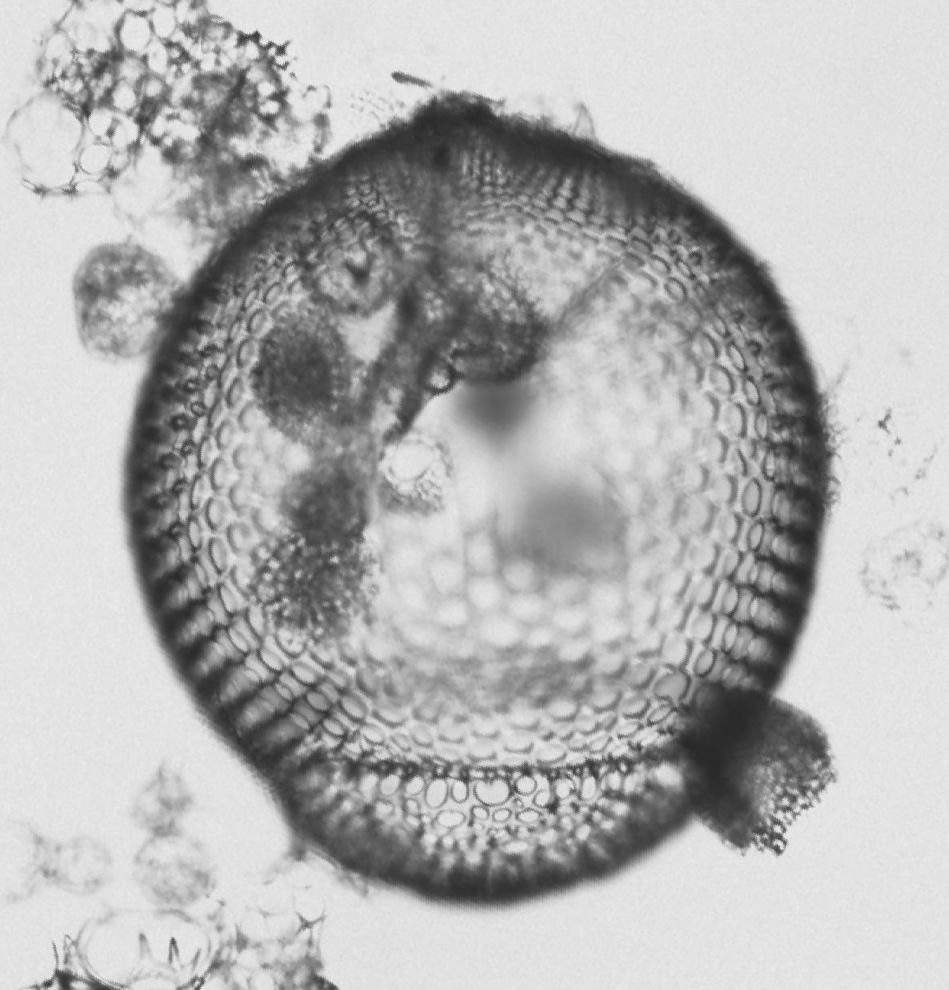
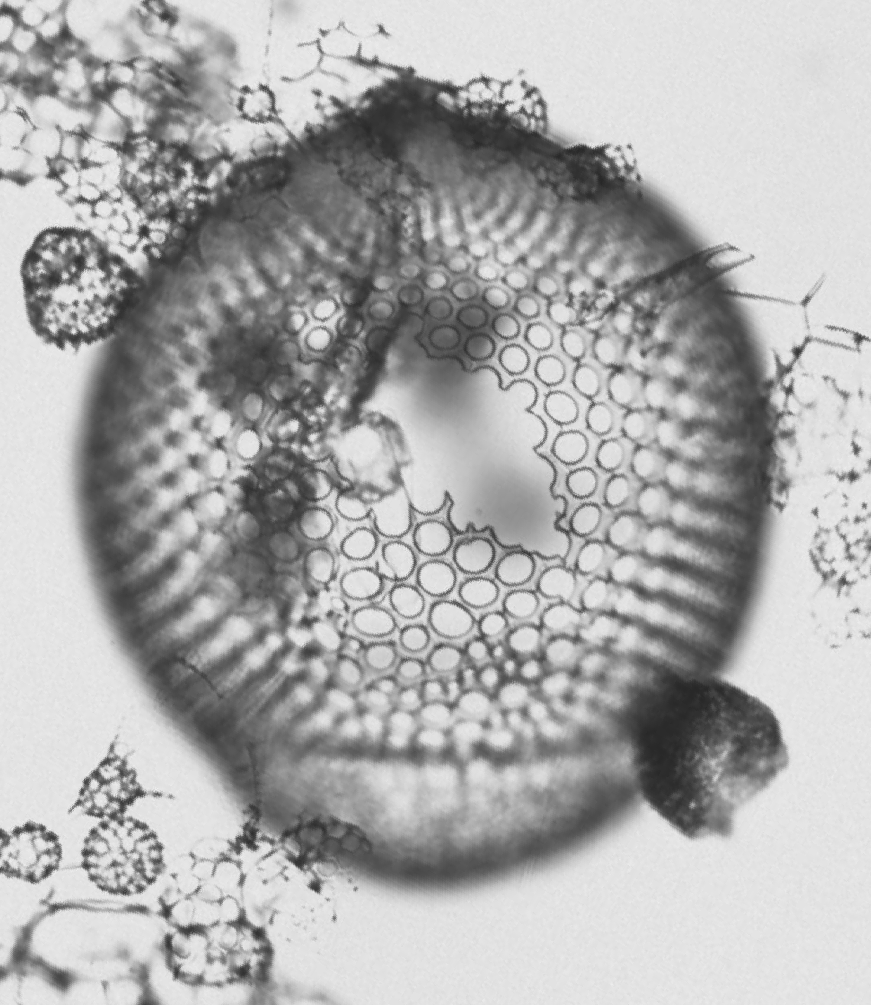
As it's been a long time since I posted a radiolarian, here is one of the biggest nasselarian I could find :) Lophocyrtis neatum (Sanfilippo & Riedel 1970) from Pleistocene of the eastern Indian Ocean #Radiolaria #FossilFriday
2021-06-11 09:58:49
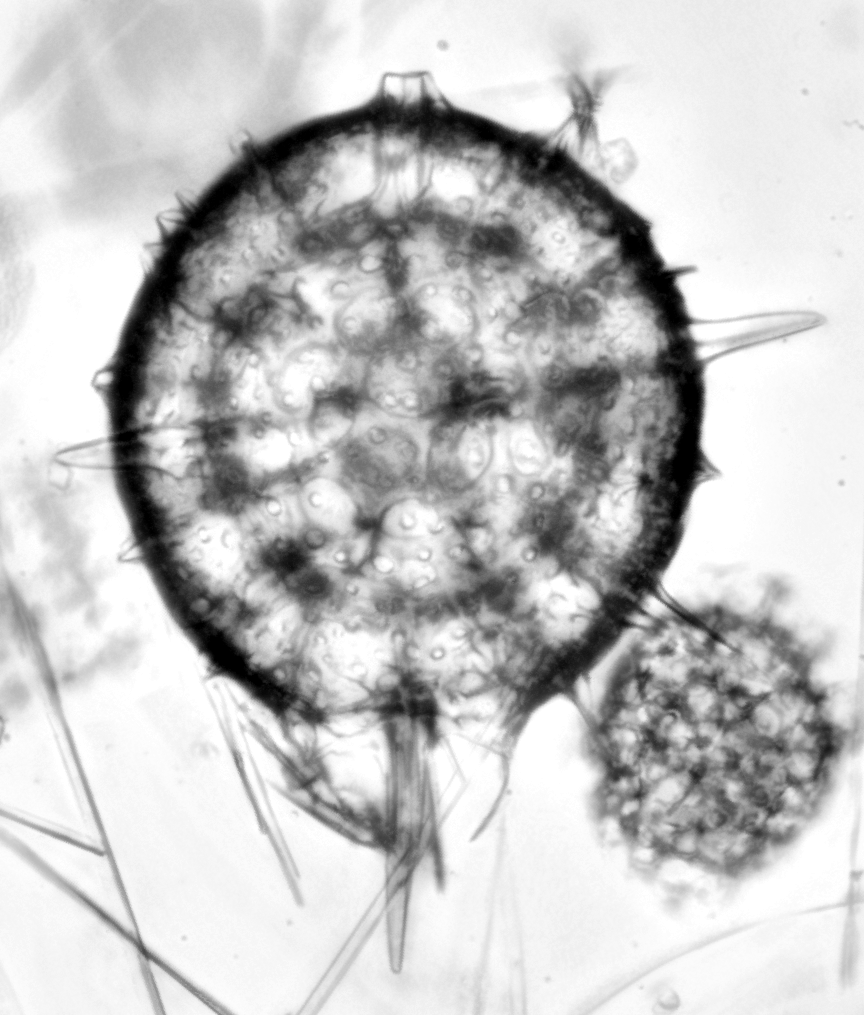
Spent a great week with @MargotCourtill1 discussing antarctic rad taxonomy! Finally learned how to do live z-stacking with our camera software: here's my first attempt at a Sphaeropyle antarctica (Dreyer 1889) #Radiolaria #FossilFriday
2021-10-29 10:00:57
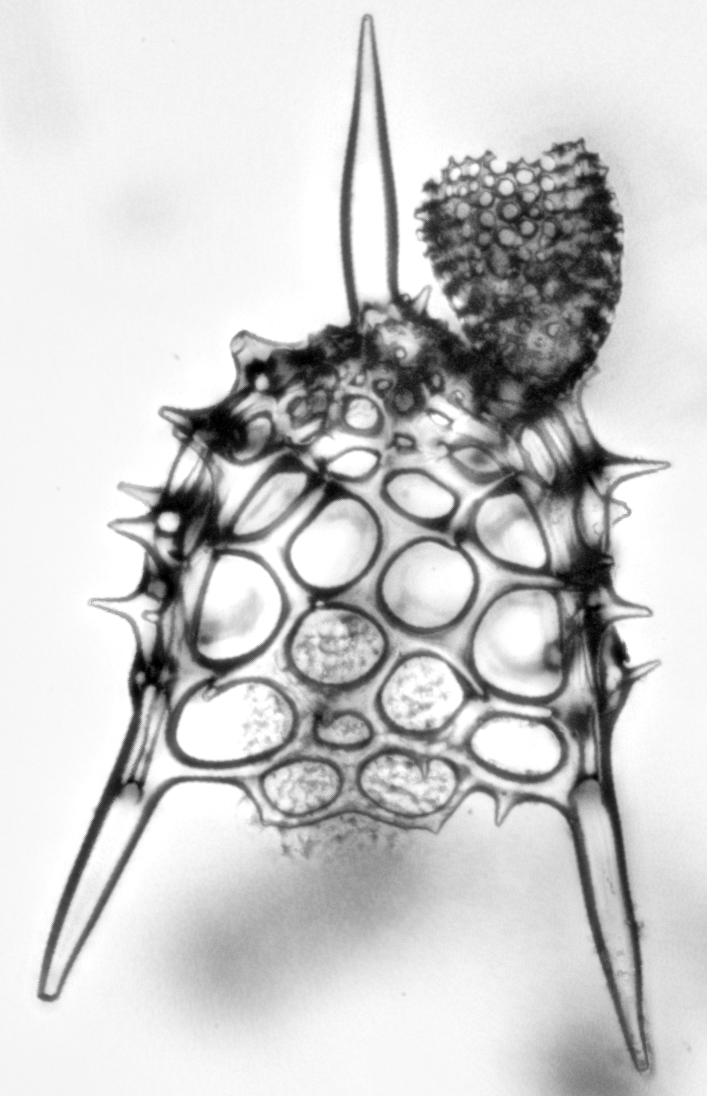
More fun with z-stacking: Lamprotripus mawsoni (Riedel 1958), Holocene, Southern Ocean. #Radiolaria #FossilFriday
2021-11-19 15:48:40
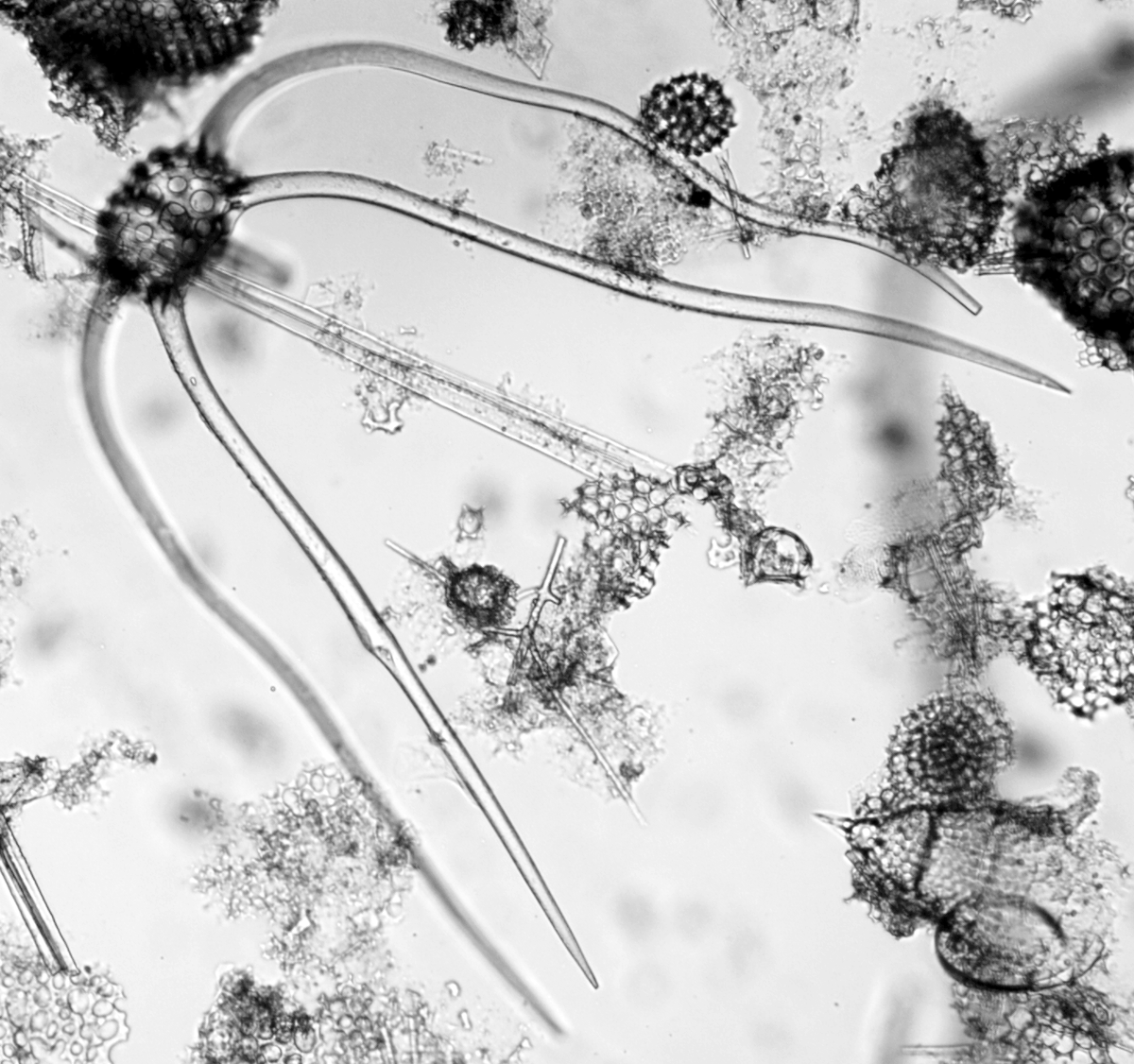
A tentacular trissocyclid (#Radiolaria): Dorcadospyris quadripes Moore 1971 (I think?) from the early Oligocene of the Equatorial Pacific (ODP Site 1218A) #FossilFriday
2022-06-17 12:21:16
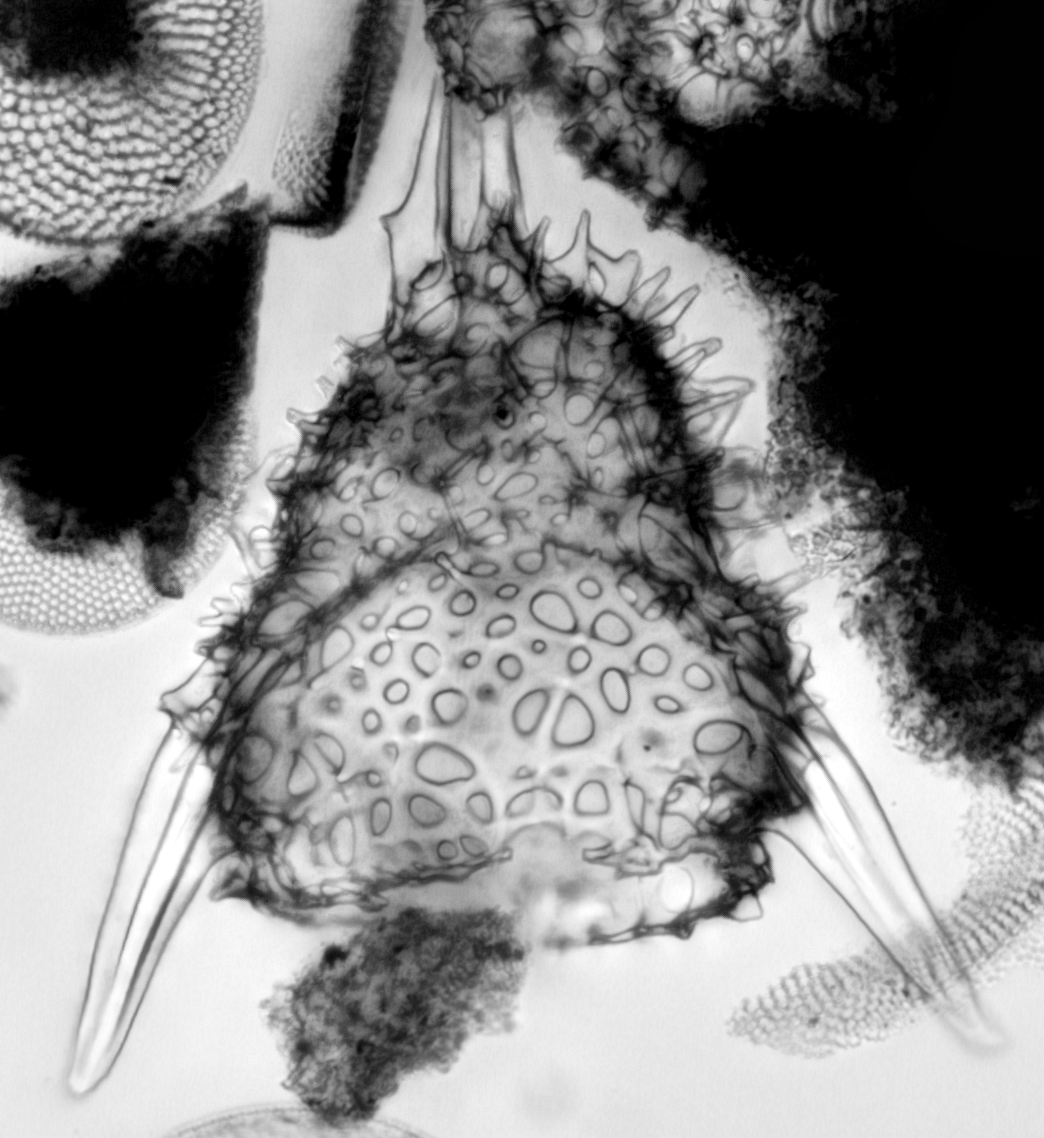
Amazing cephalic wall texture on that plagiacanthid specimen (probably belonging to genus Spongomelissa or Corythomelissa). Found in the Early Oligocene of the Falkland Plateau (DSDP Site 511) #Radiolaria (z-stacked pic). #FossilFriday
2022-07-15 08:59:28
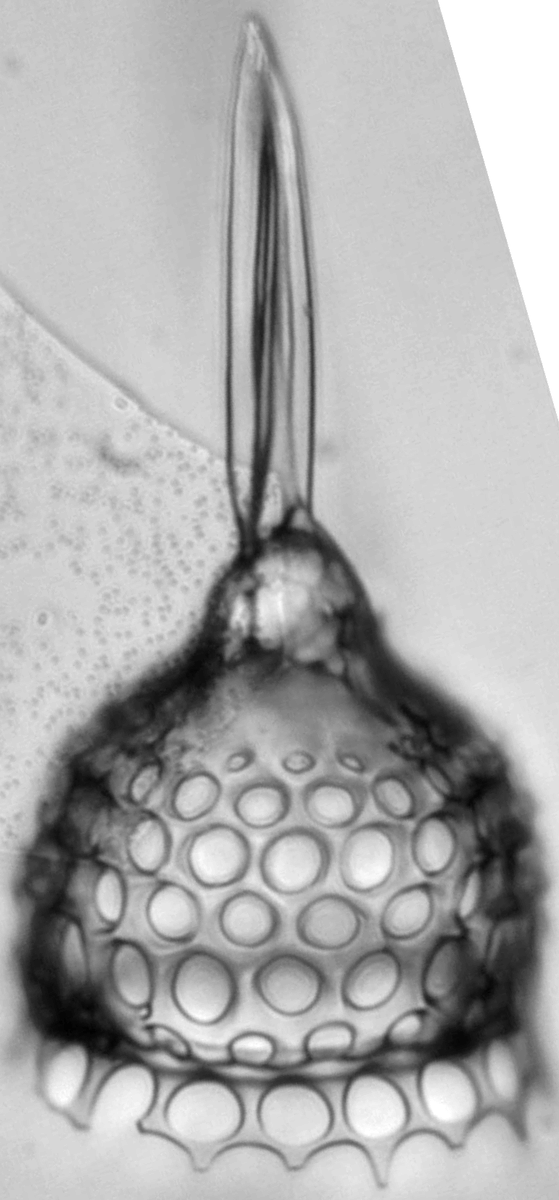
Clathrocyclas universa Clark & Campbell 1942 (Nassellaria, #Radiolaria) from the late Eocene of the Weddell Sea (ODP Site 689B). #FossilFriday
2022-08-12 12:39:20
Not flagged as #FossilFriday but still microfossil pictures:
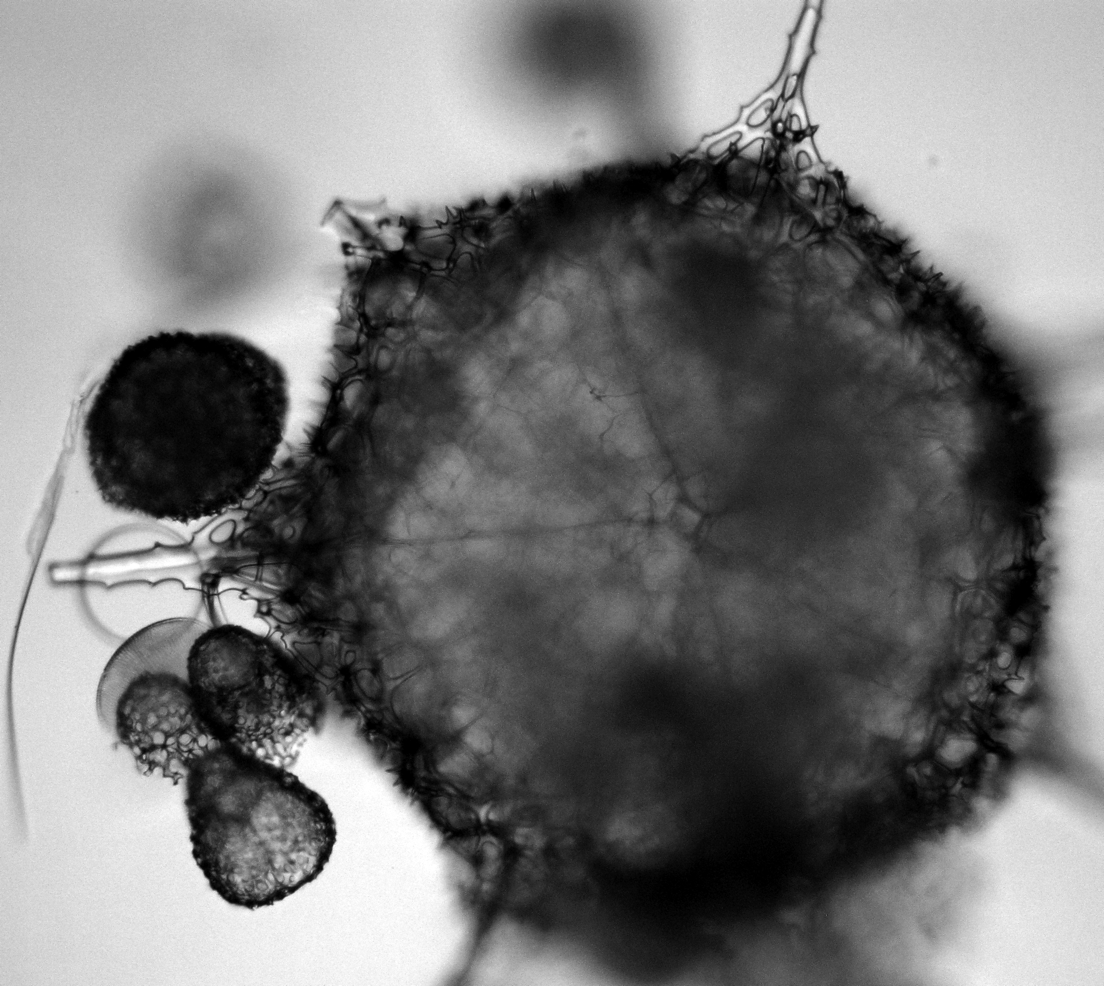
Orodapis? ferrealuma Renaudie & Lazarus 2012 (Radiolaria, Late Pliocene, Kerguelen Plateau, holotype) http://t.co/KaACSFg0aP
2014-02-07 17:38:01
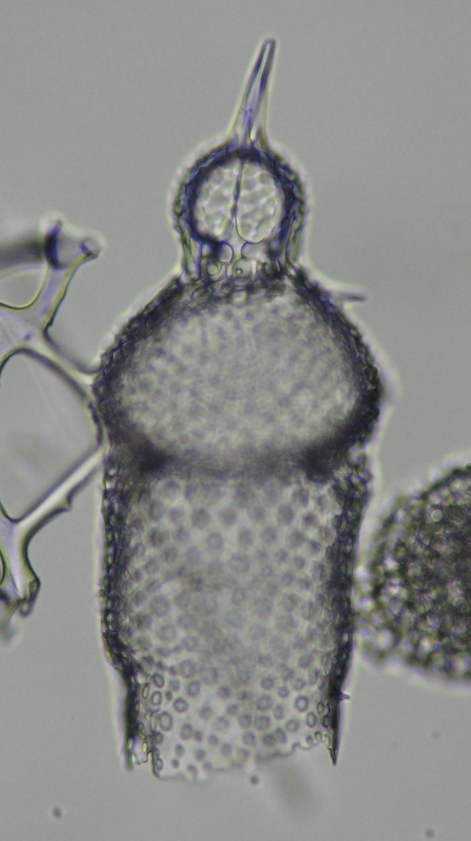
Gondwanaria deflandrei Petrushevskaya 1975 (Radiolaria, Early Miocene, Kerguelen Plateau) http://t.co/2VquVVXPpf
2014-02-14 16:22:12
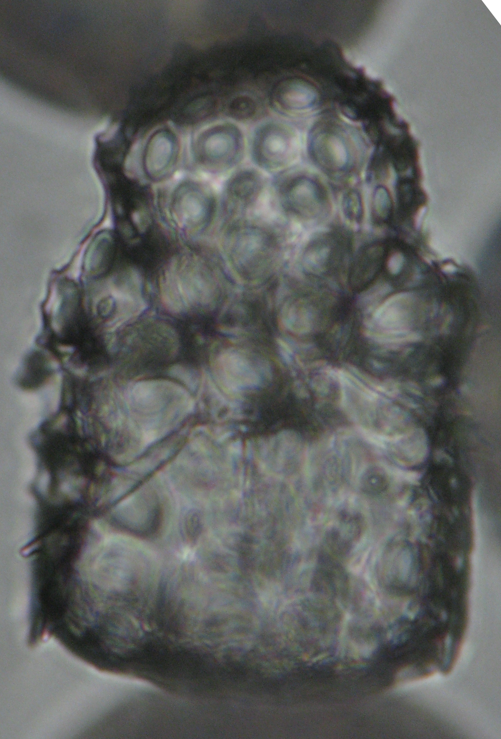
Antarctissa cylindrica Petrushevskaya 1967, focus on internal structure (Radiolaria, Late Miocene, Kerguelen Plateau) http://t.co/RS33KR1dd7
2014-02-21 14:16:02
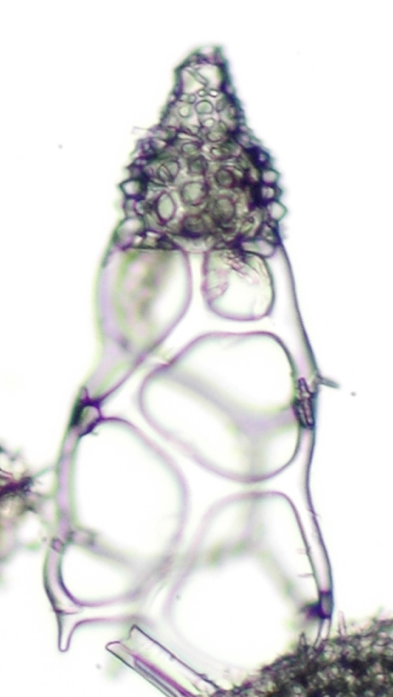
Podocyrtis goetheana (Haeckel 1887); Eocene radiolarian from the Equatorial Atlantic. http://t.co/N1fqk9oChP
2014-02-28 13:36:31
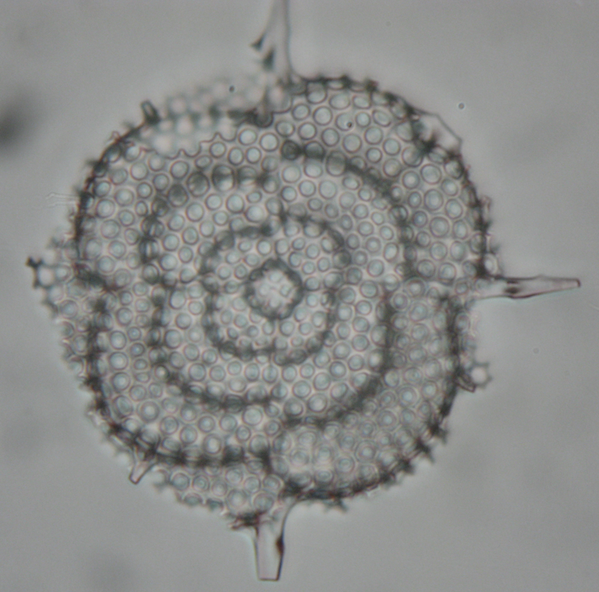
Stylodictya ocellata Ehrenberg 1873 (Radiolaria, Spumellaria, Early Miocene, Kerguelen Plateau) http://t.co/BIIYadXSWL
2014-03-14 16:39:05
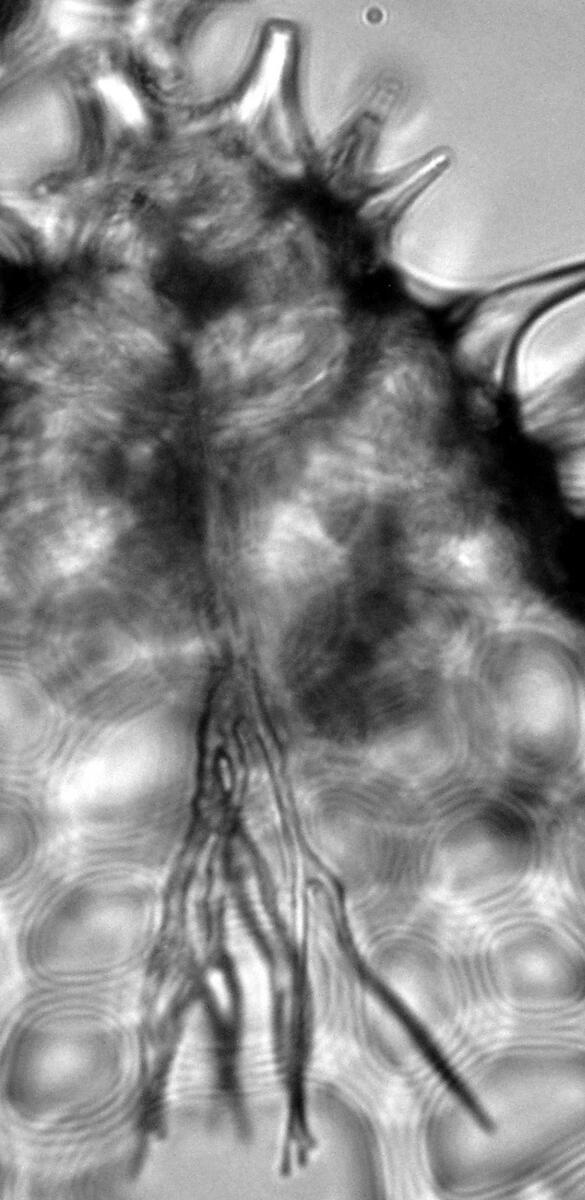
Dendritic axobate of Ceratocyrtis robustus Bjørklund 1976. http://t.co/0W9PNOPqGx
2014-03-28 15:11:37
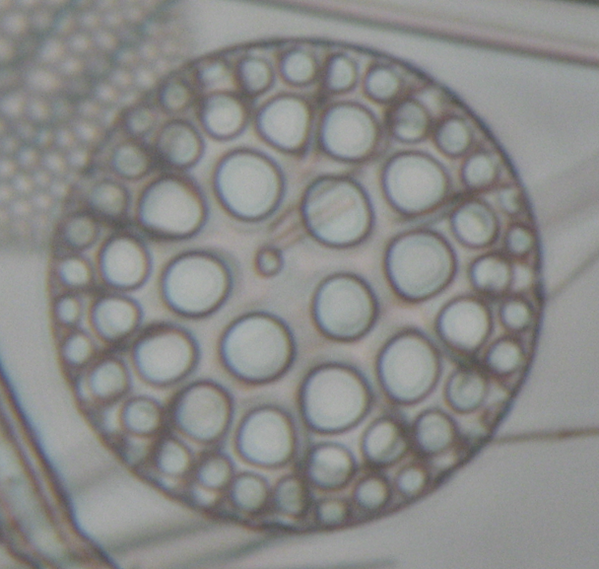
Rocella gelida (Mann) Bukry [Diatom; Early Miocene Southern Ocean] http://t.co/J2LyXyfP4D
2014-04-04 14:48:43

Naviculopsis constricta (Schulz) Frenguelli 1940 (Silicoflagellate, Early Oligocene, Southern Atlantic) http://t.co/4AhdwFv62u
2014-05-09 11:58:22
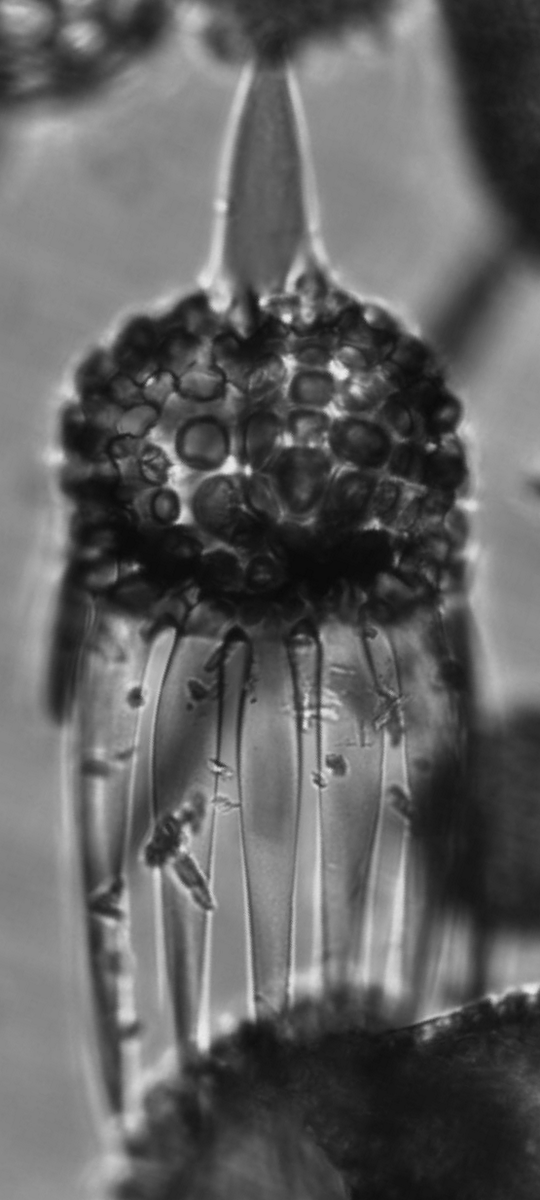
Dorcadospyris argisca (Ehrenberg)? (Radiolaria, from the Middle Eocene of the tropical Atlantic, ODP Site 1260) http://t.co/BjNm7b4X7p
2014-08-22 16:57:51

Eusyringium fistuligerum (Ehrenberg, 1873): Radiolaria, equatorial Atlantic, Middle Eocene. http://t.co/26HOSjbGE1
2014-09-18 10:35:56
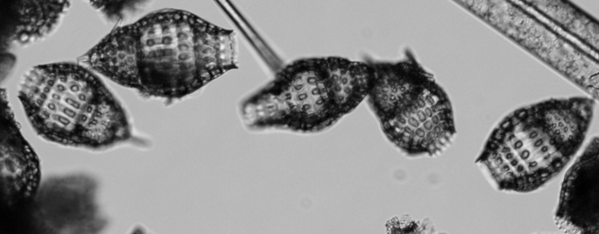
A bunch of Buryella tridica O'Connor 2001 from the Paleocene South Pacific. http://t.co/DEMBeH3OEp
2014-10-17 10:20:44
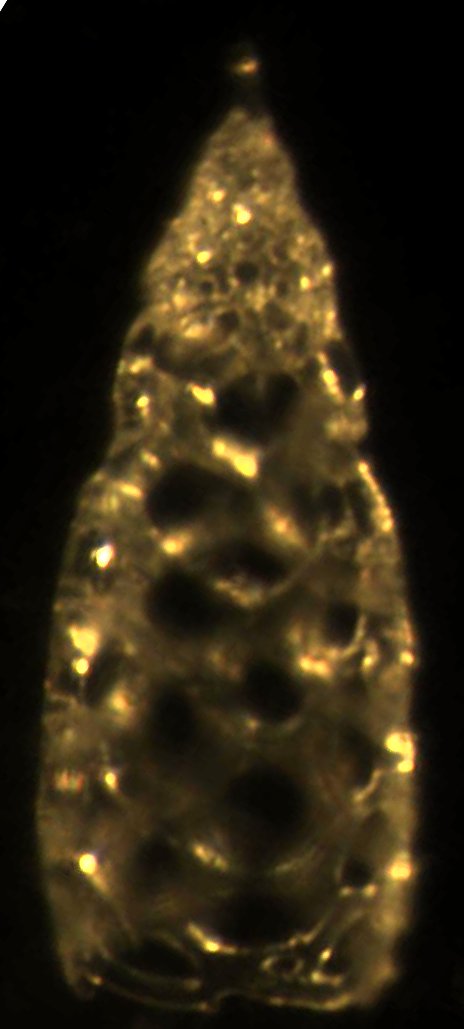
Still learning to take pictures on the stereomicroscope, but here's Podocyrtis chalara from the mid-Eocene equatorial Pacific.
2016-10-12 14:16:08
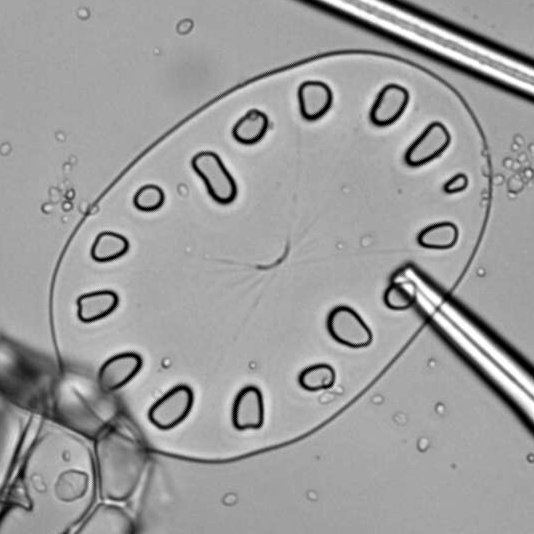
I keep bumping into this little thingy all over the place (here middle Miocene; South Pacific). Some kind of large, elliptical Liostephania?
2017-02-10 10:26:11
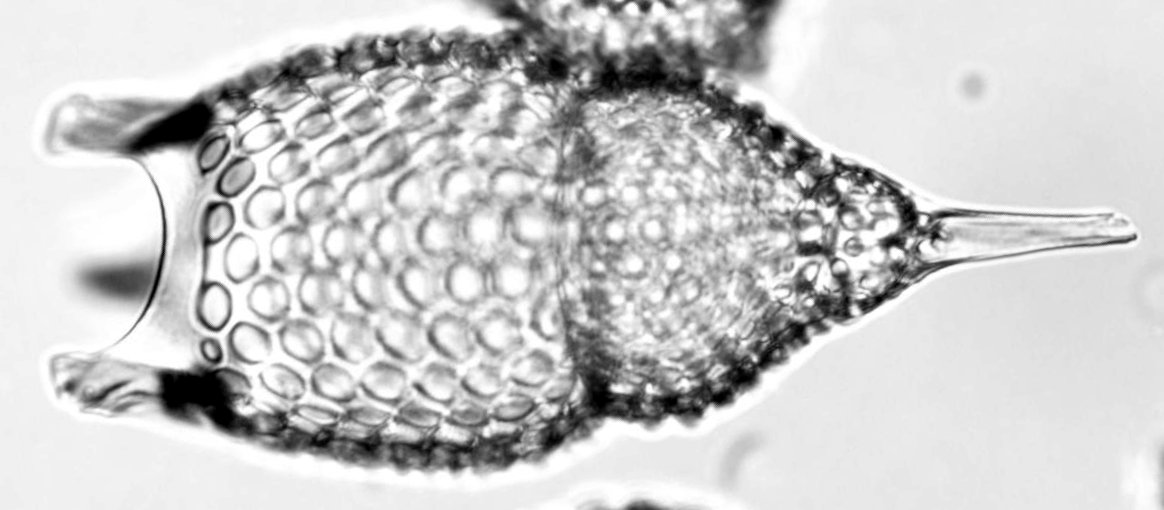
A little Thyrsocyrtis rhizodon Ehrenberg 1873 (here from the Eocene of the tropical Indian Ocean).
2017-03-03 17:47:05
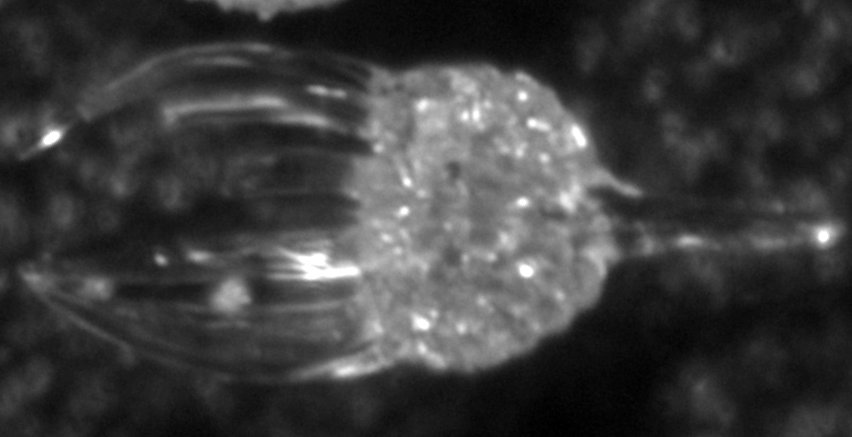
4 years ago I tweeted this little critter: https://t.co/tWtTcDePQu Here is that species again, this time on a stereomicroscope, as I happened to stumble onto a specimen 2 days ago. And yes I m still in the process of learning how to take good pics on stereomicroscope.
2018-05-03 08:25:42
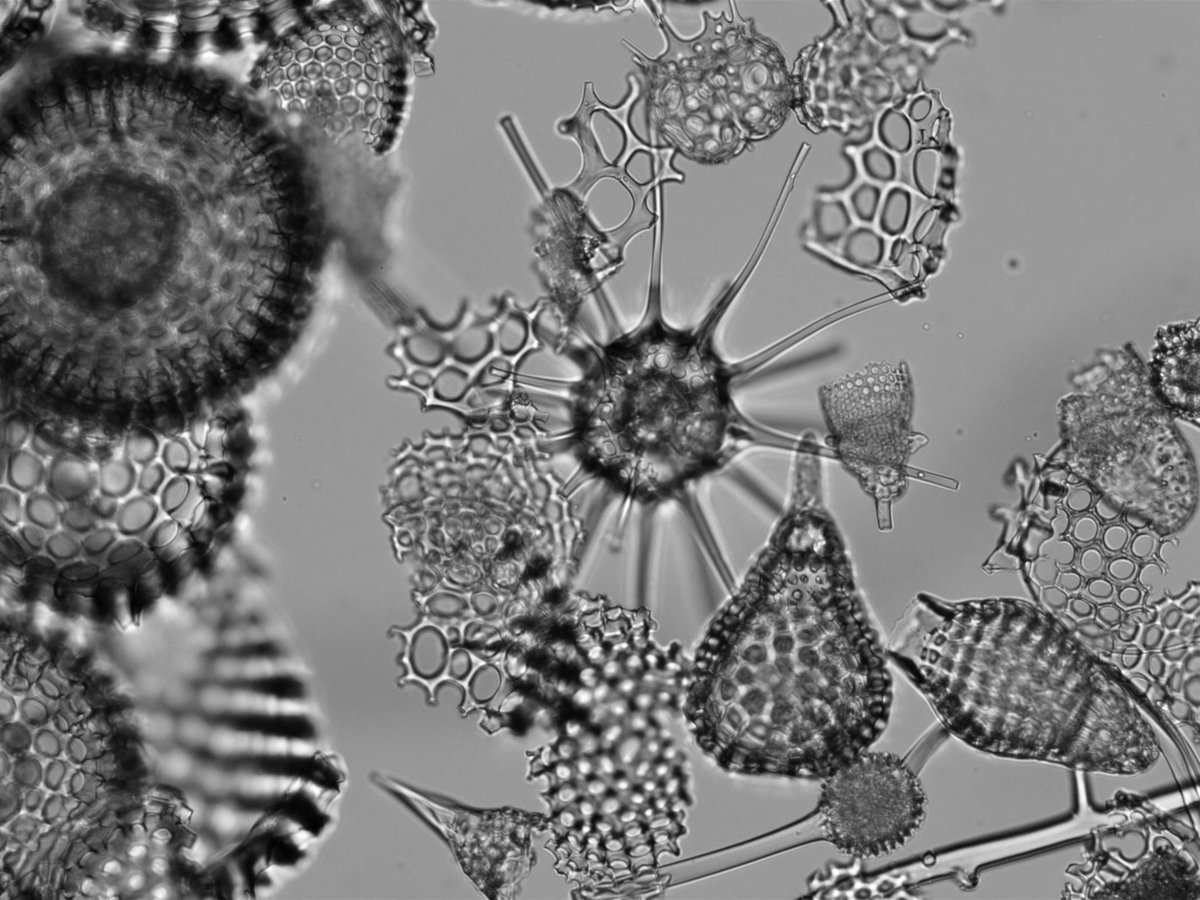
"Image may contain: plant". Facebook, you really just teach your algorithm about plankton :)
2019-07-04 13:36:42
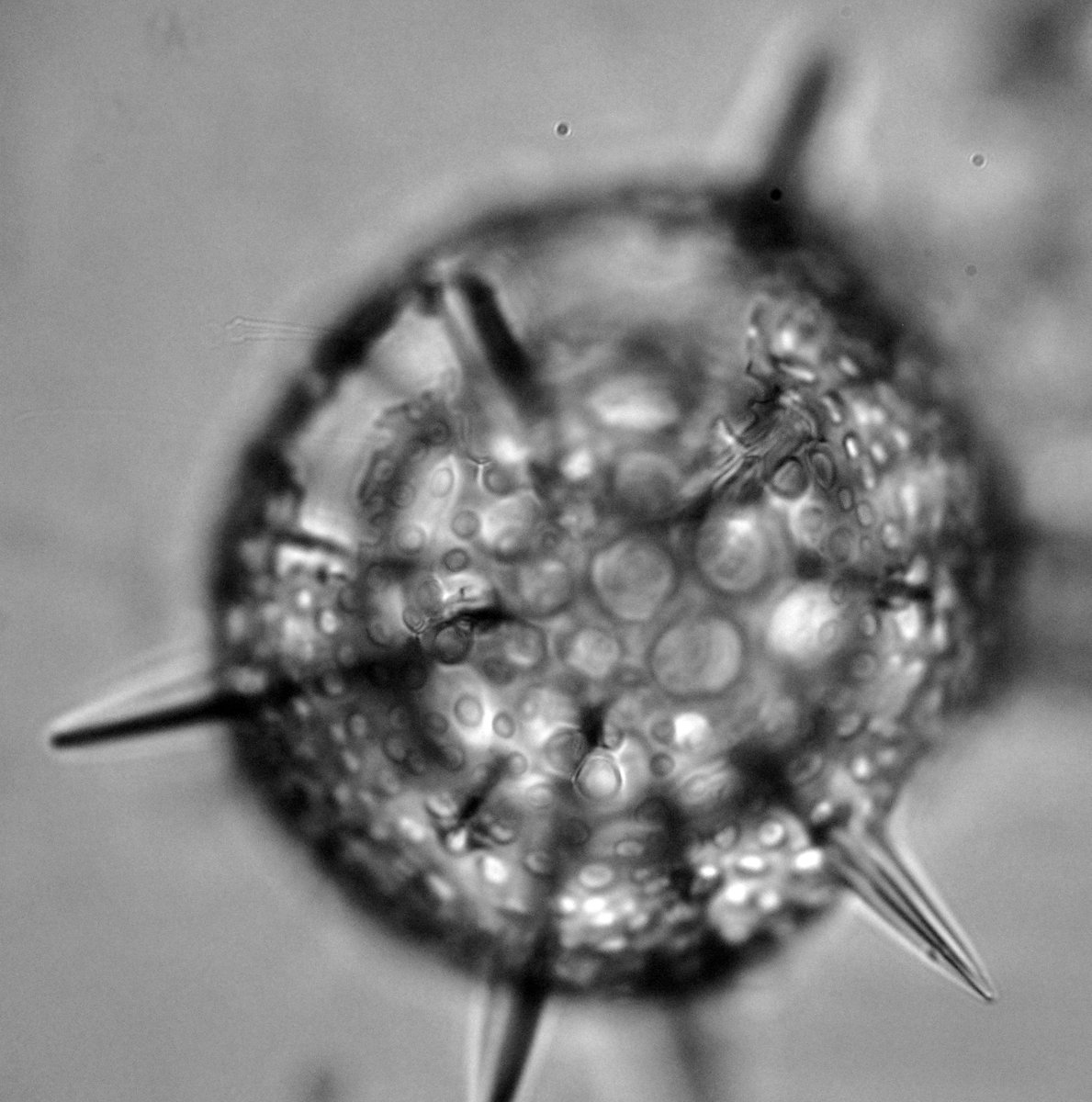
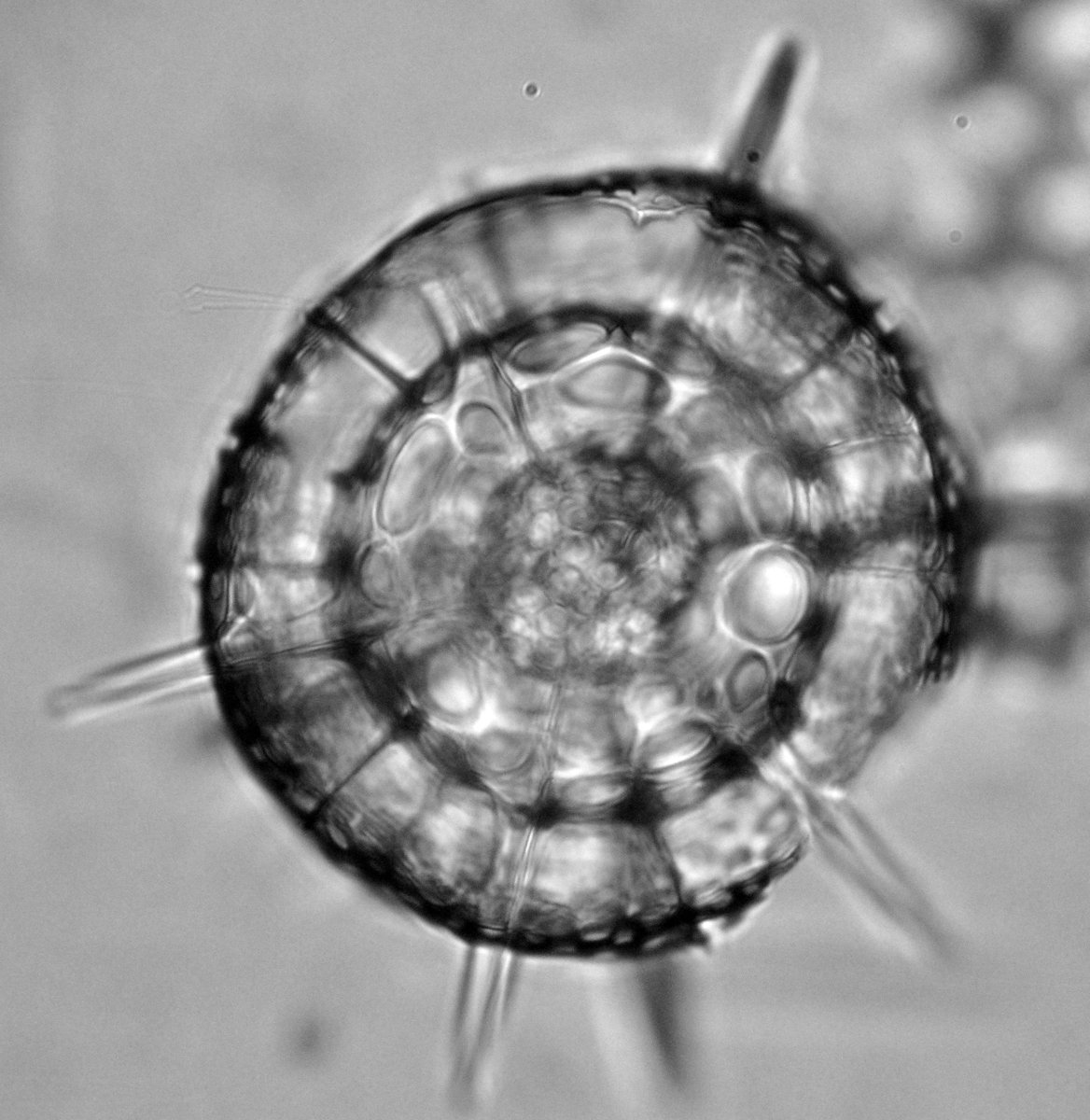
In hommage to the first ever morpho-molecular phylogeny of Spumellarians coming out as a preprint this week (https://t.co/Qm3H3CKrK2), here is an Actinomma boreale Cleve 1899 I found in the Pleistocene of ODP Site 738B (Kerguelen-Heard Plateau) years ago. #Radiolaria
2020-07-01 09:51:21
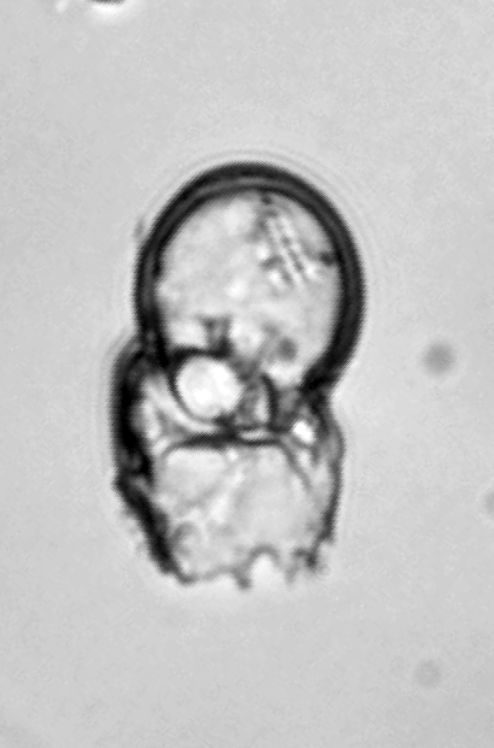
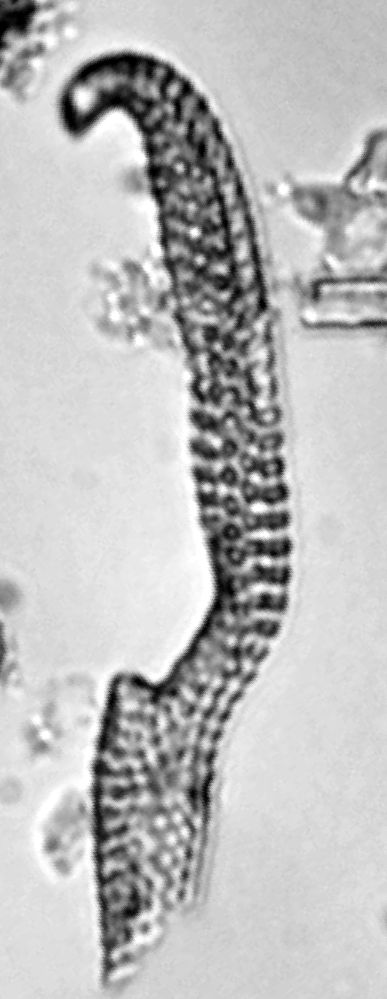
Was finally able to use my microscope again yesterday! I was welcomed back by an extra small (<40µm) Botryopera (?) (Plagiacanthidae, #Radiolaria) and the weirdest Pyxilla (Diatom) I ever saw in a late Eocene South Atlantic slide.
2020-08-05 10:57:27
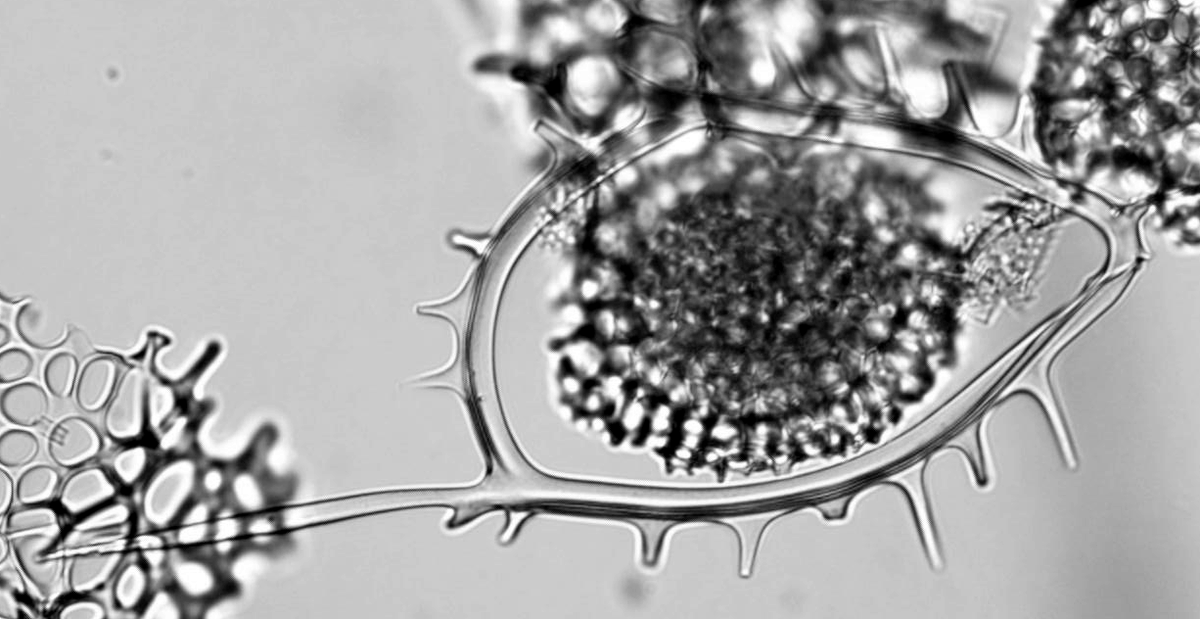
Incidentally, while rummaging through those assemblages yesterday I found that fantastic specimen of Zygocircus (#Radiolaria, Acanthodesmidae) with a long slender apical horn (quite rare in that group).
2020-09-27 10:33:45
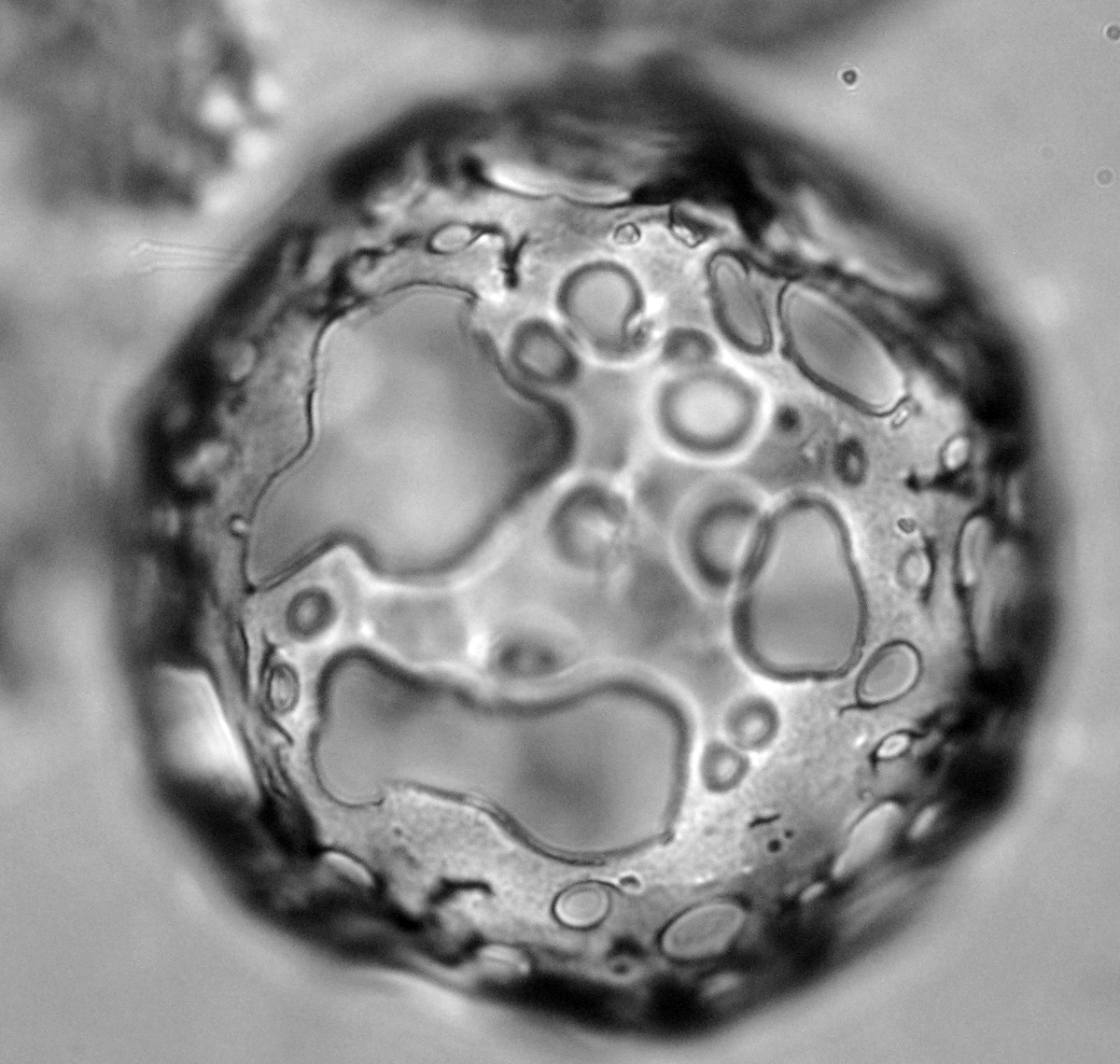
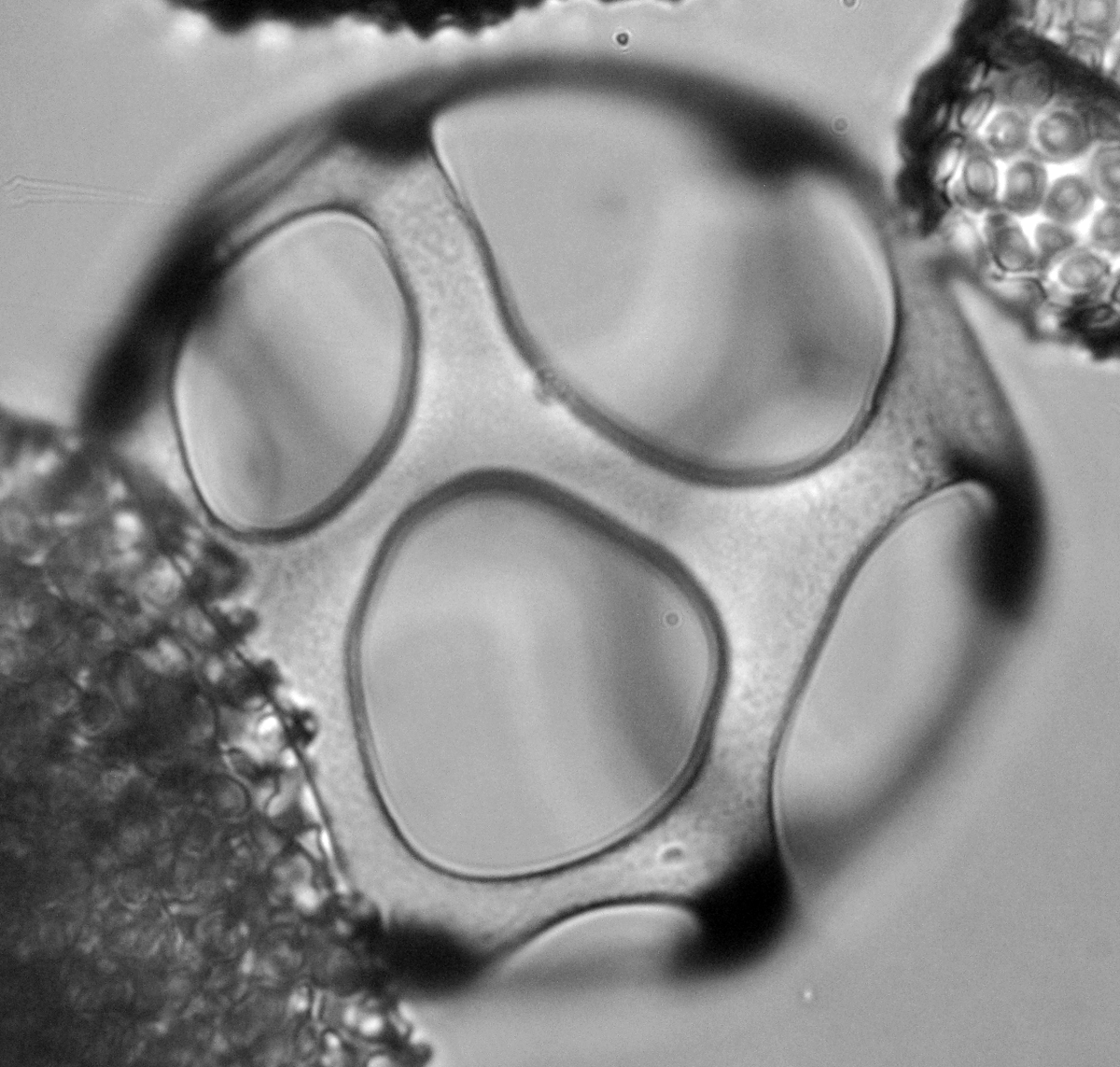
Mood:
2021-03-04 09:17:24
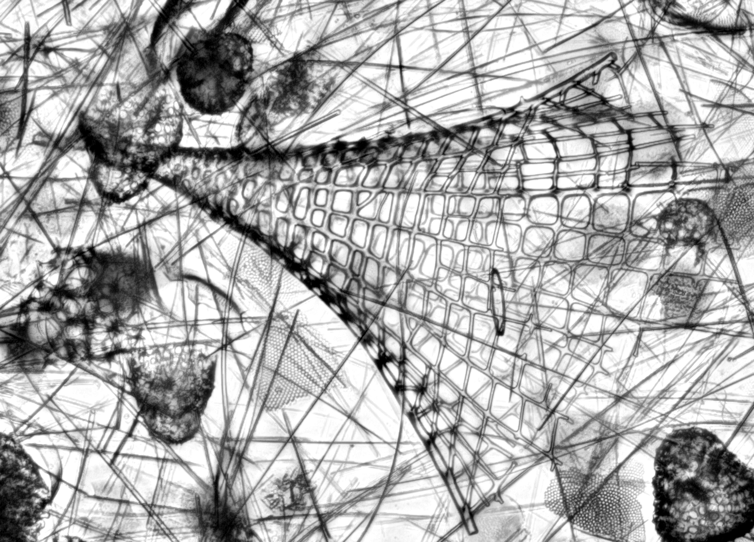
I might have gone a bit overboard with this Litharachnium tentorium Haeckel 1862 though :) Both specimens are from an Holocene sample from the eastern part of the Pacific sector of the Southern Ocean #Radiolaria
2021-10-29 10:04:33
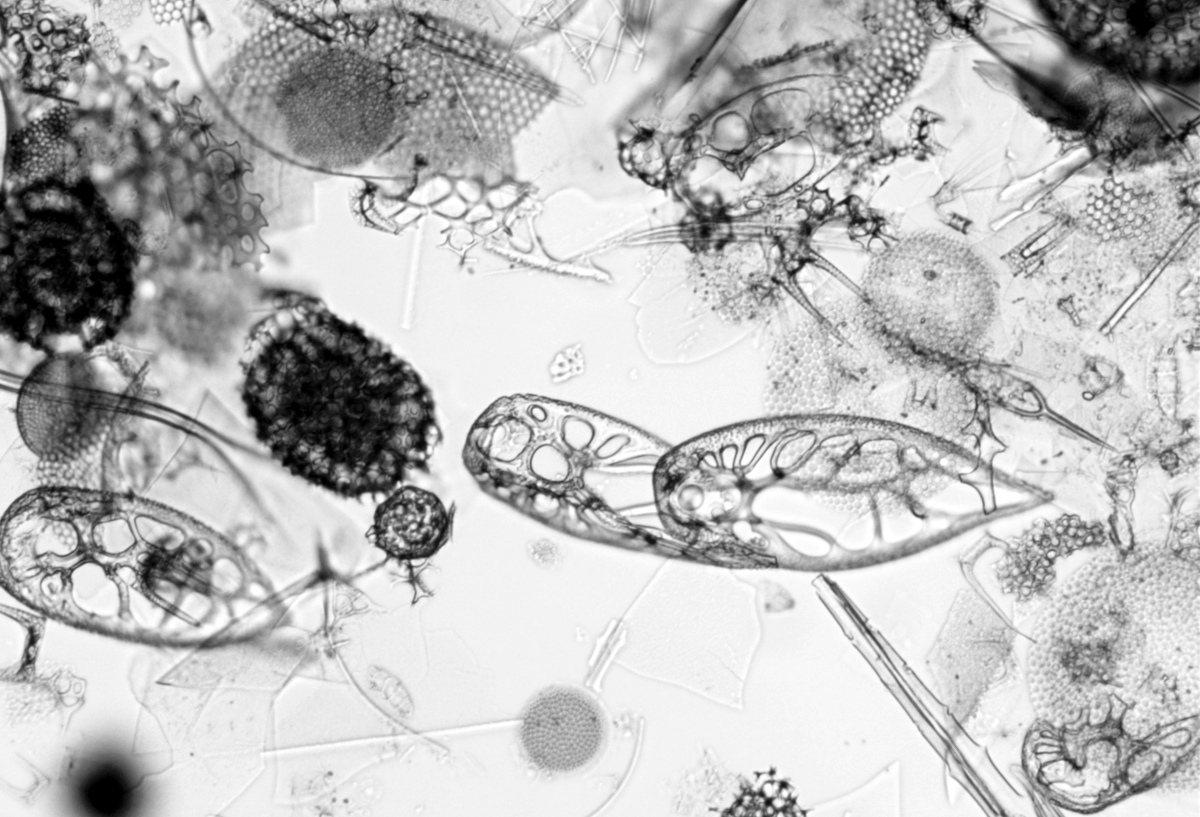
A herd of ebridians (Adonnadonna primadonna Gombos 1983) crossing a field of diatoms and radiolarians in the Late Eocene of the Antarctic Ocean (ODP Site 689).
2022-06-15 10:09:31
